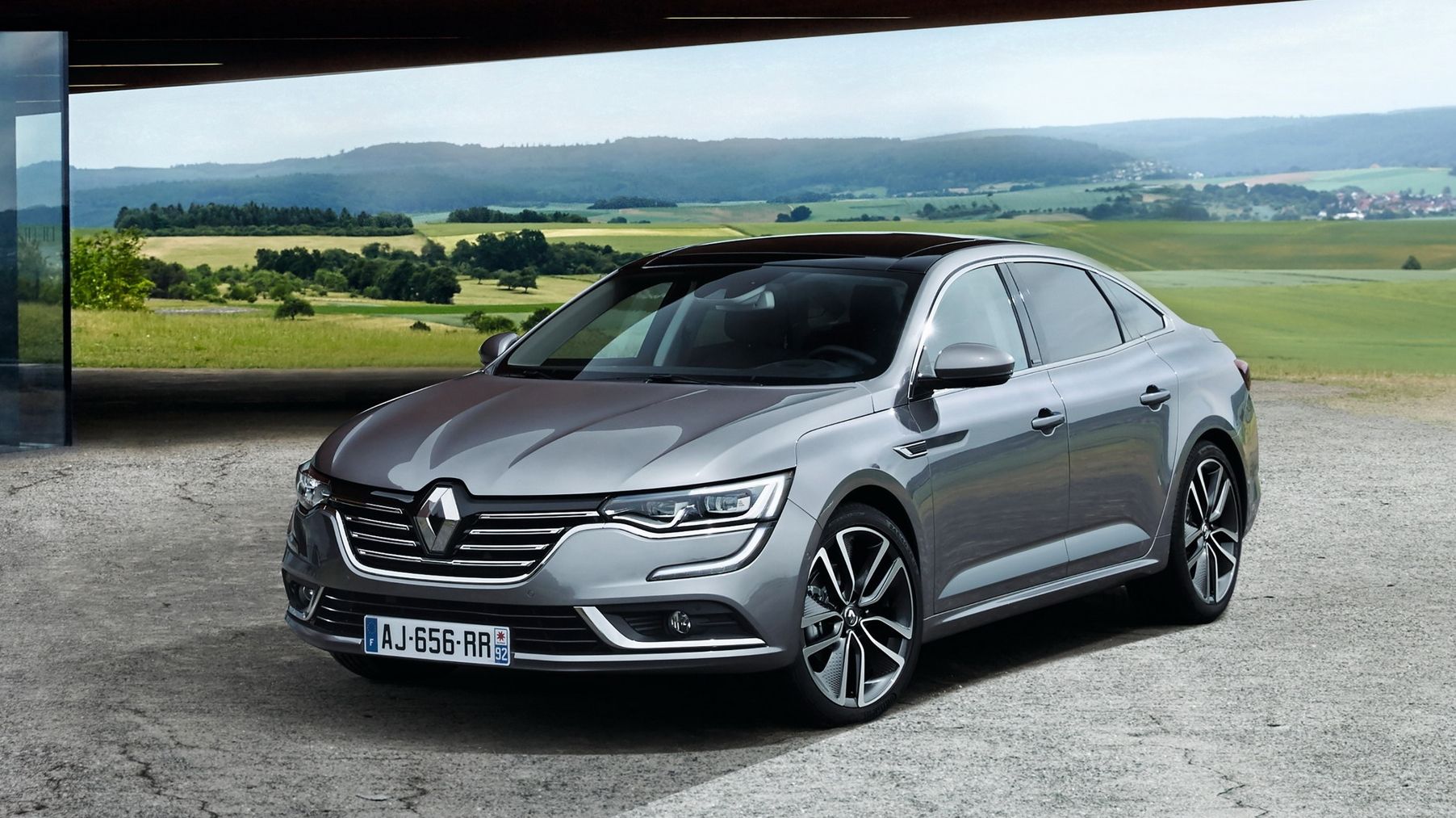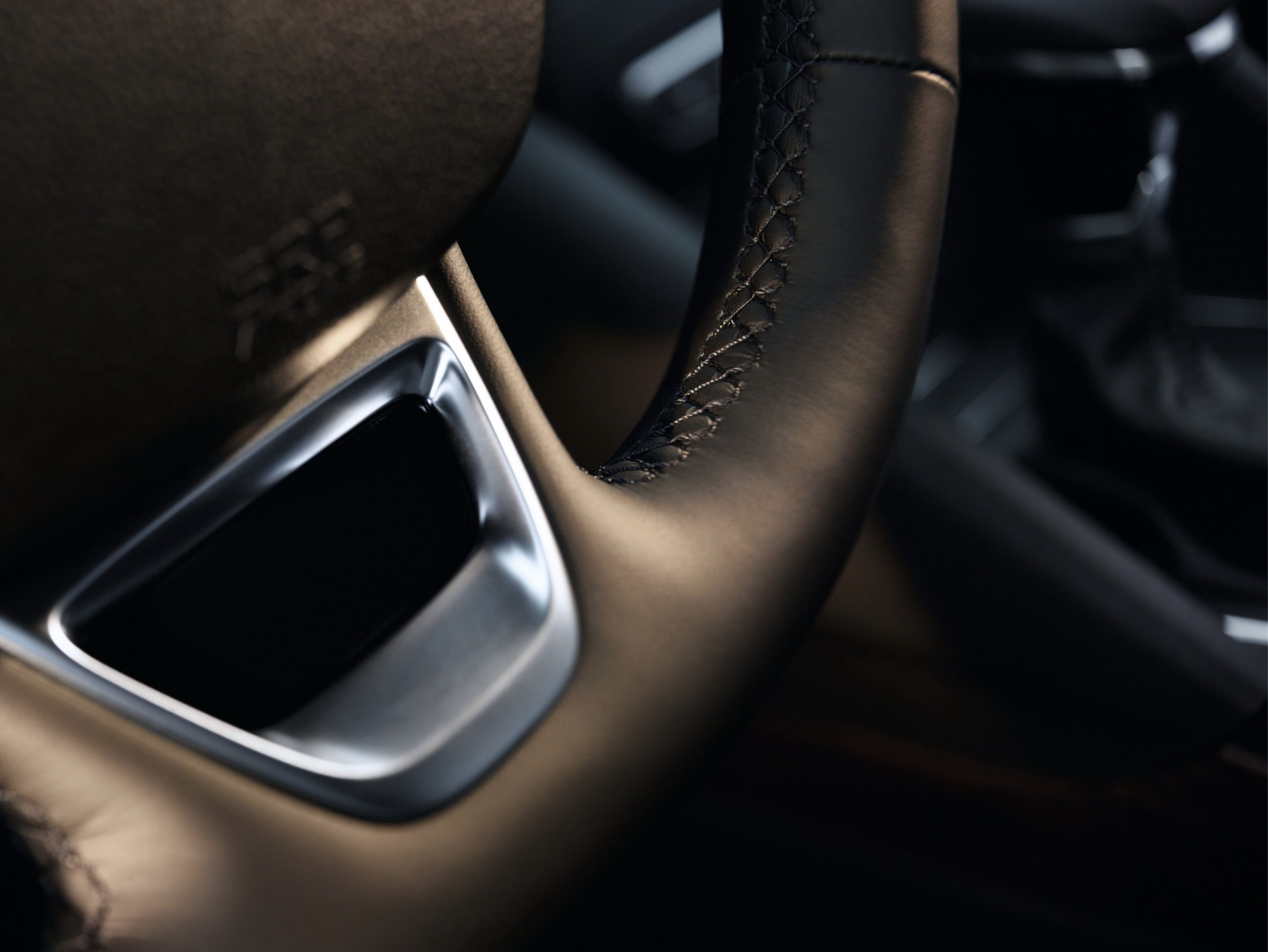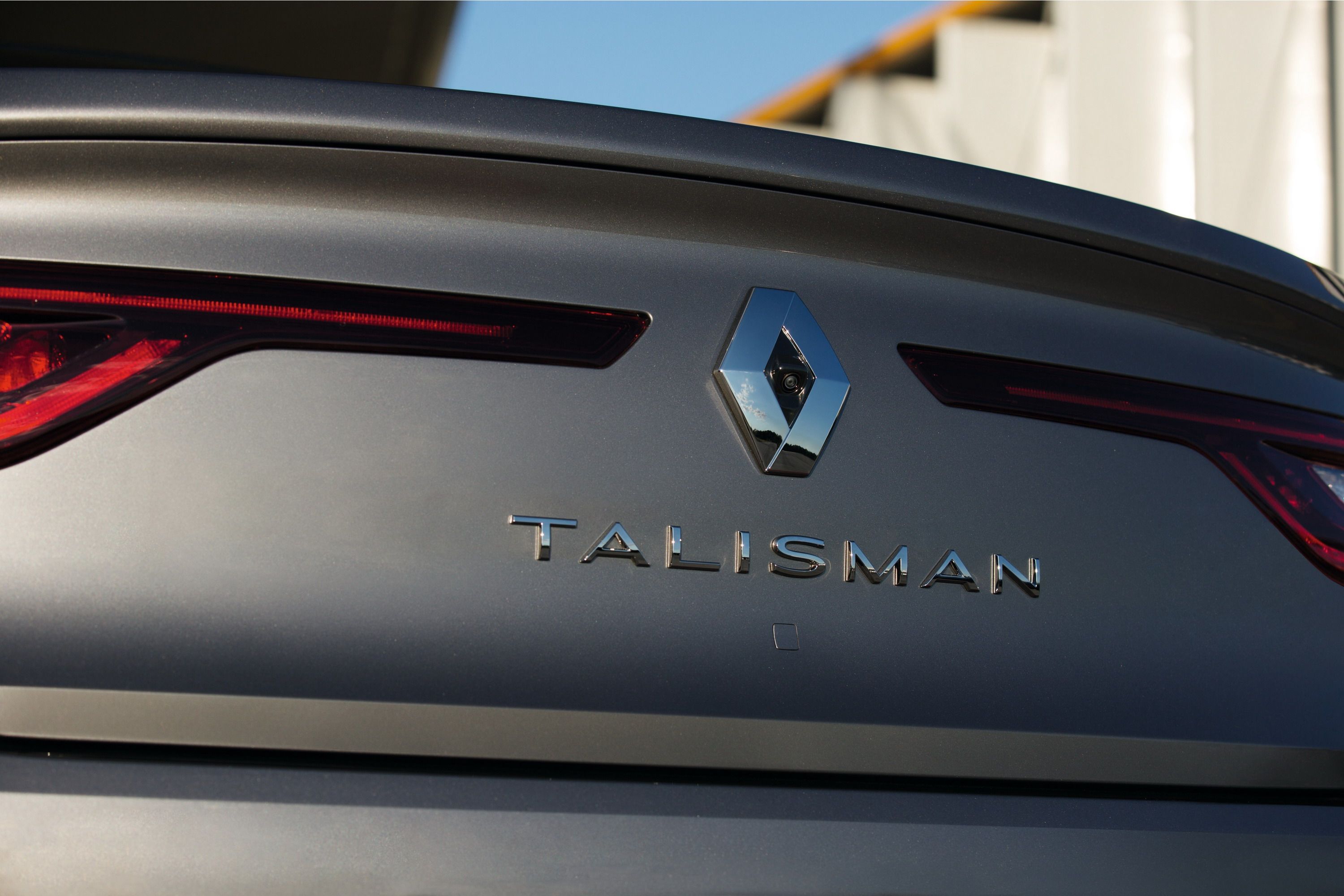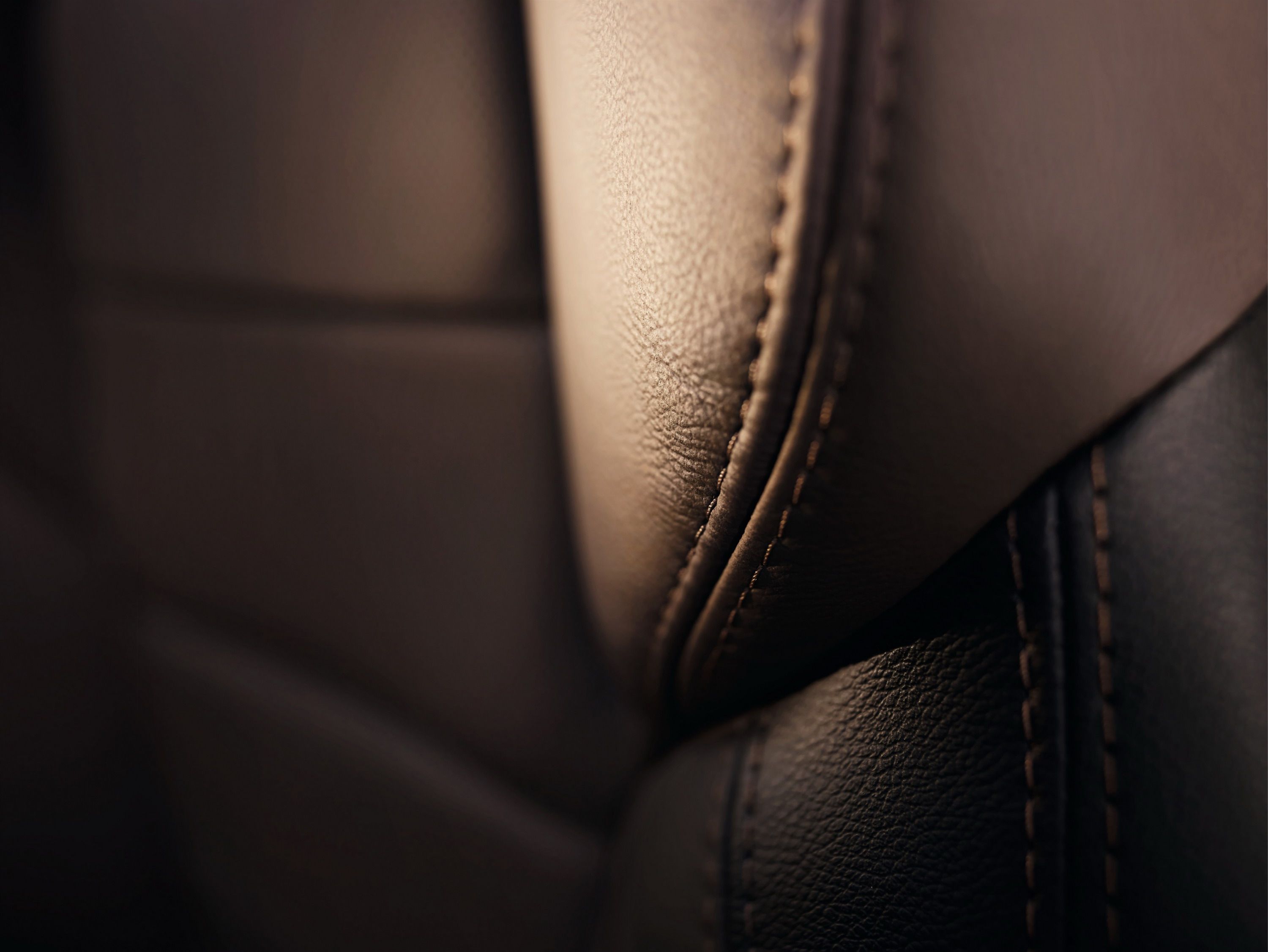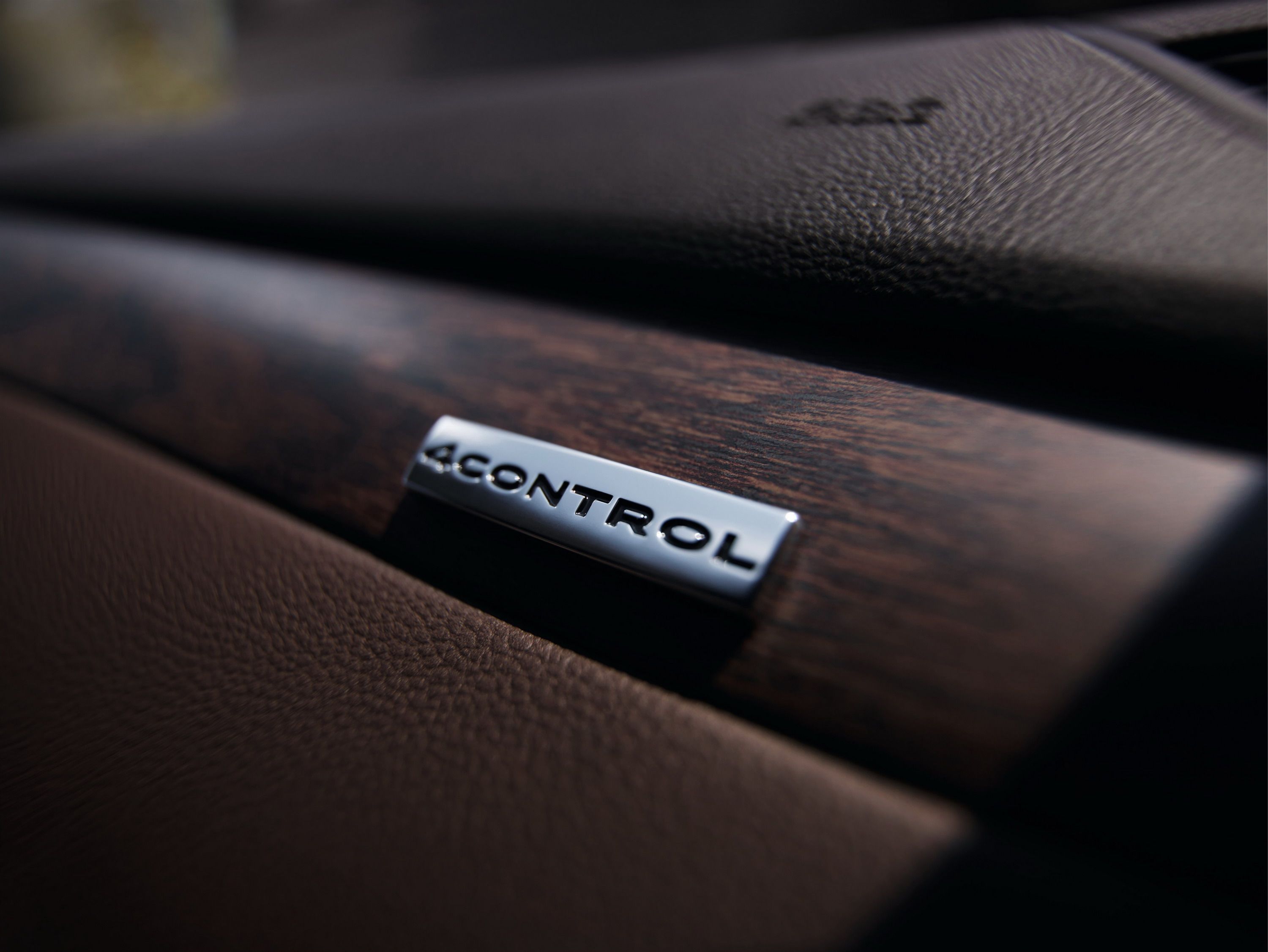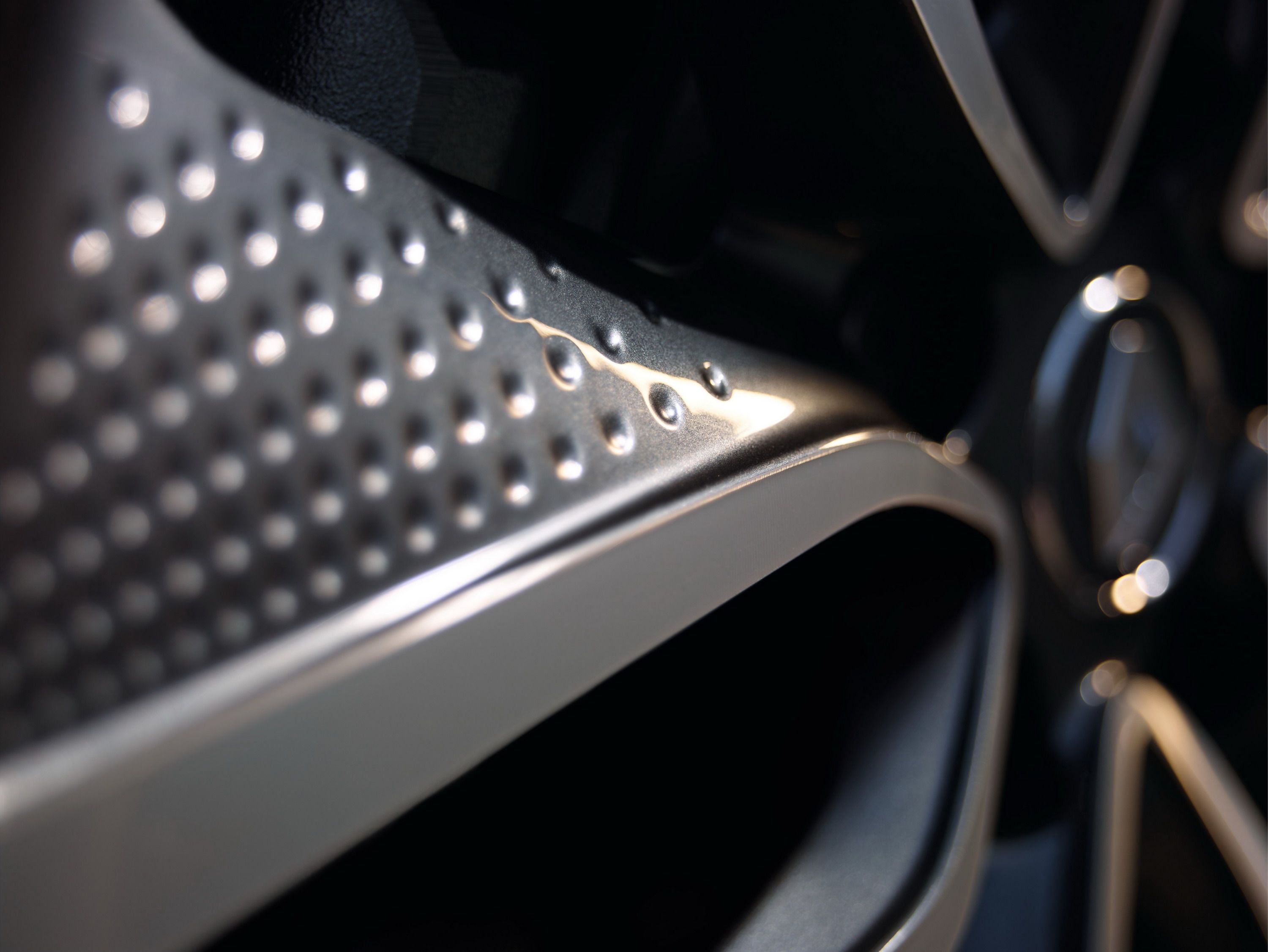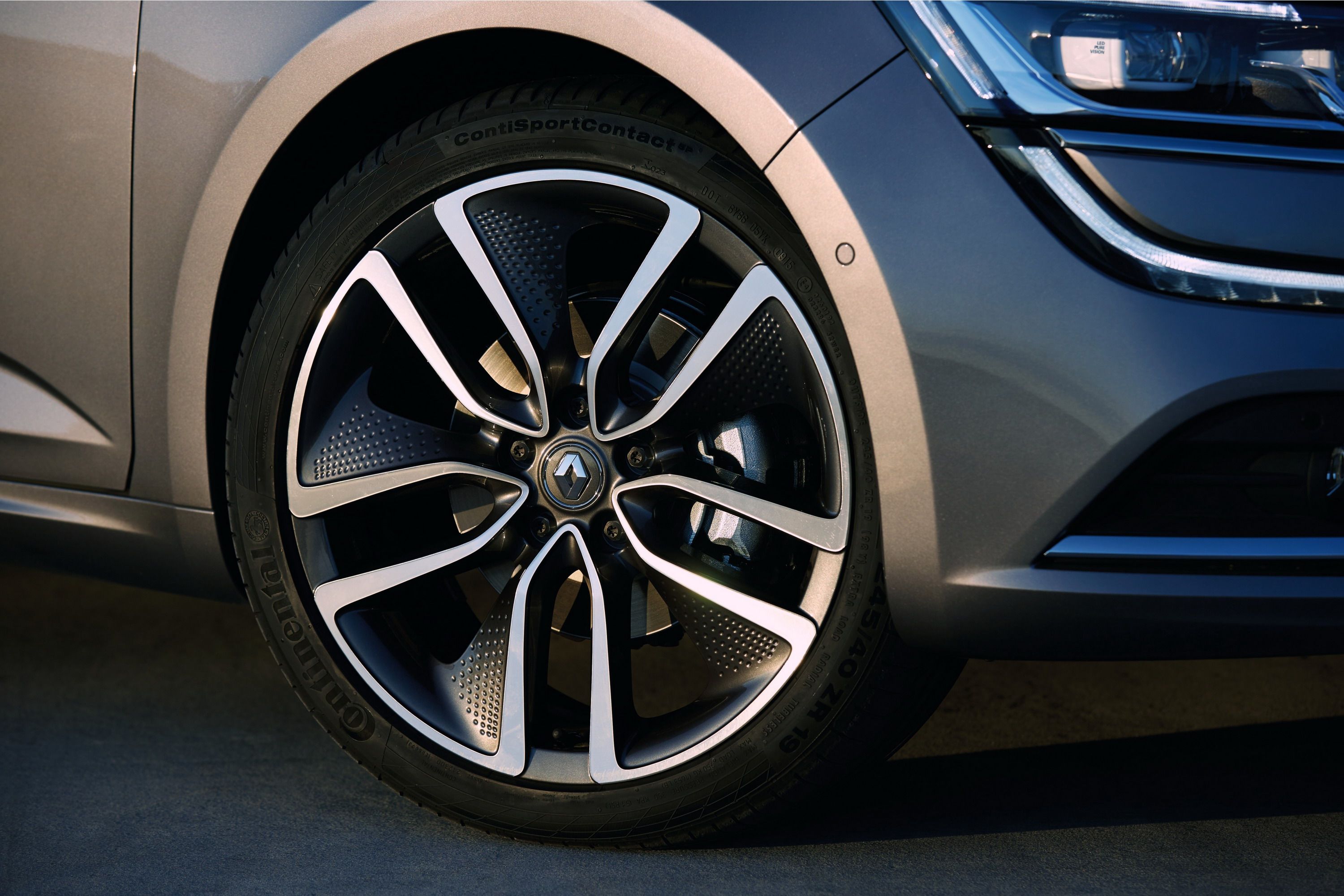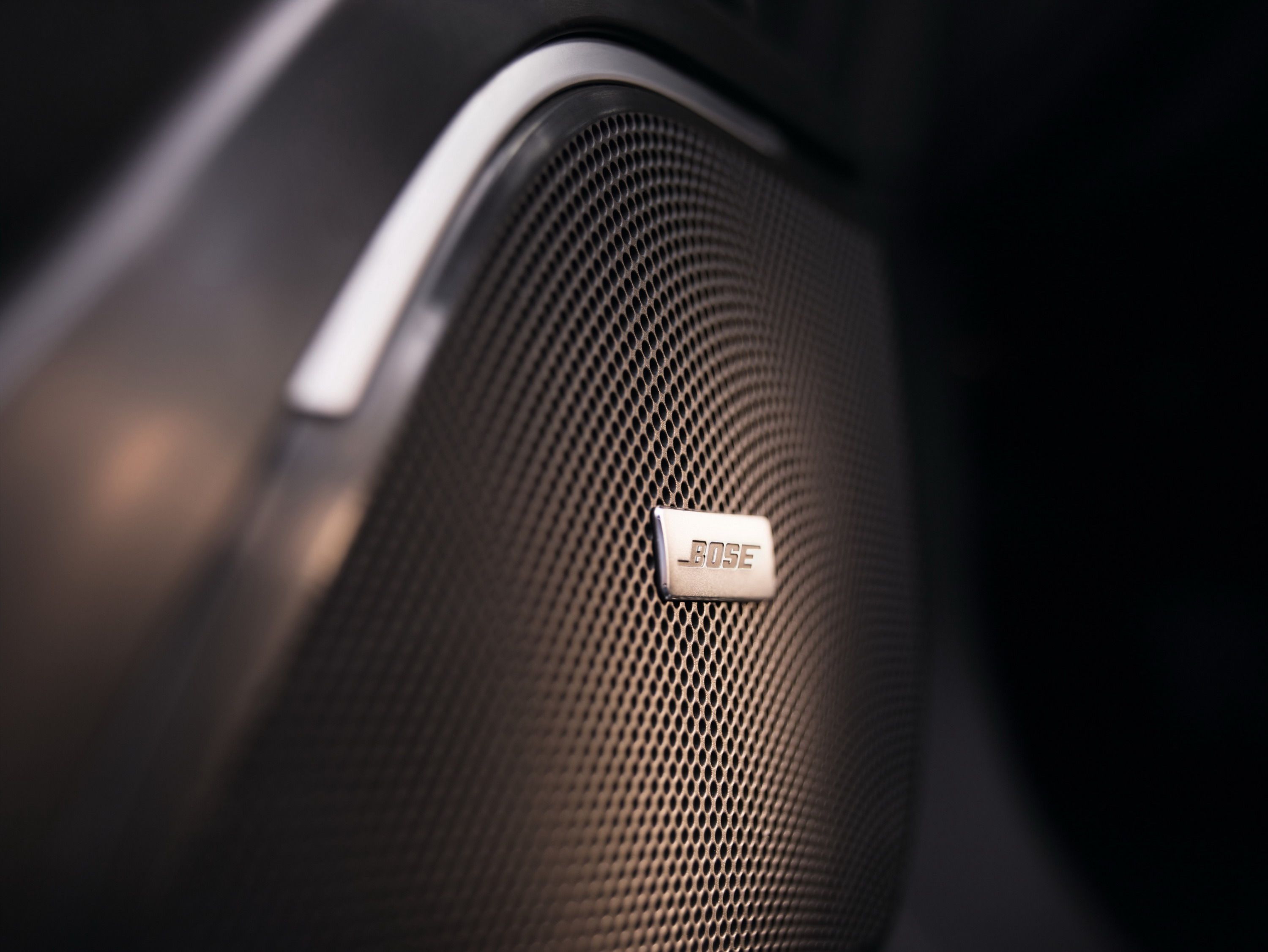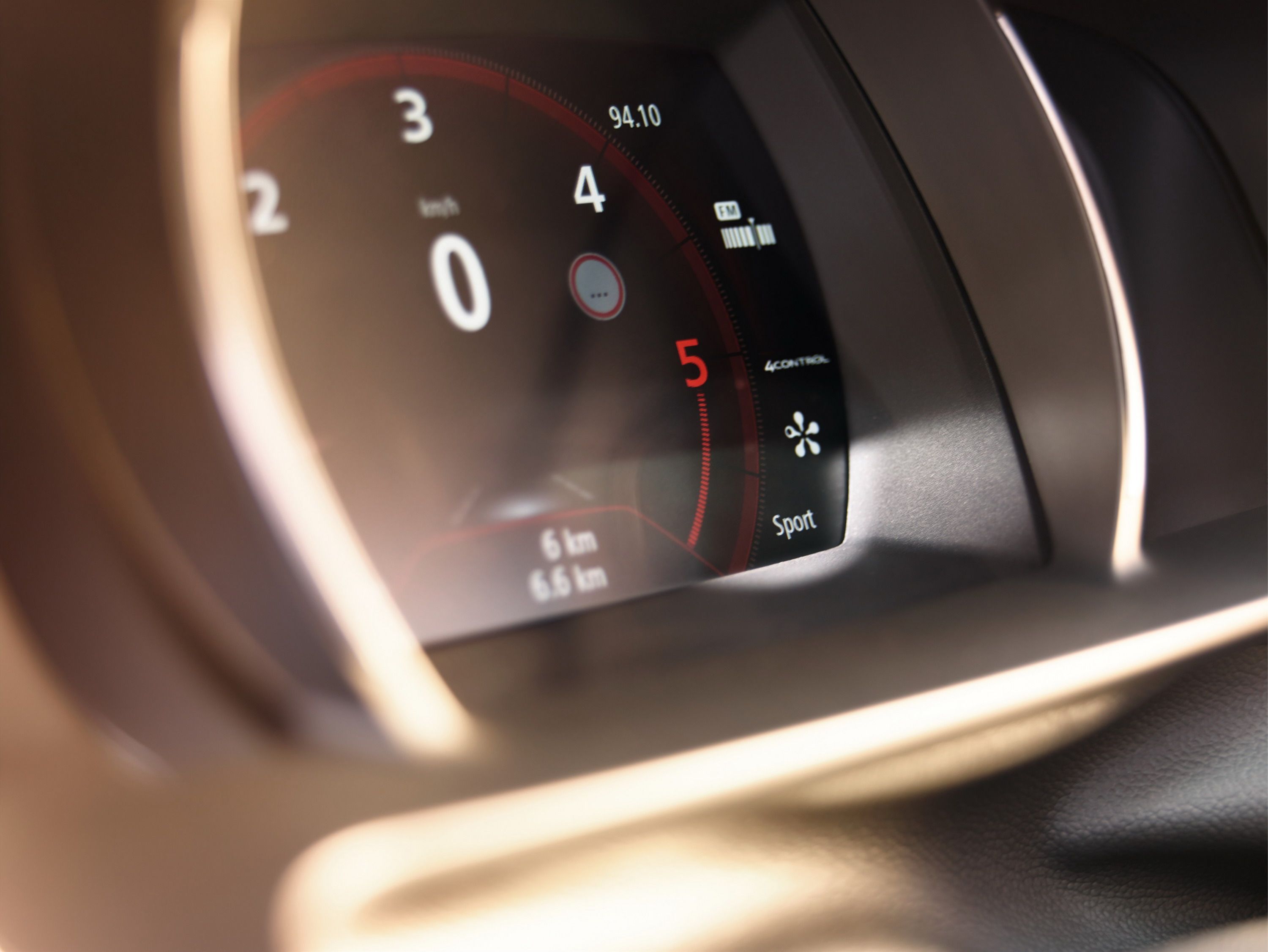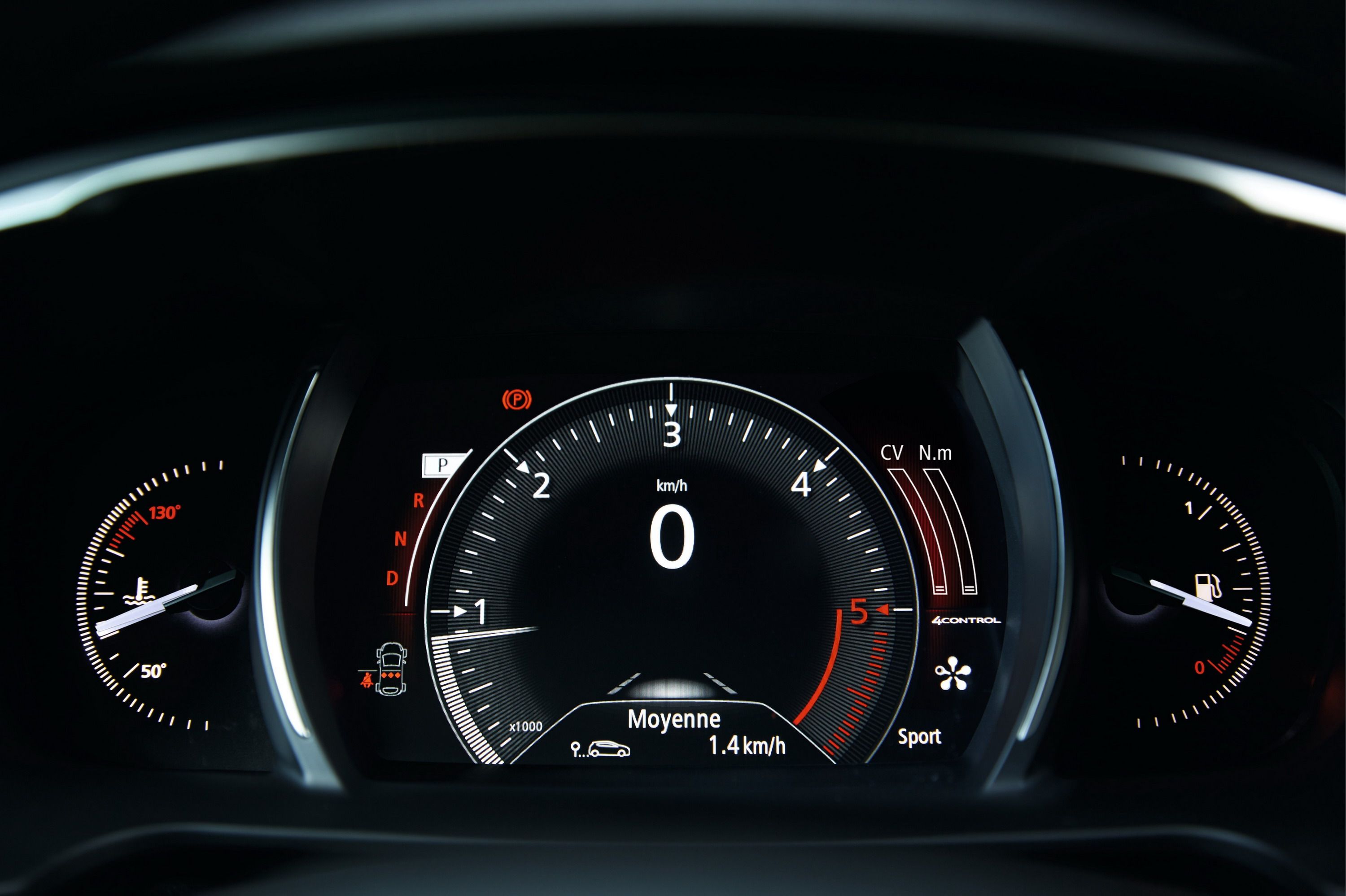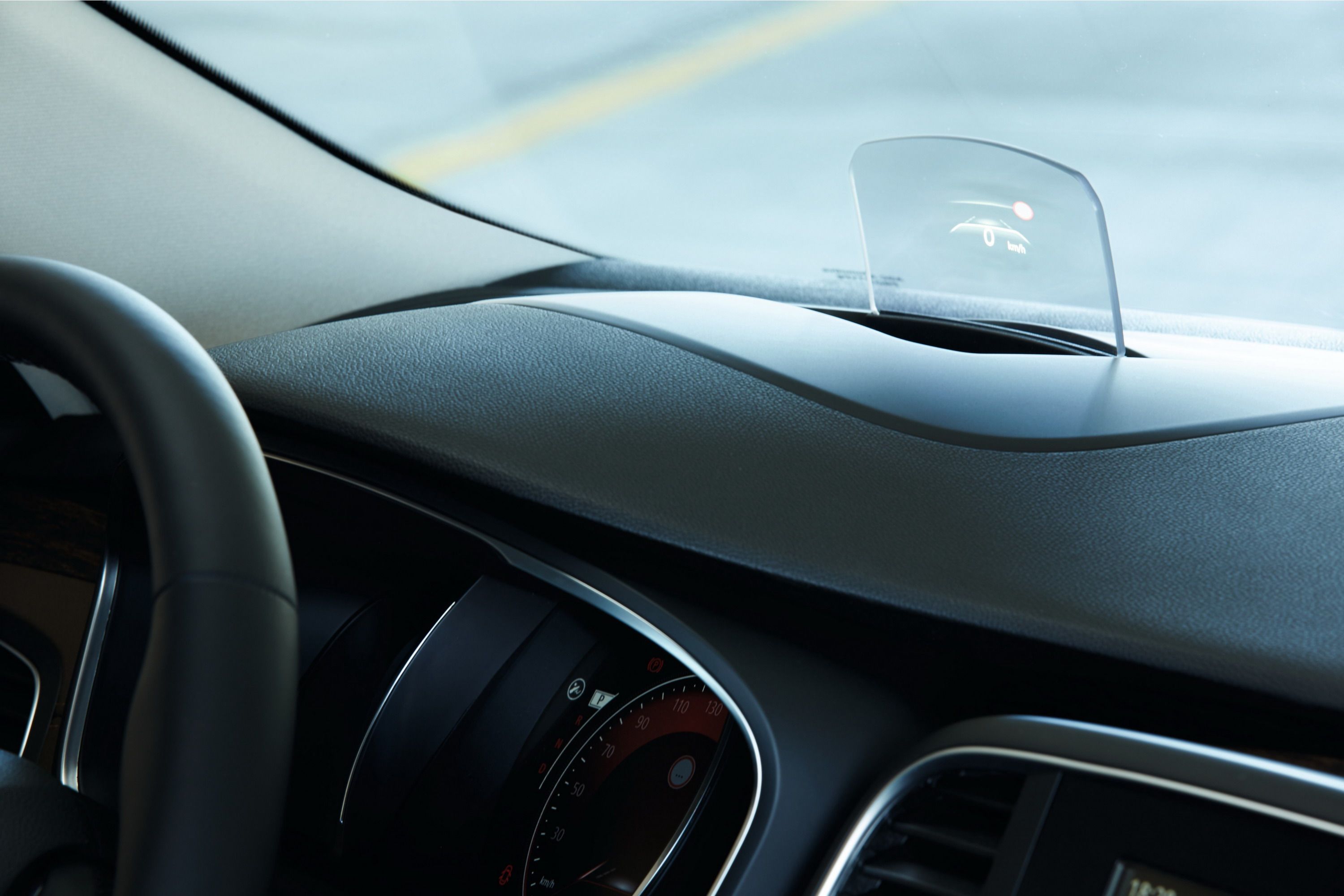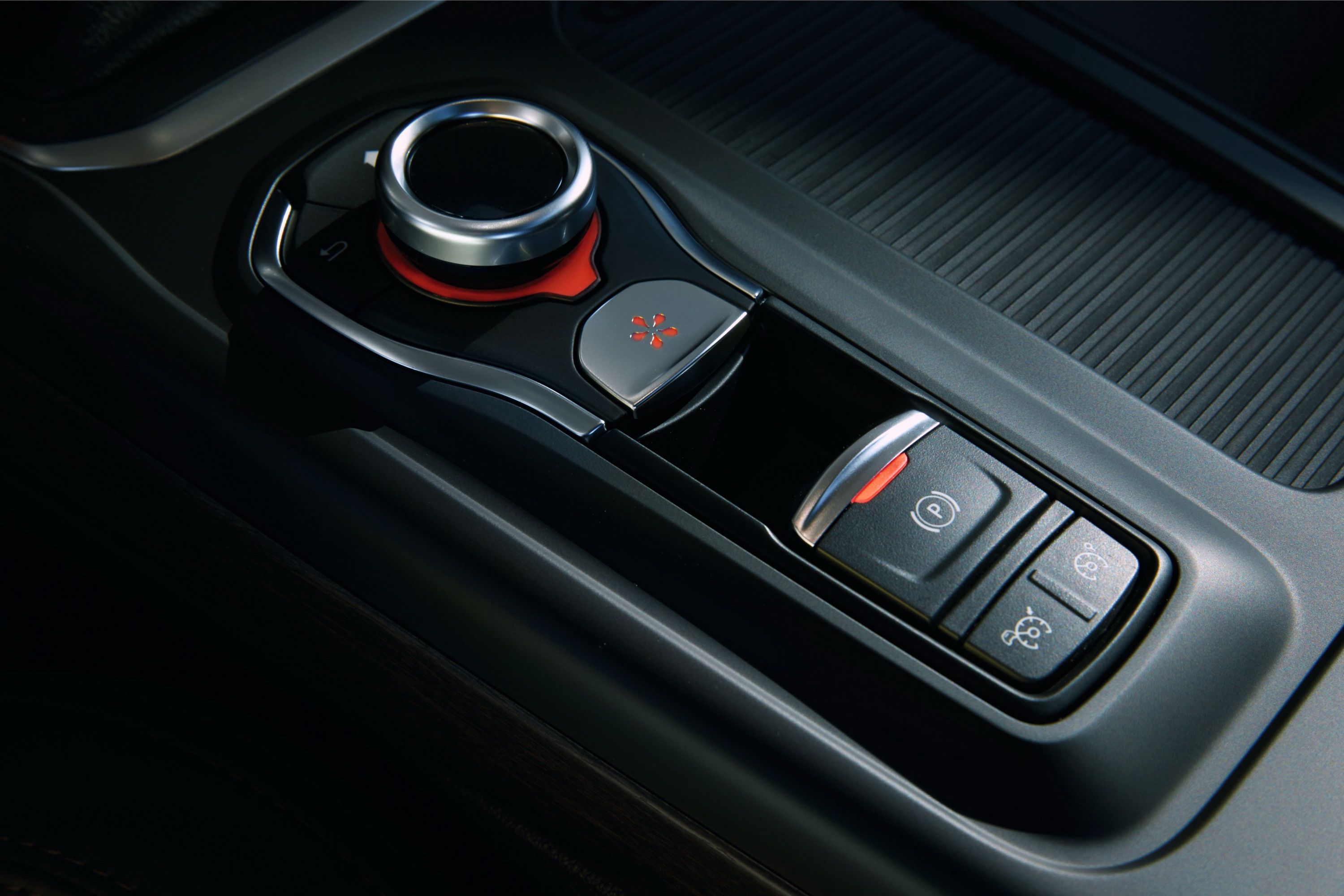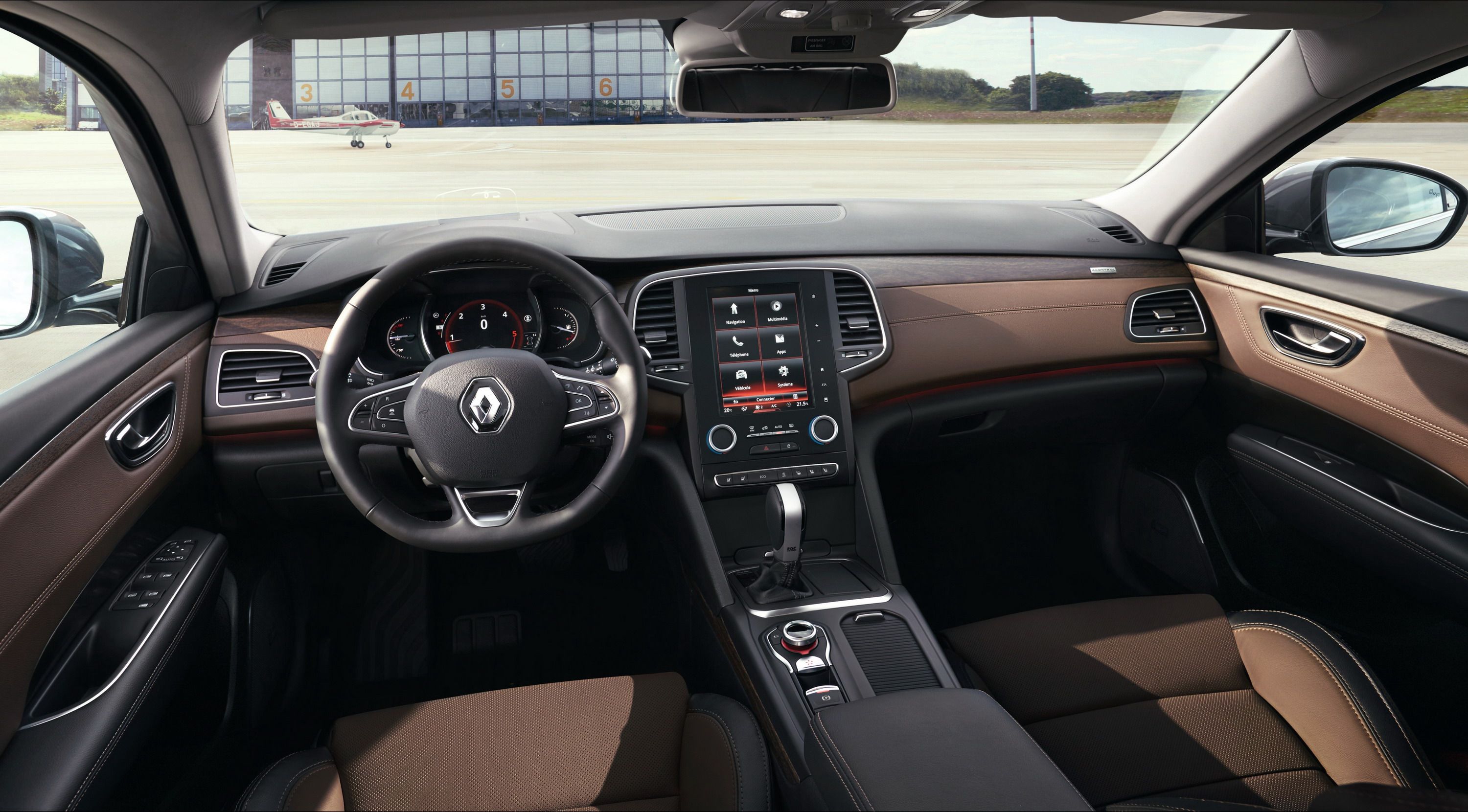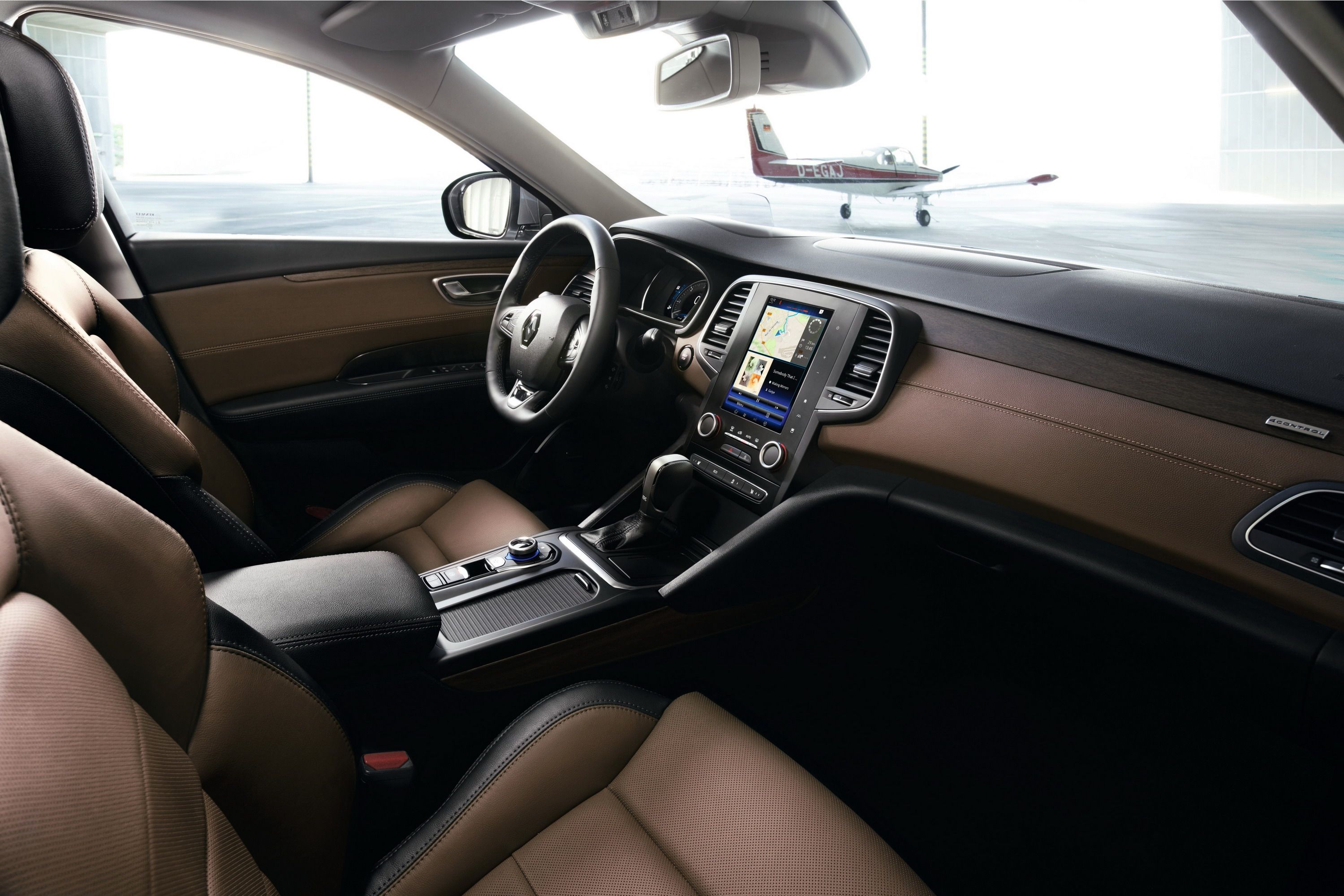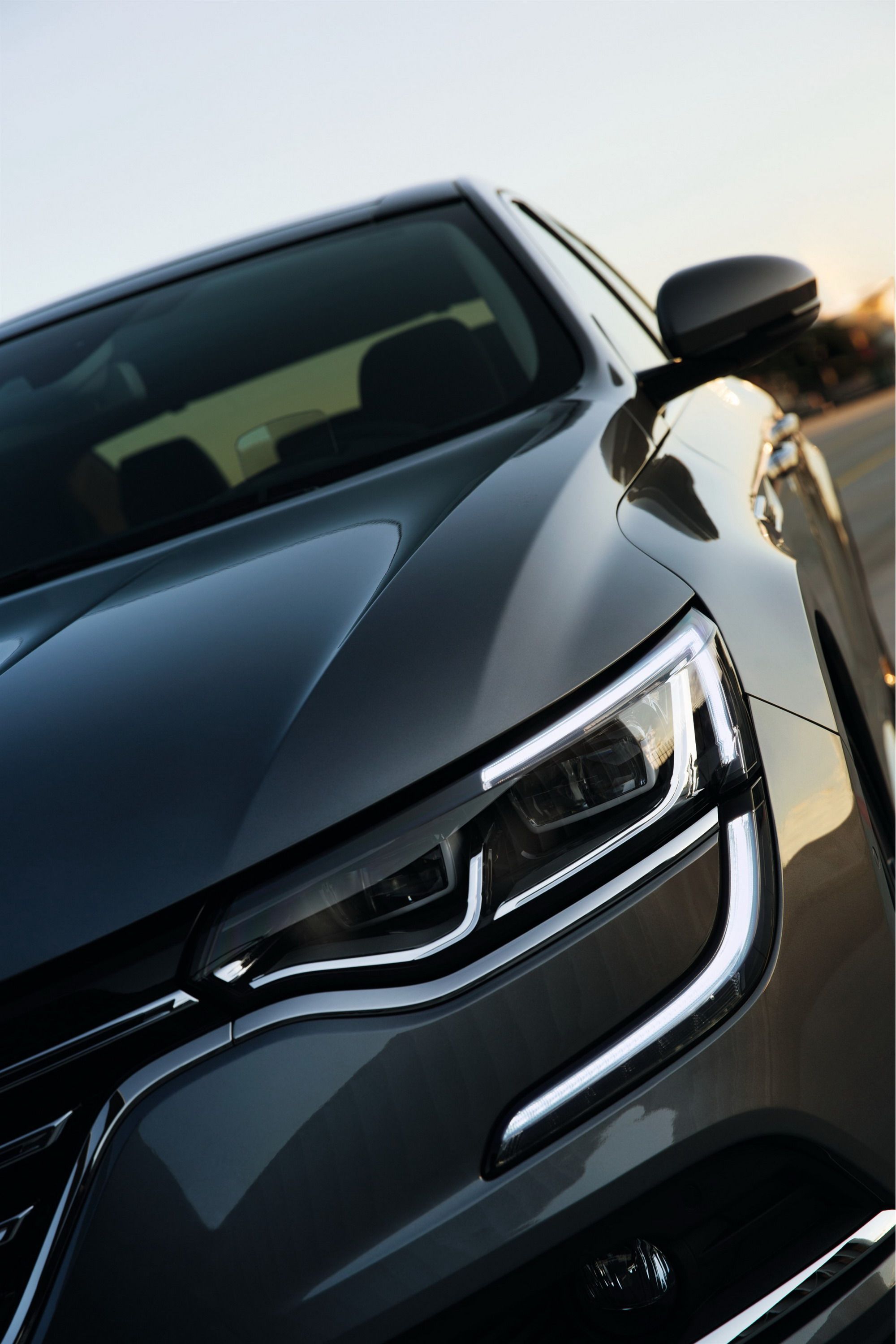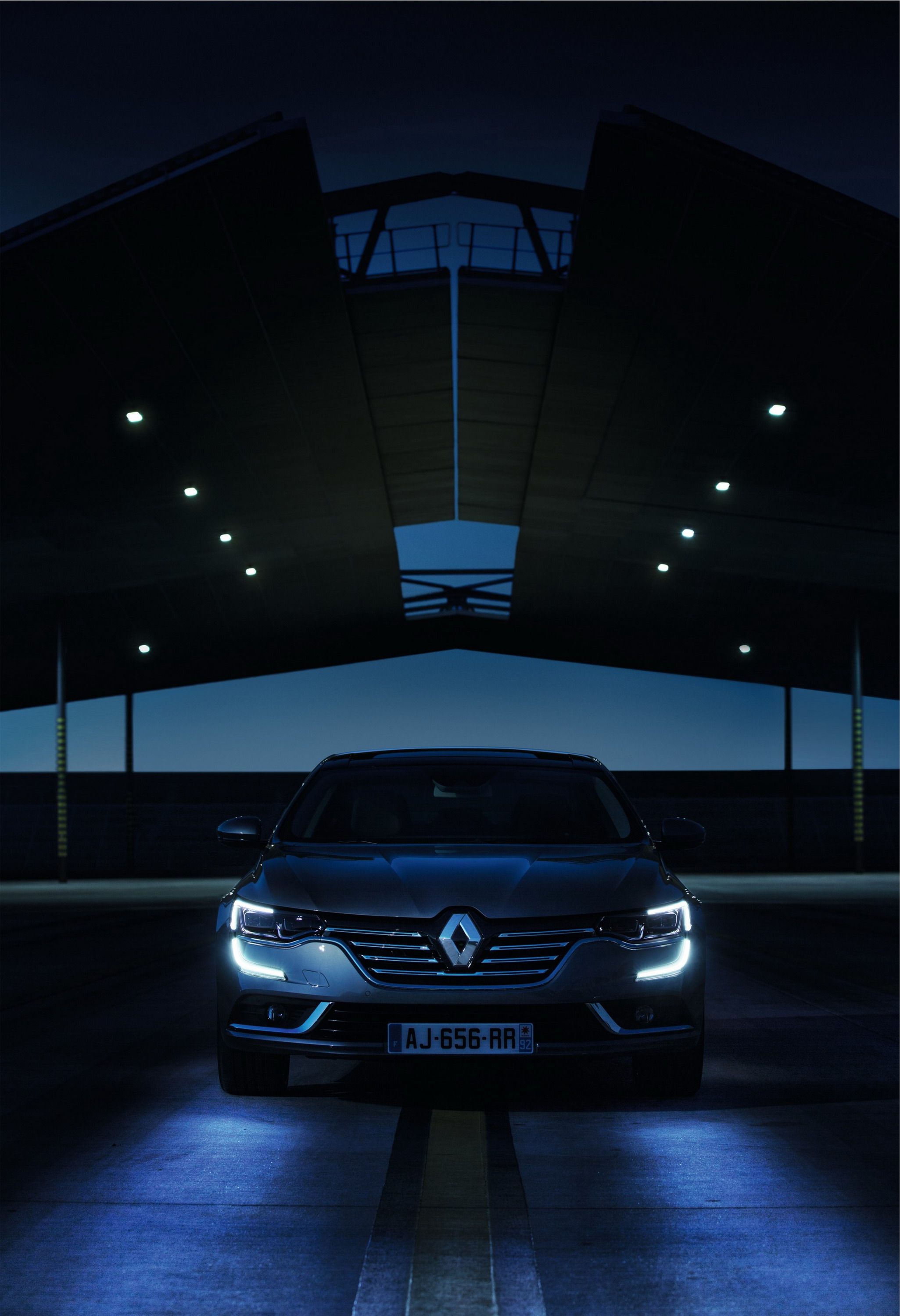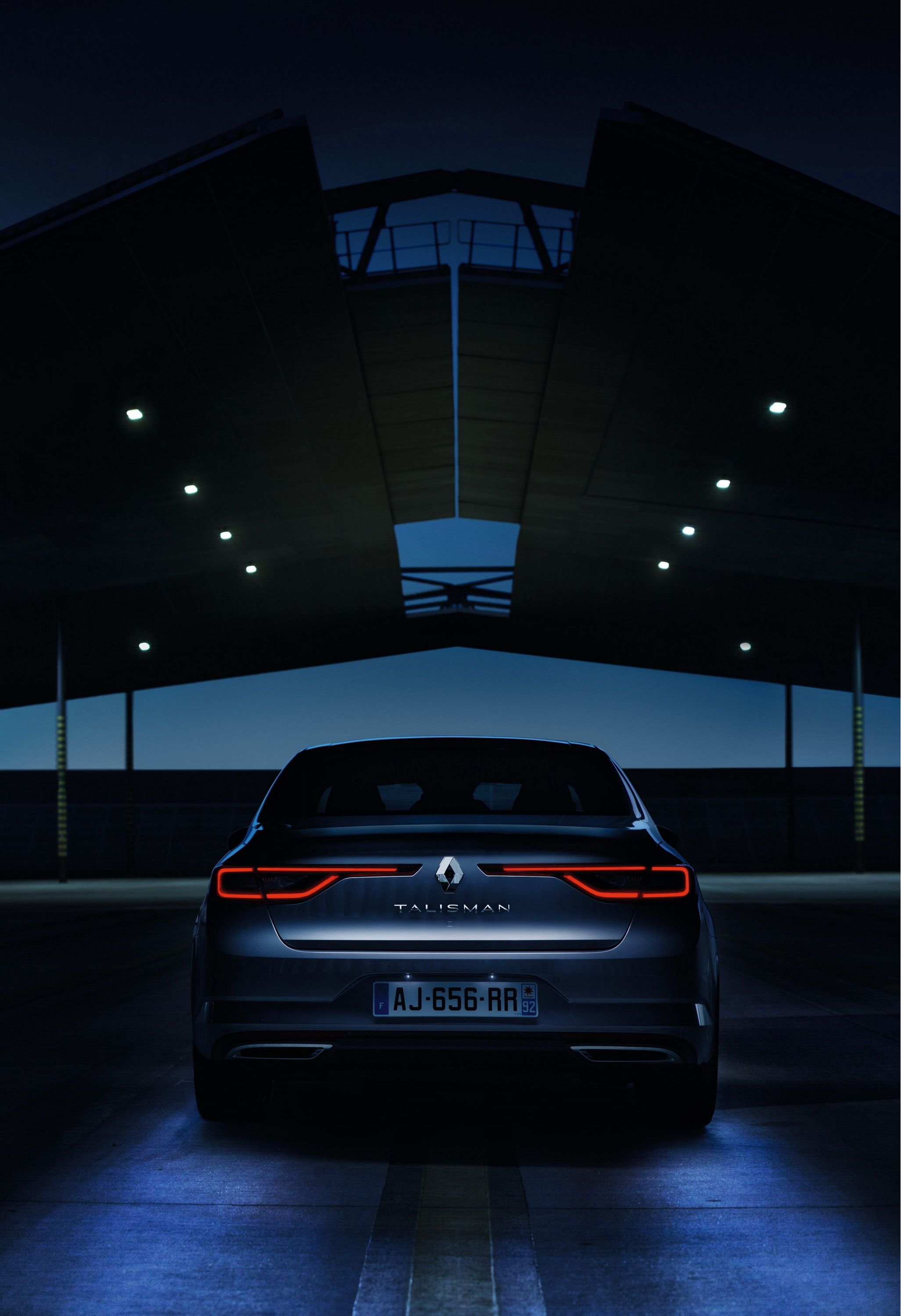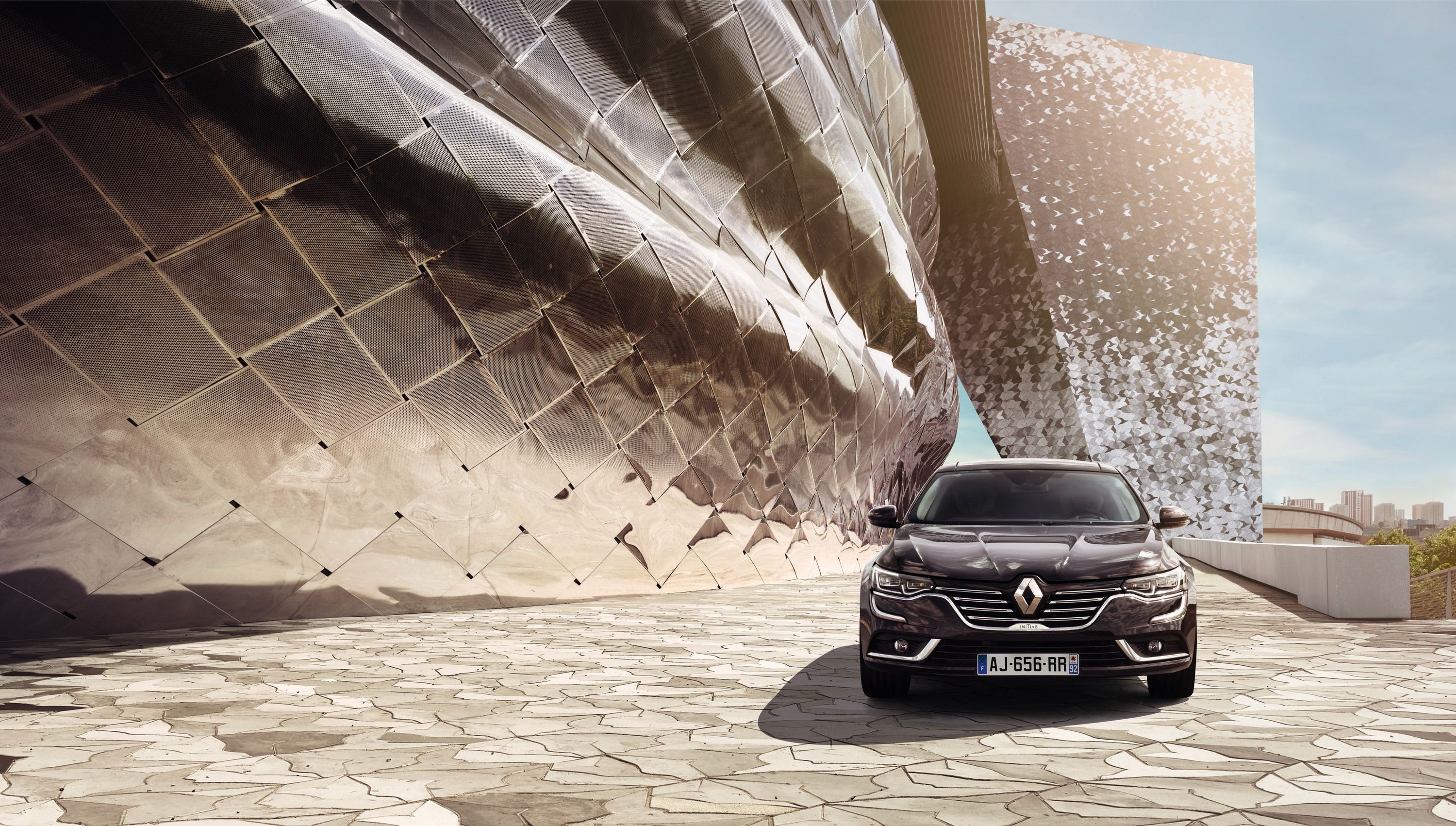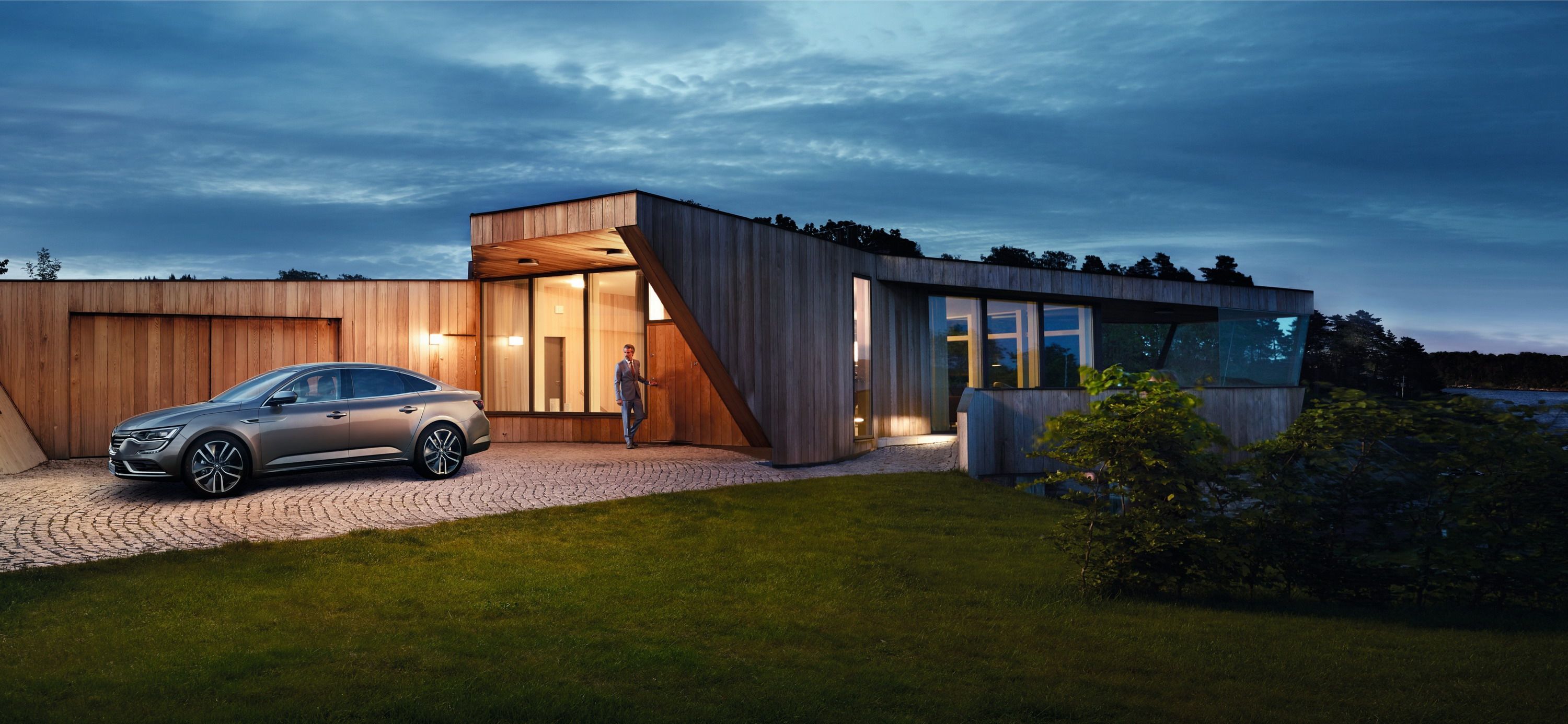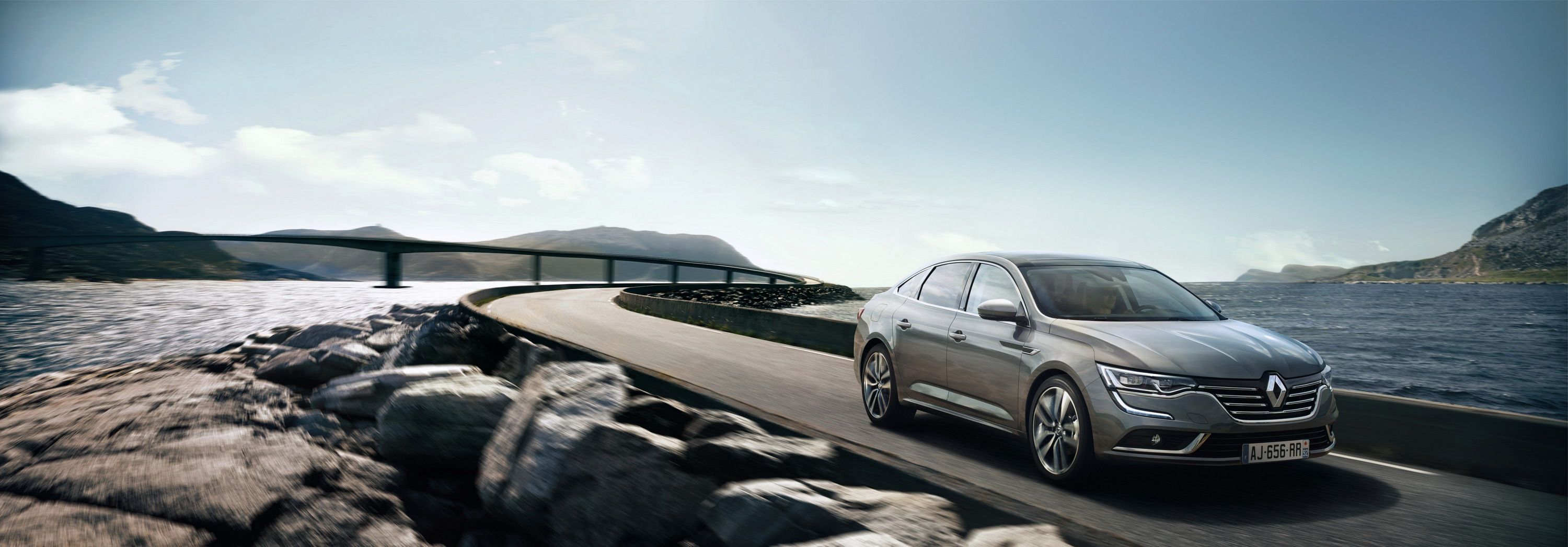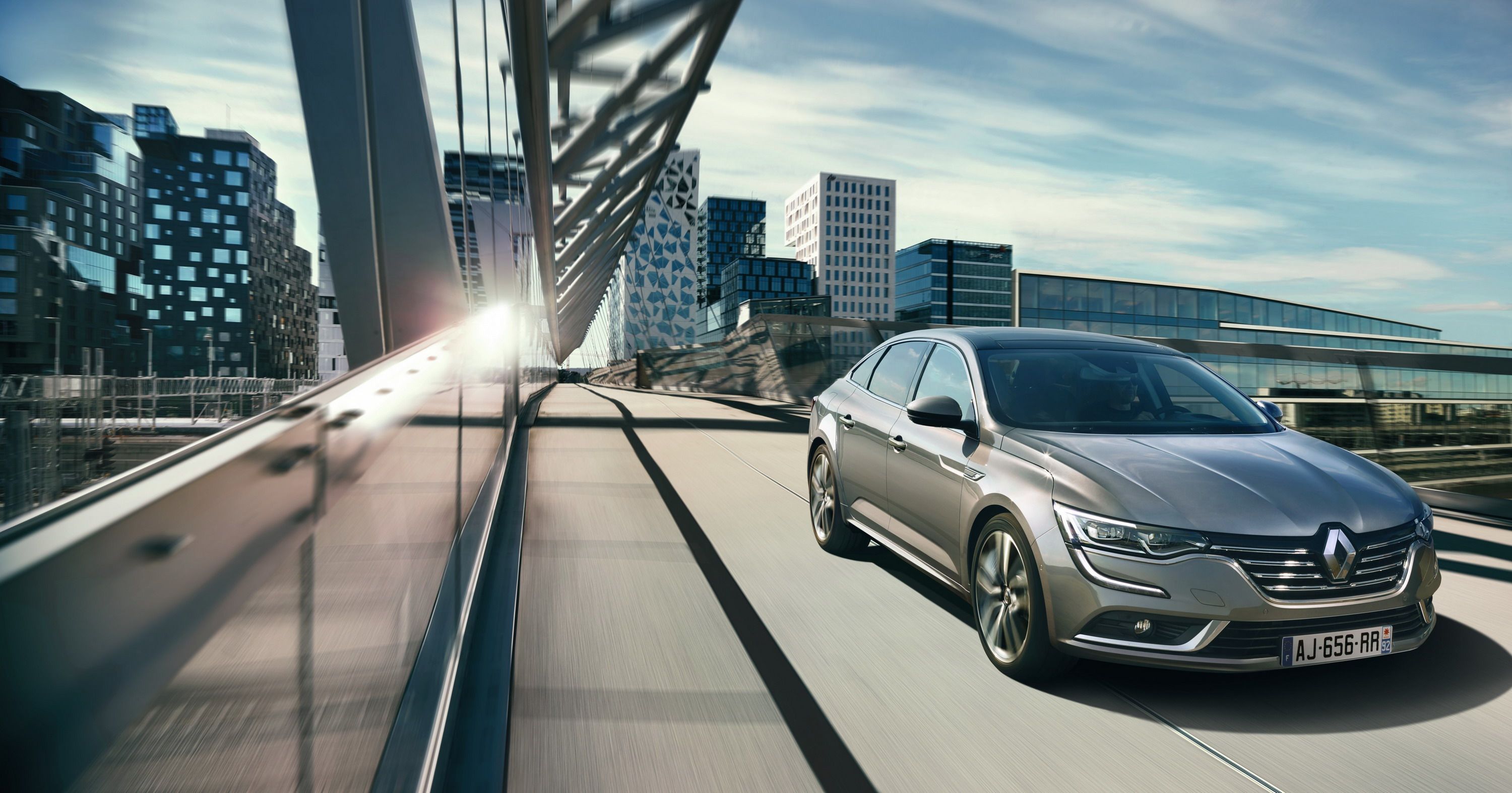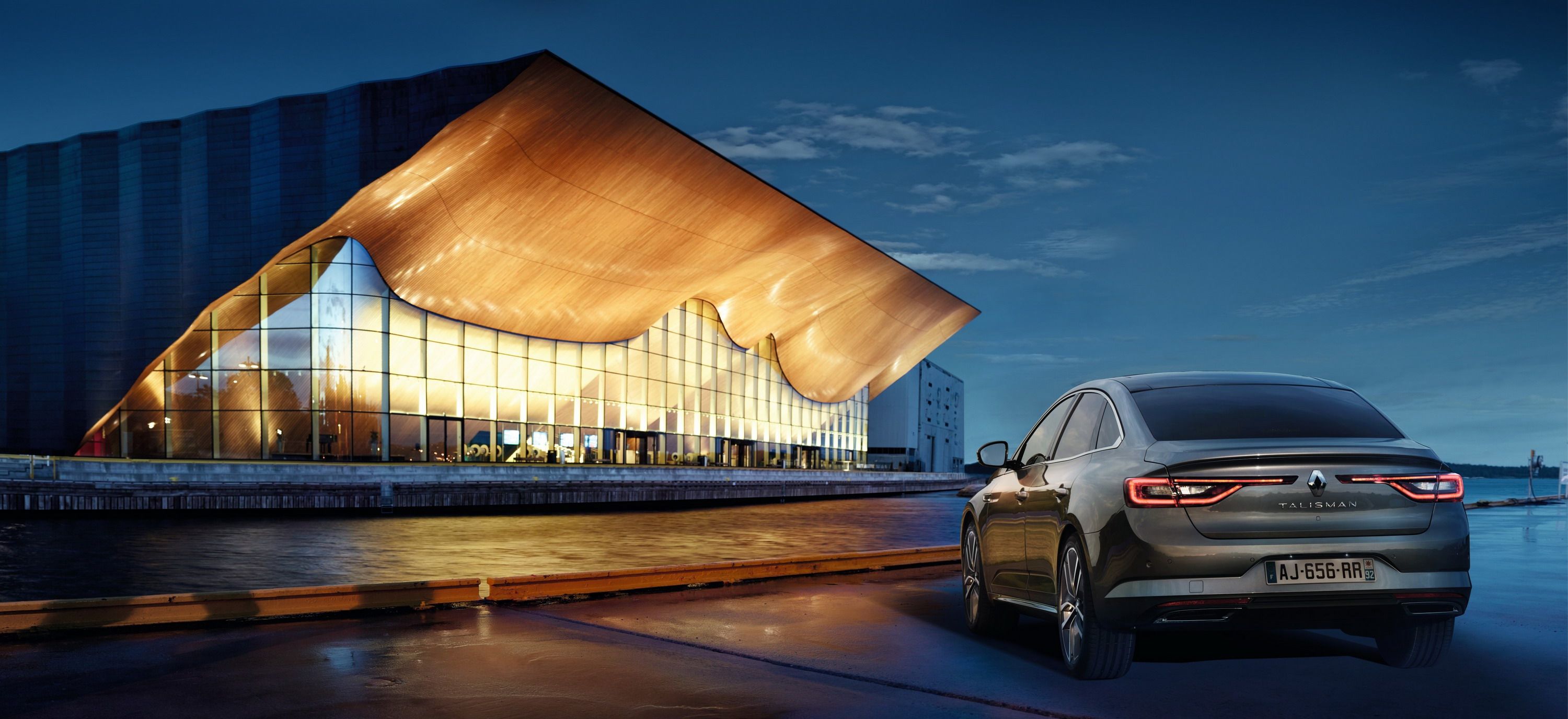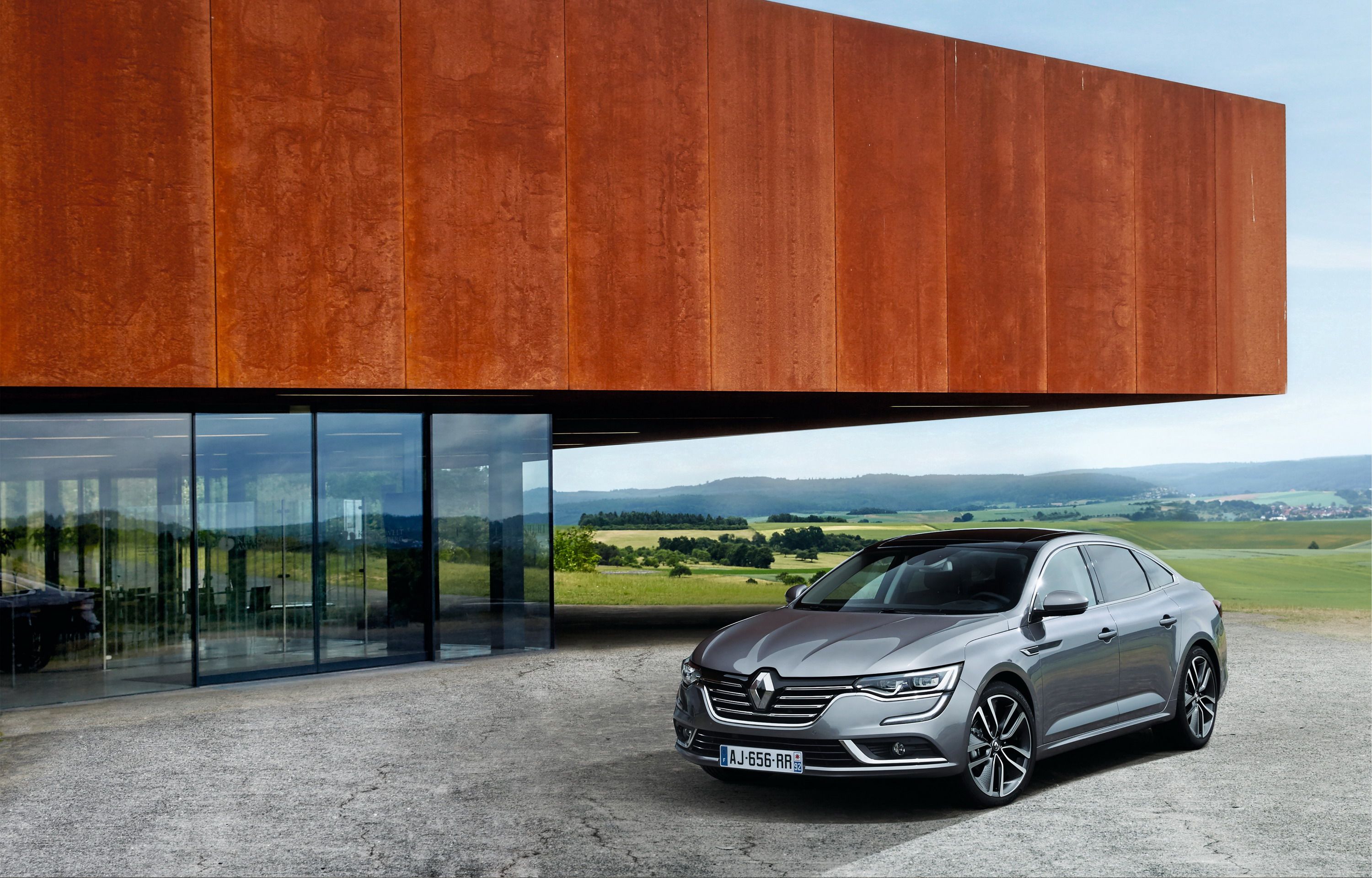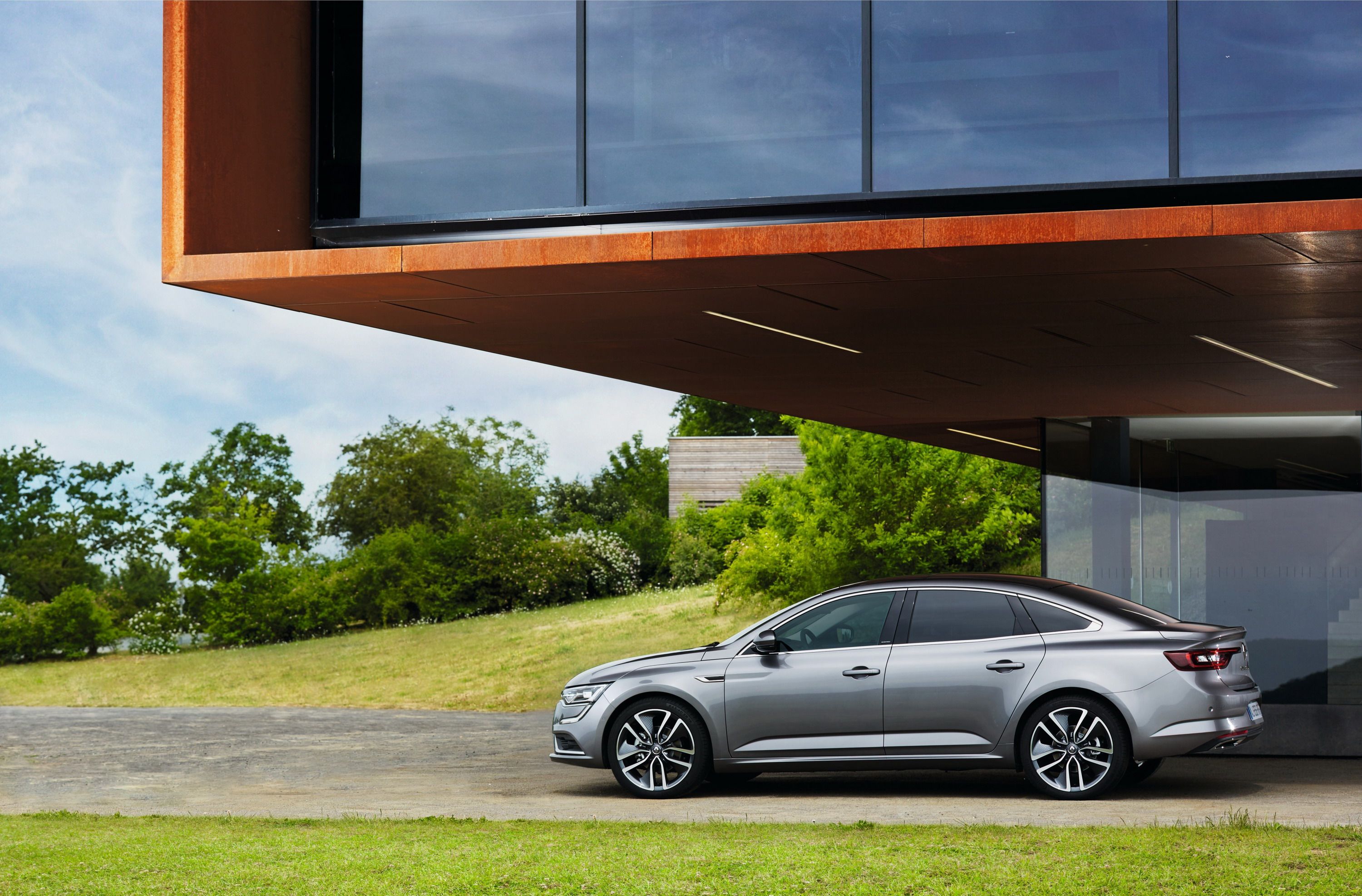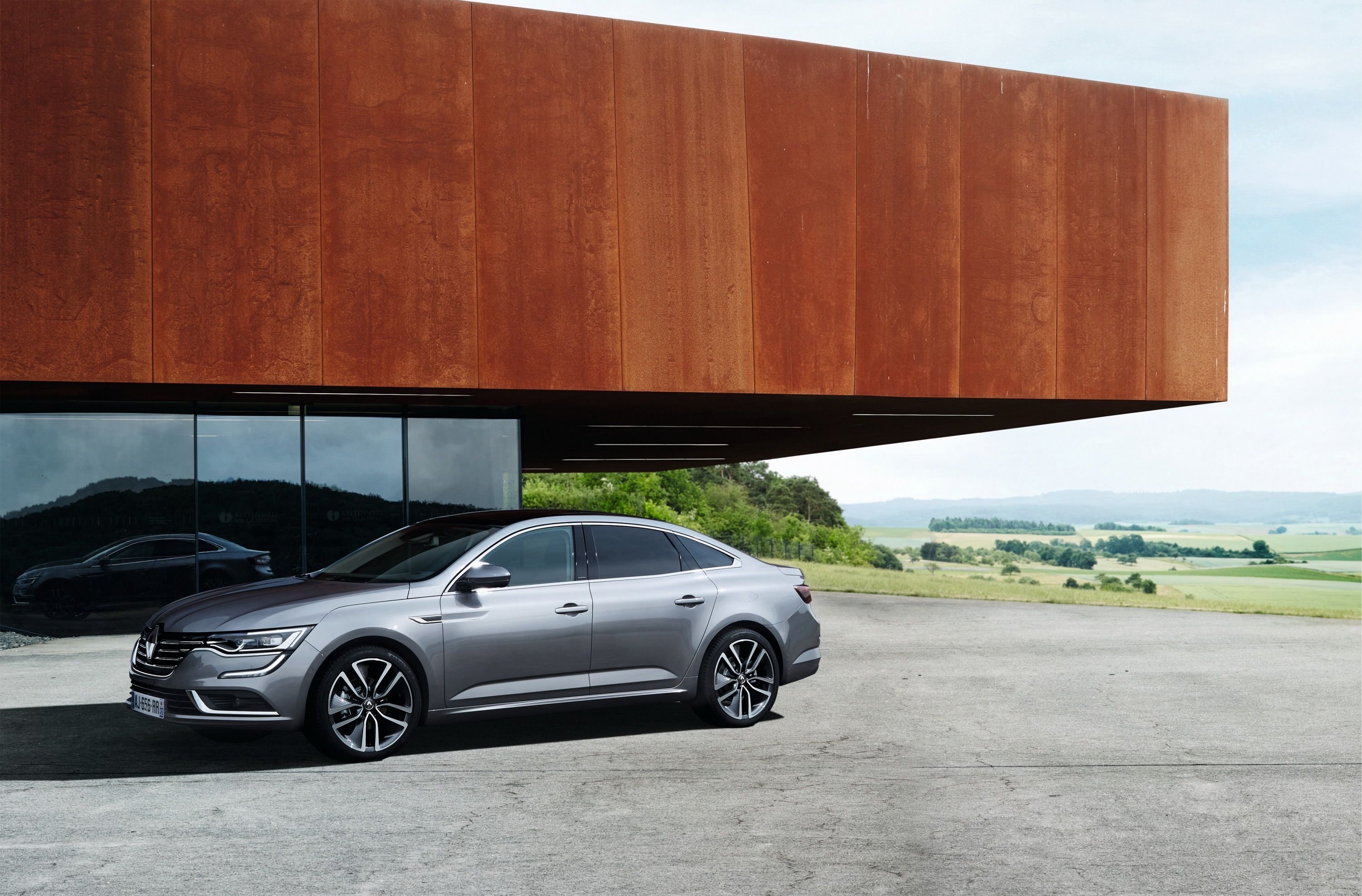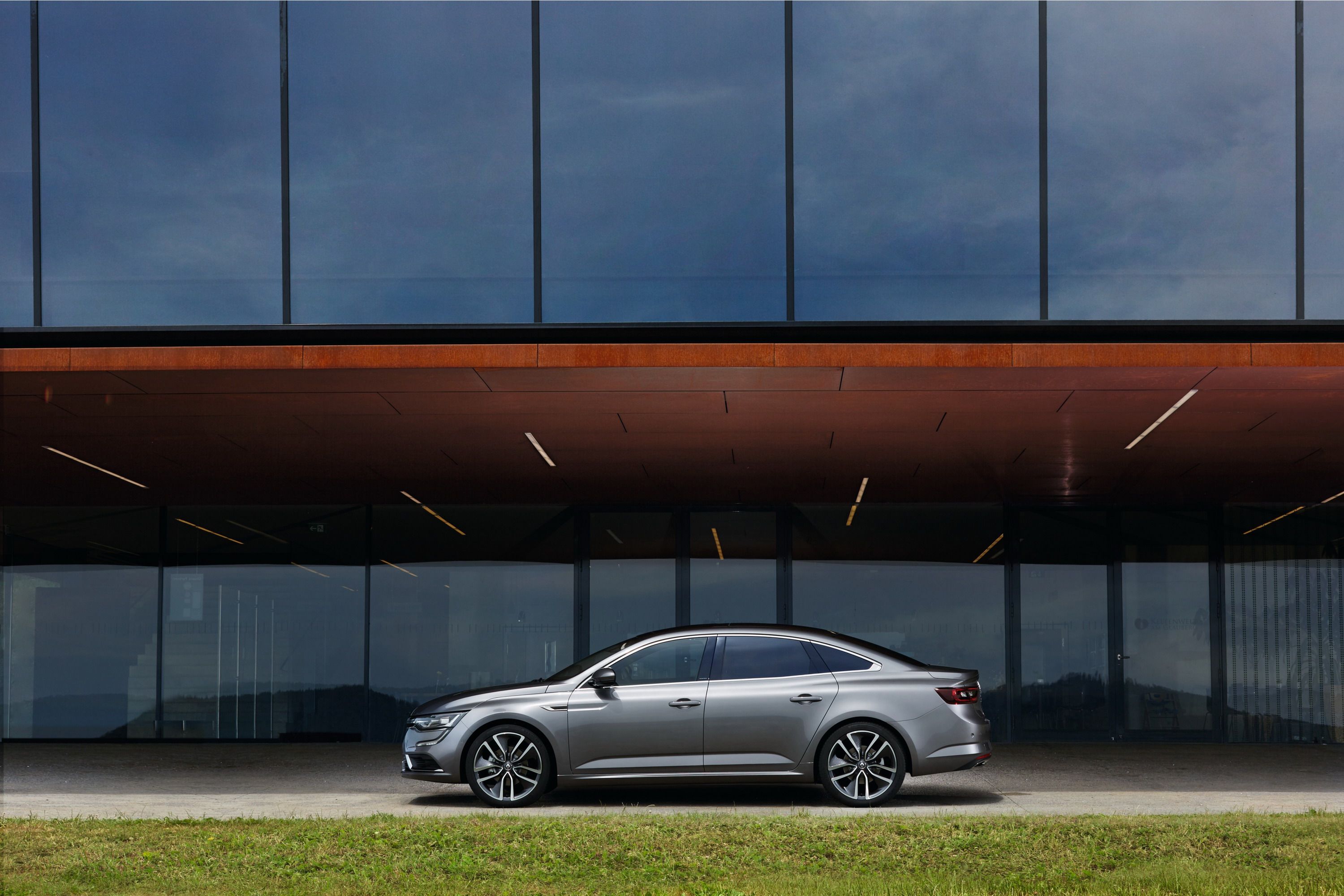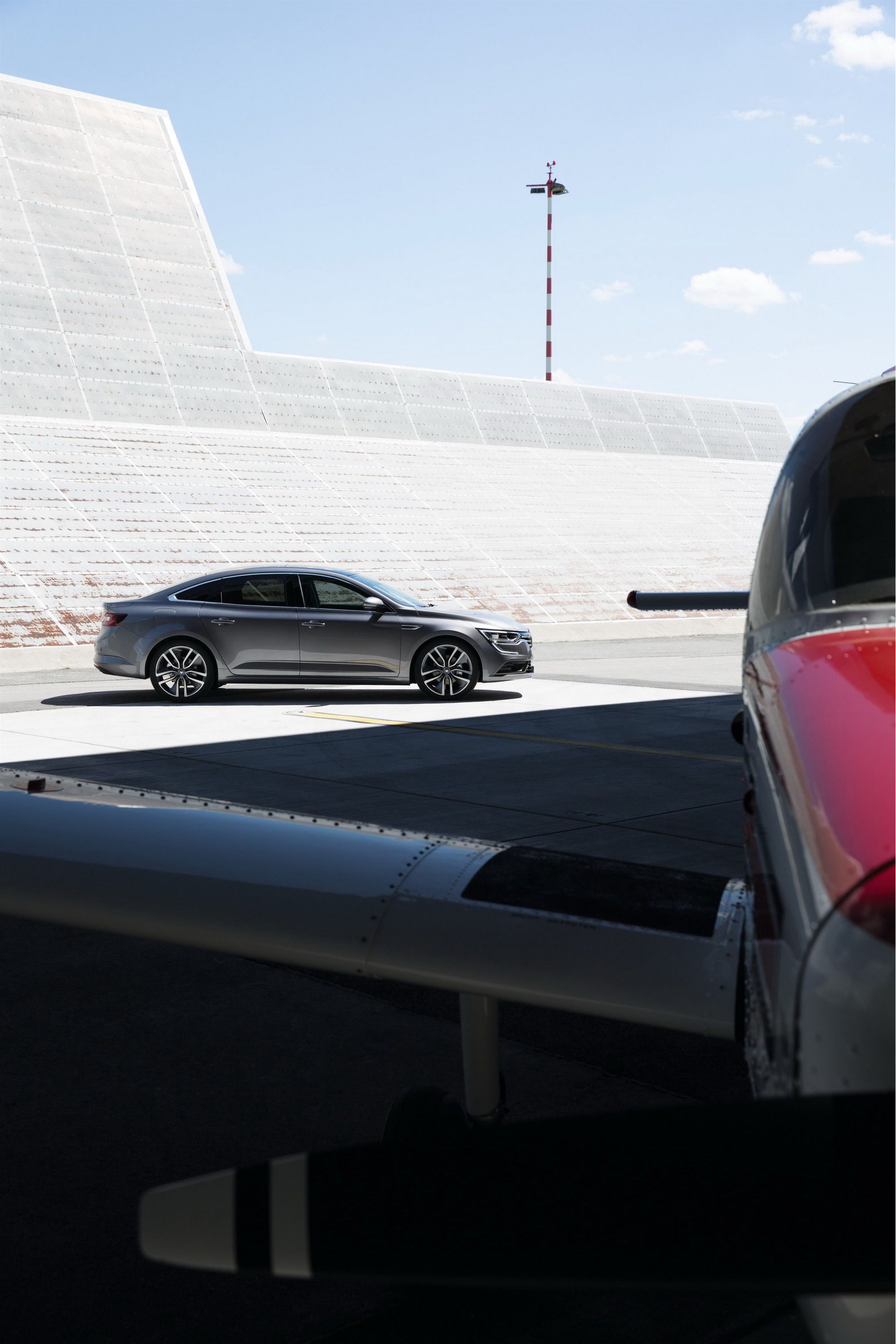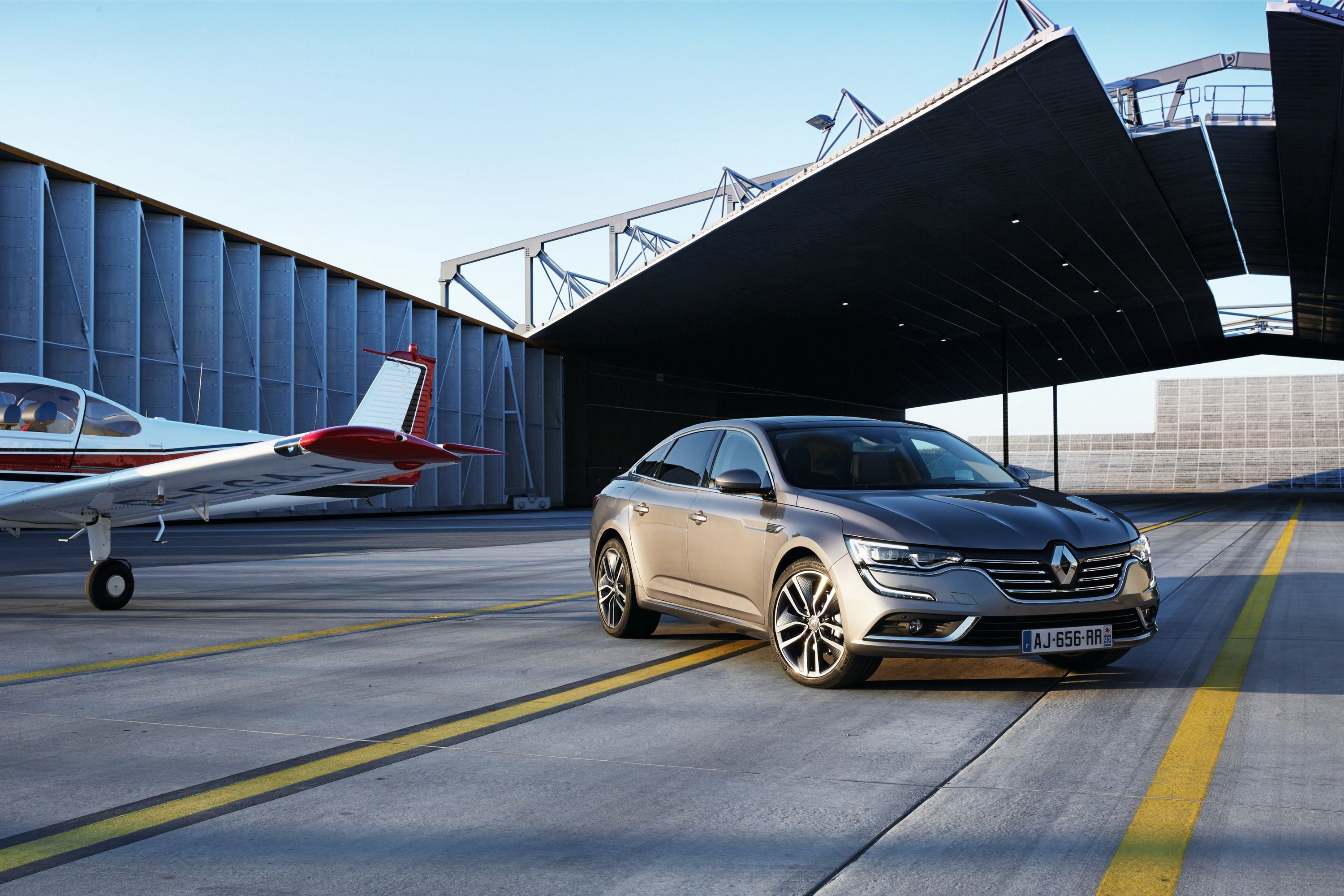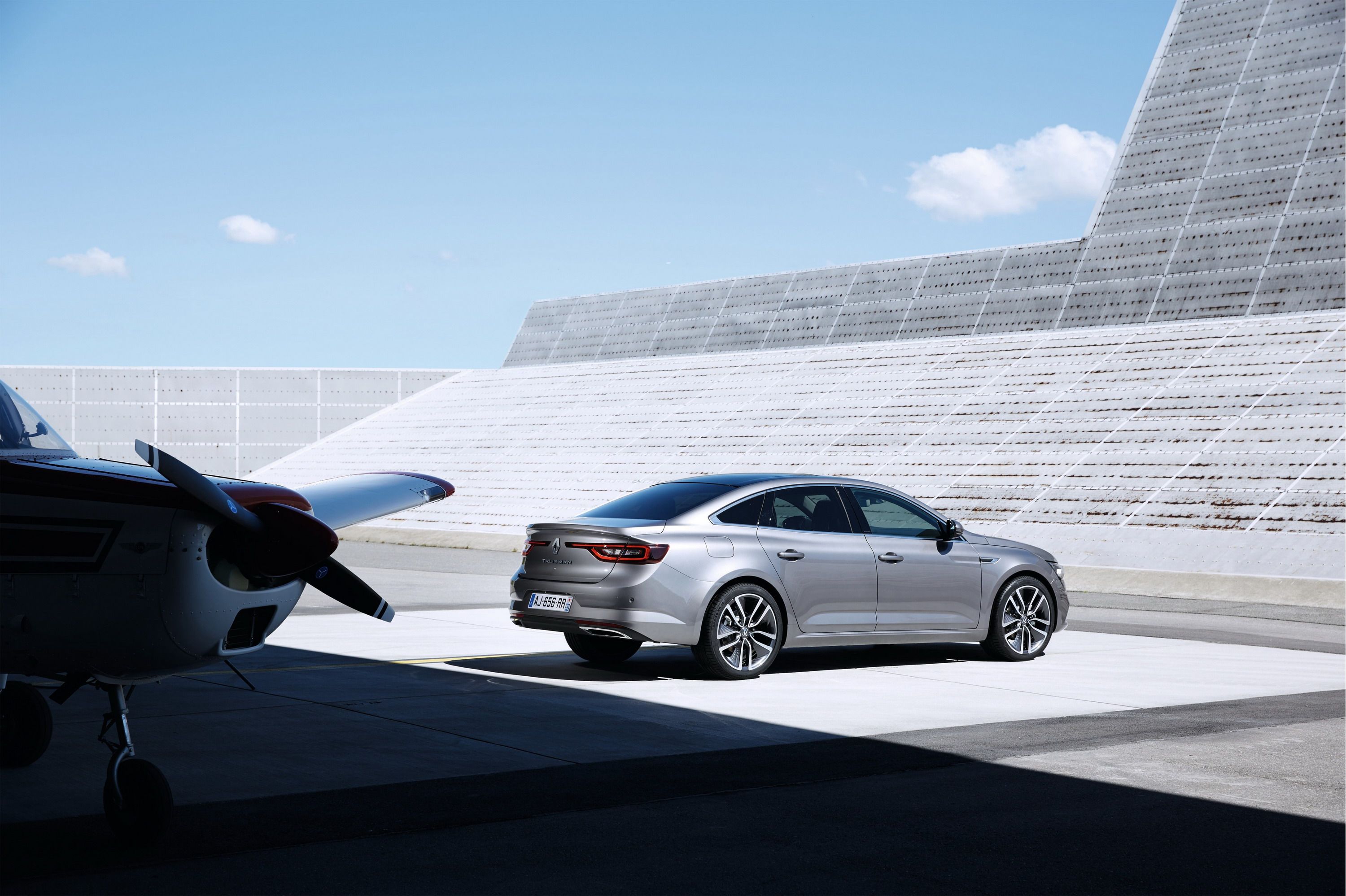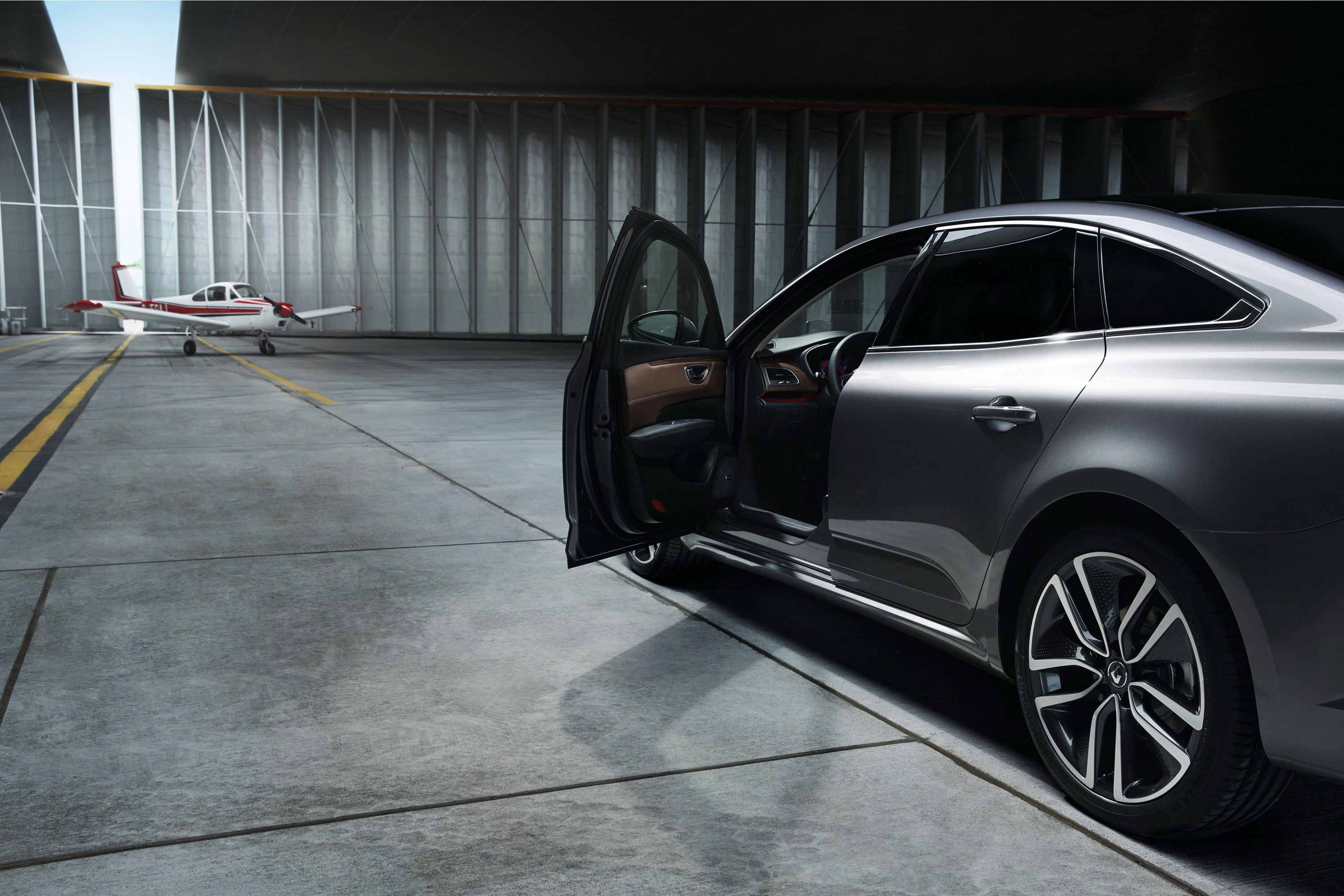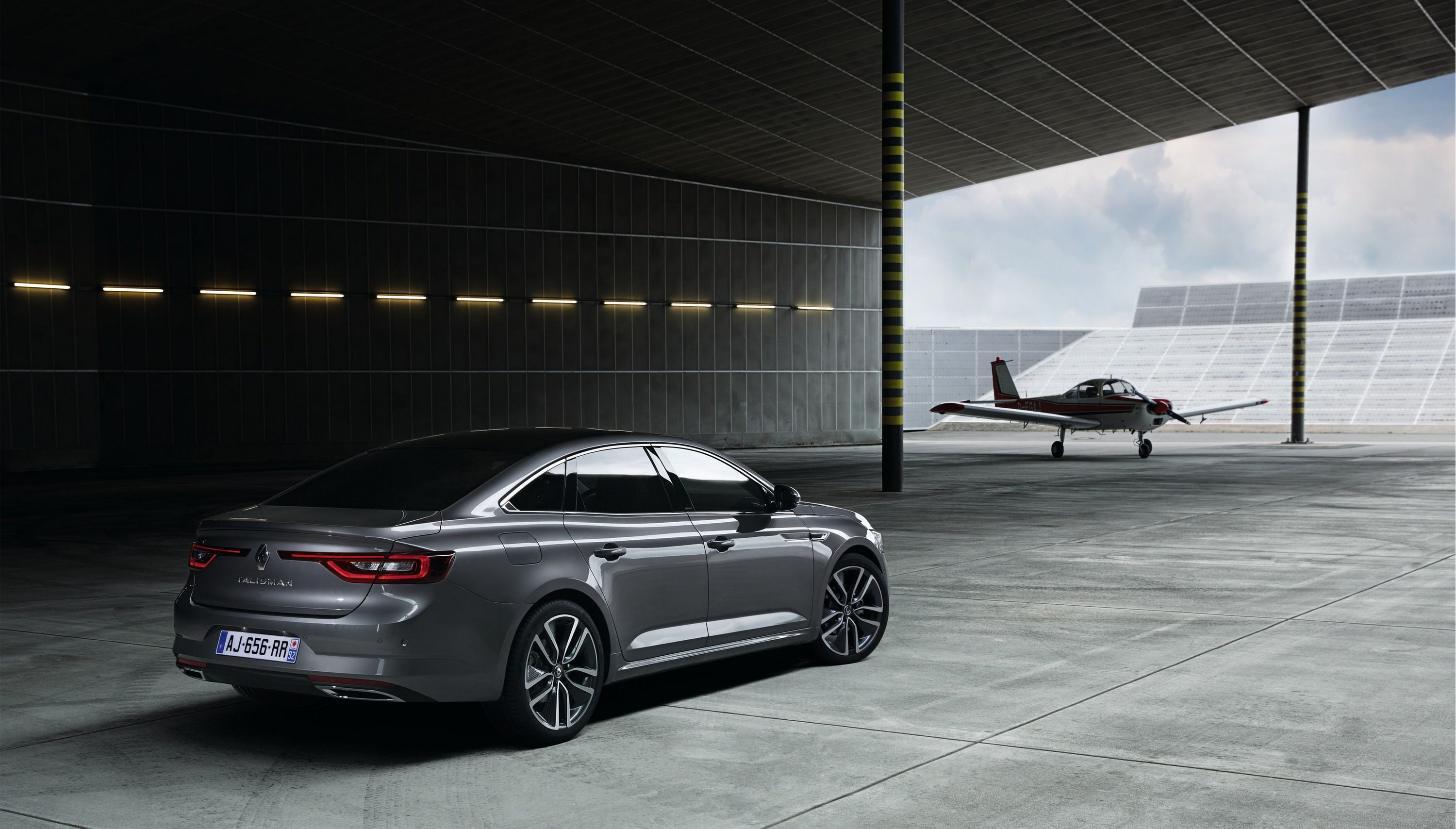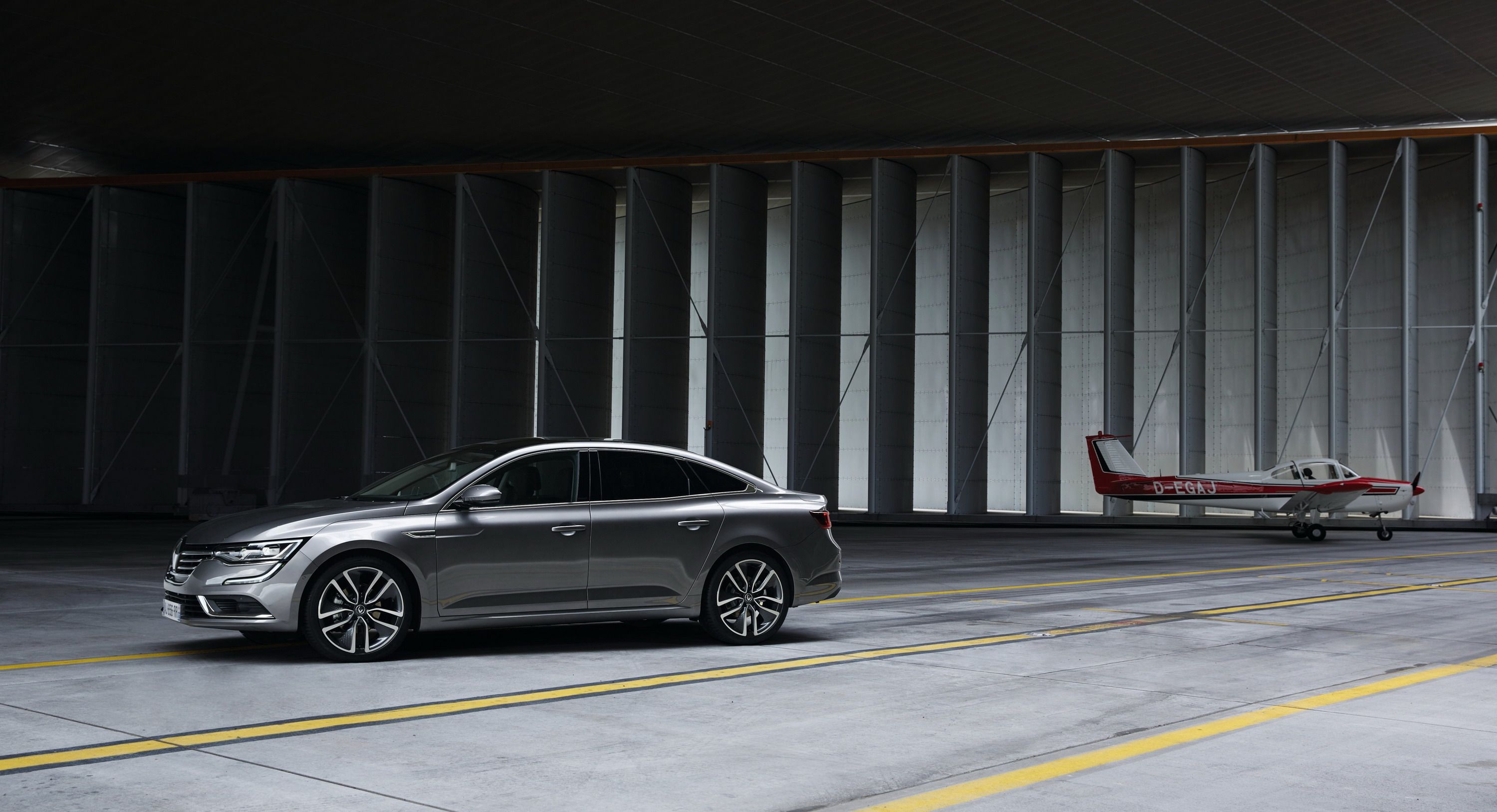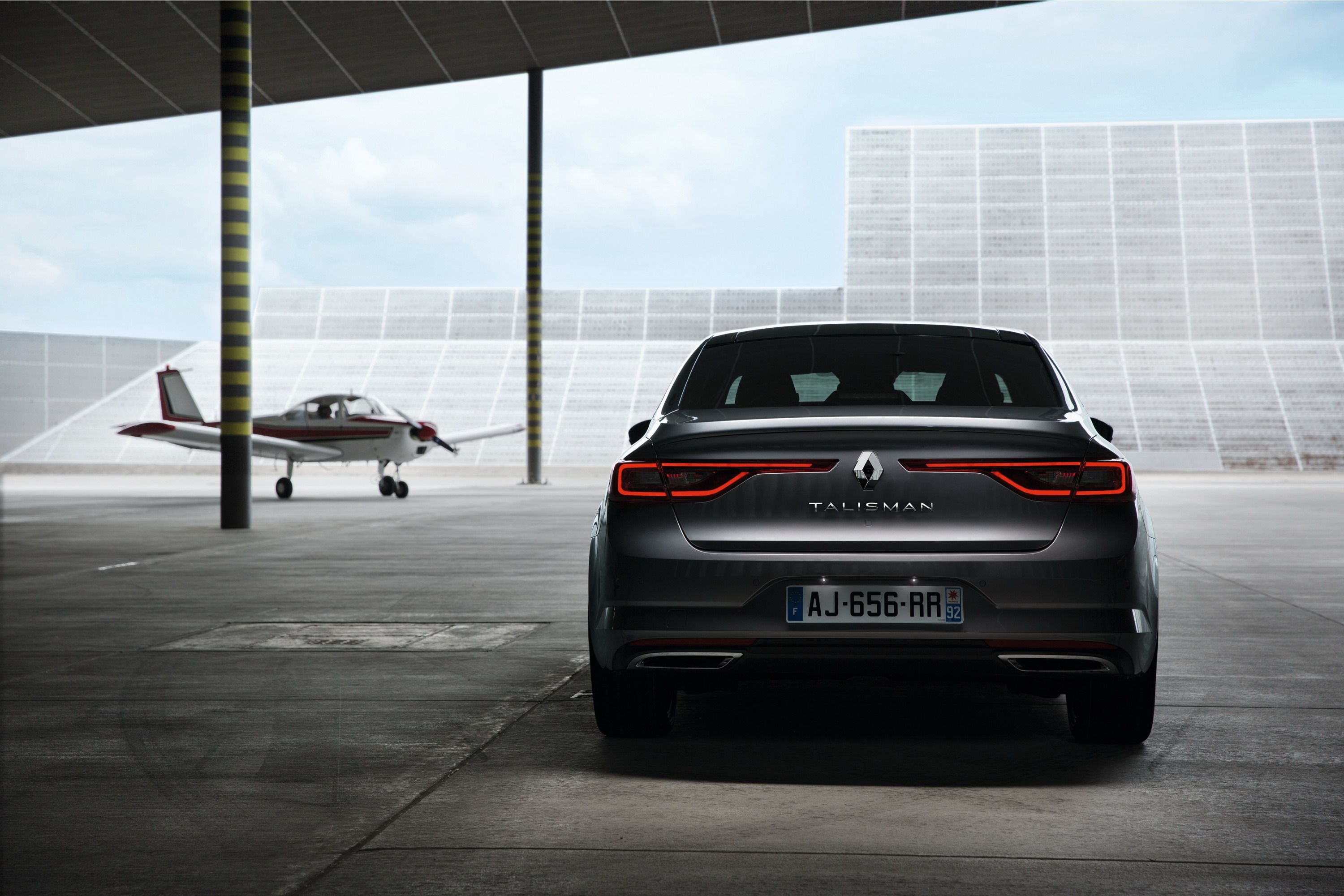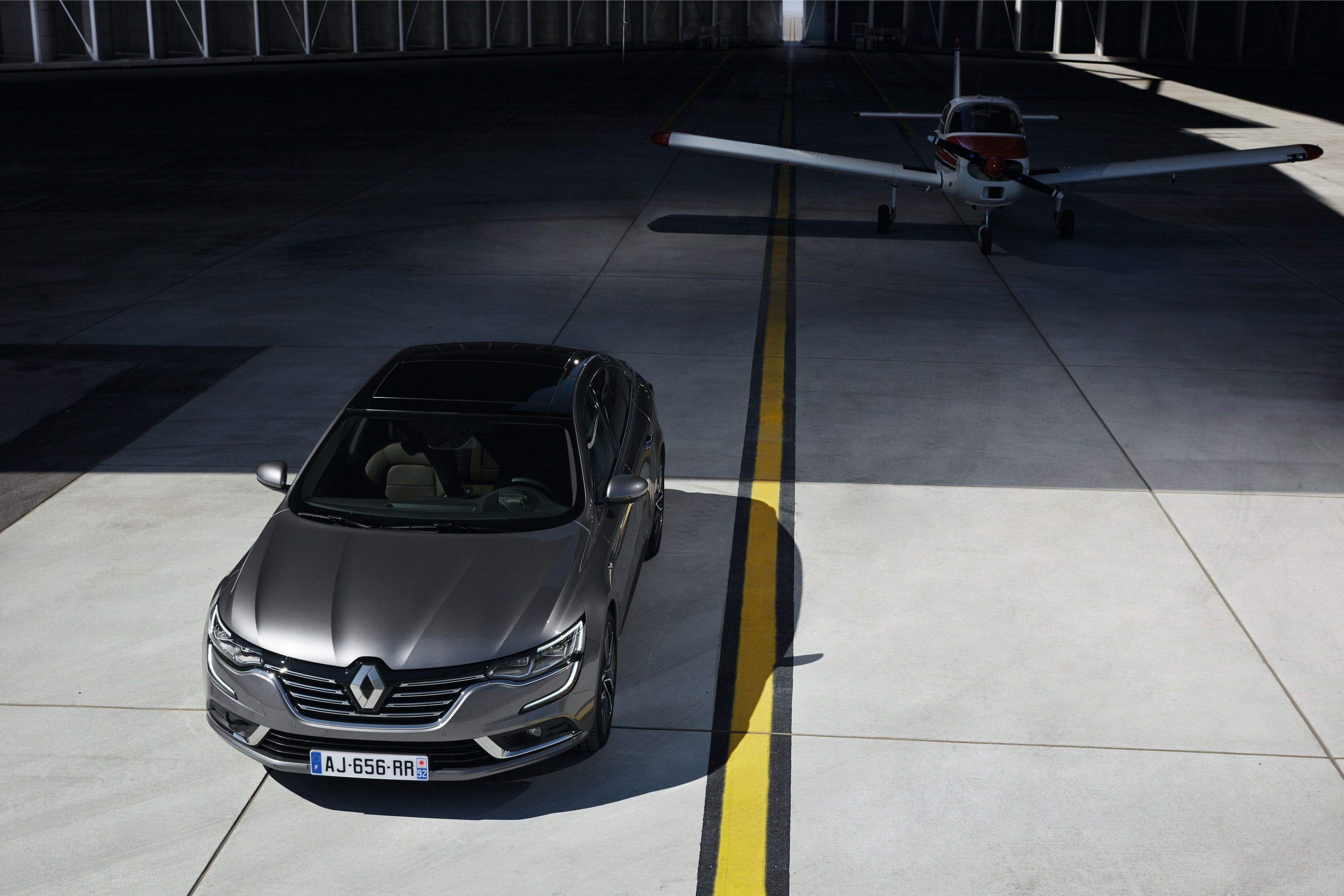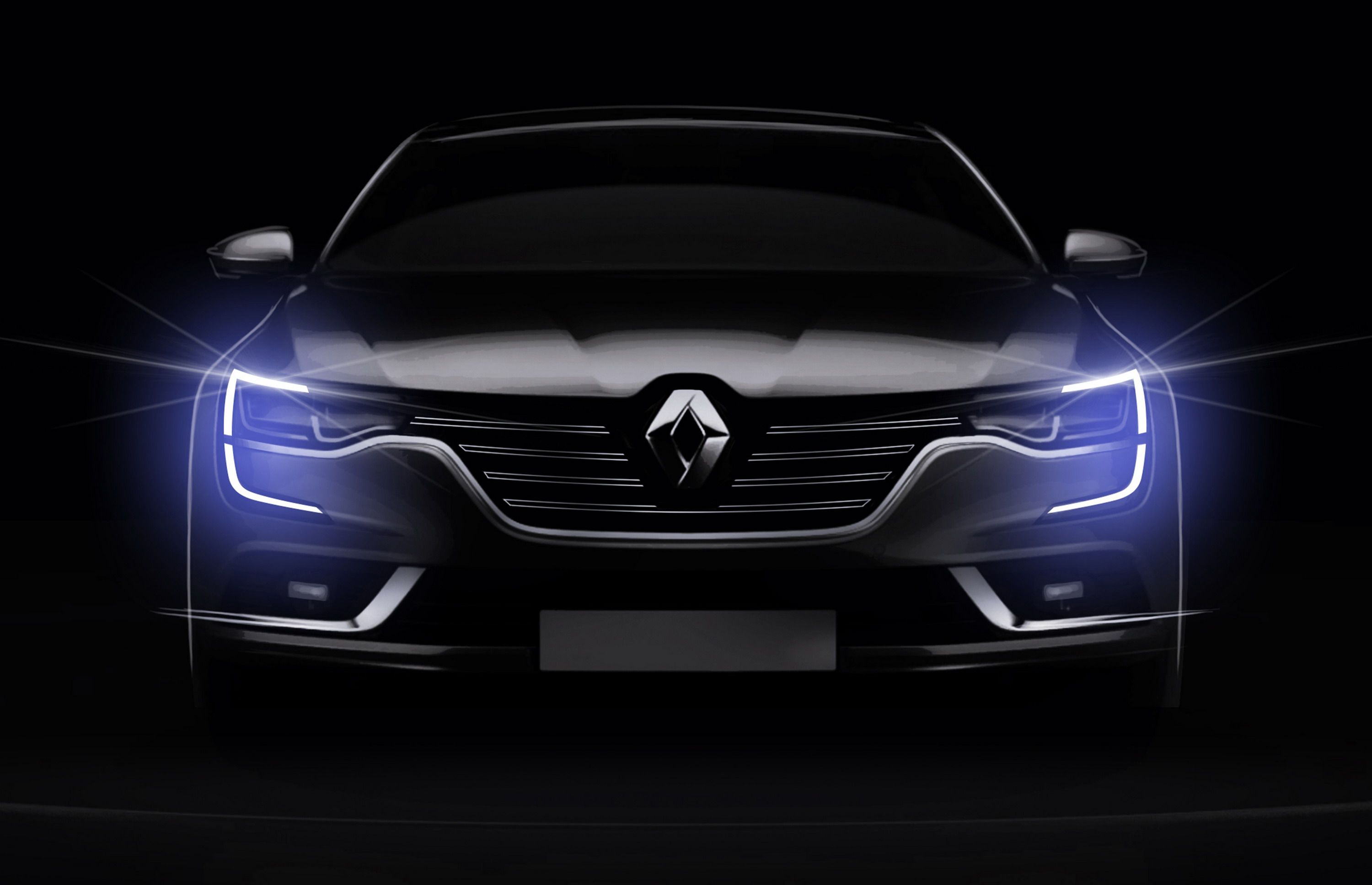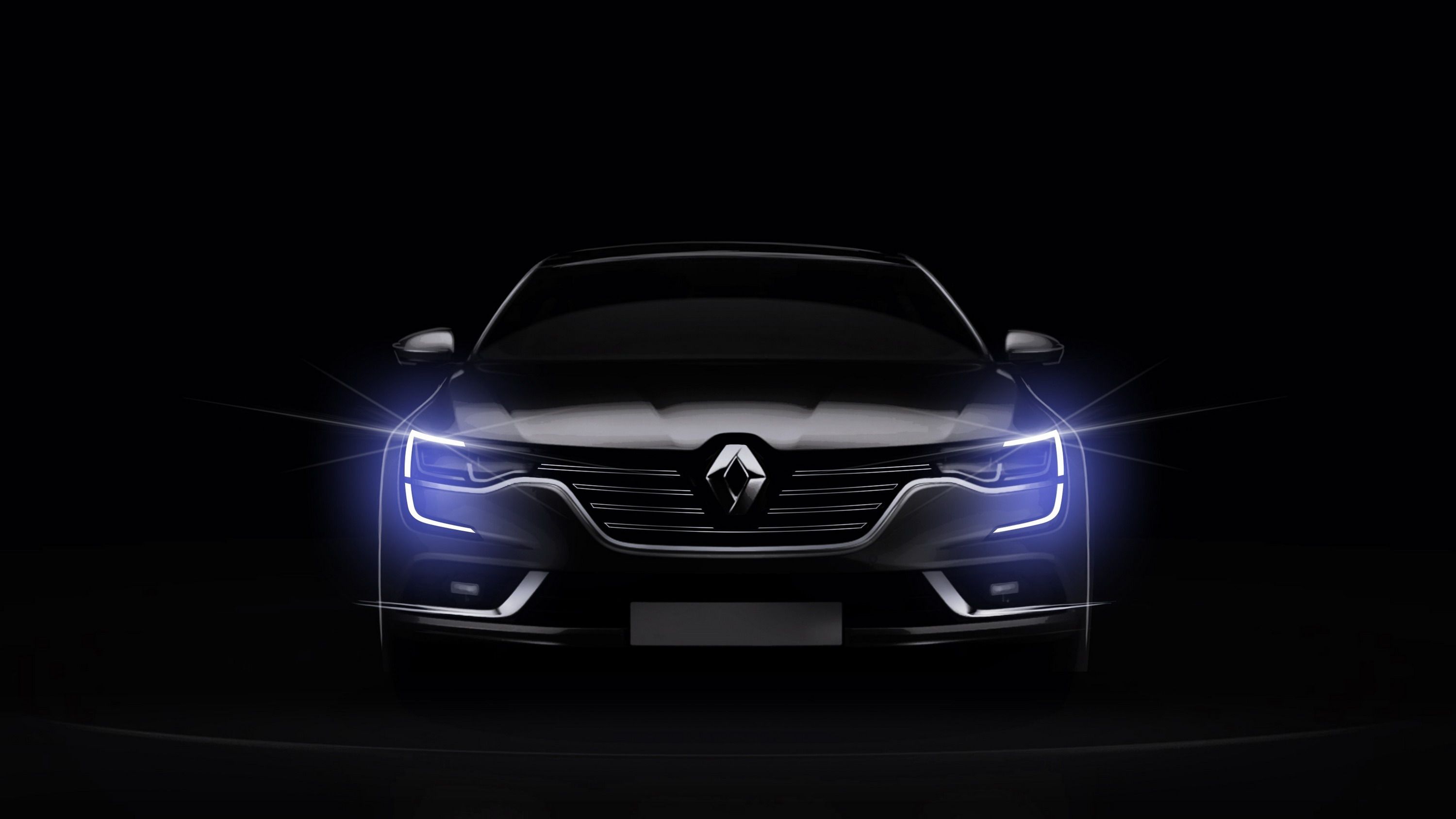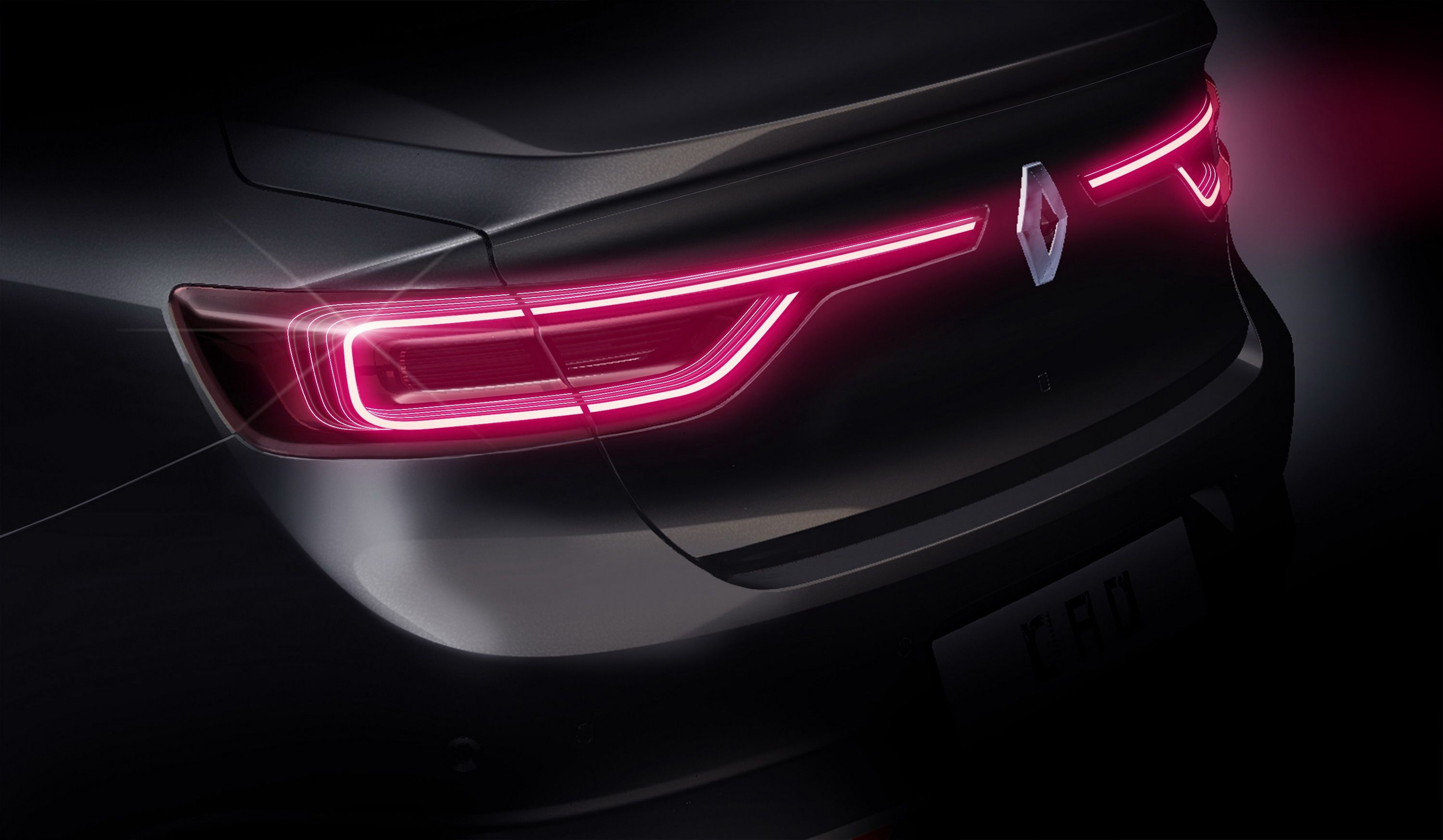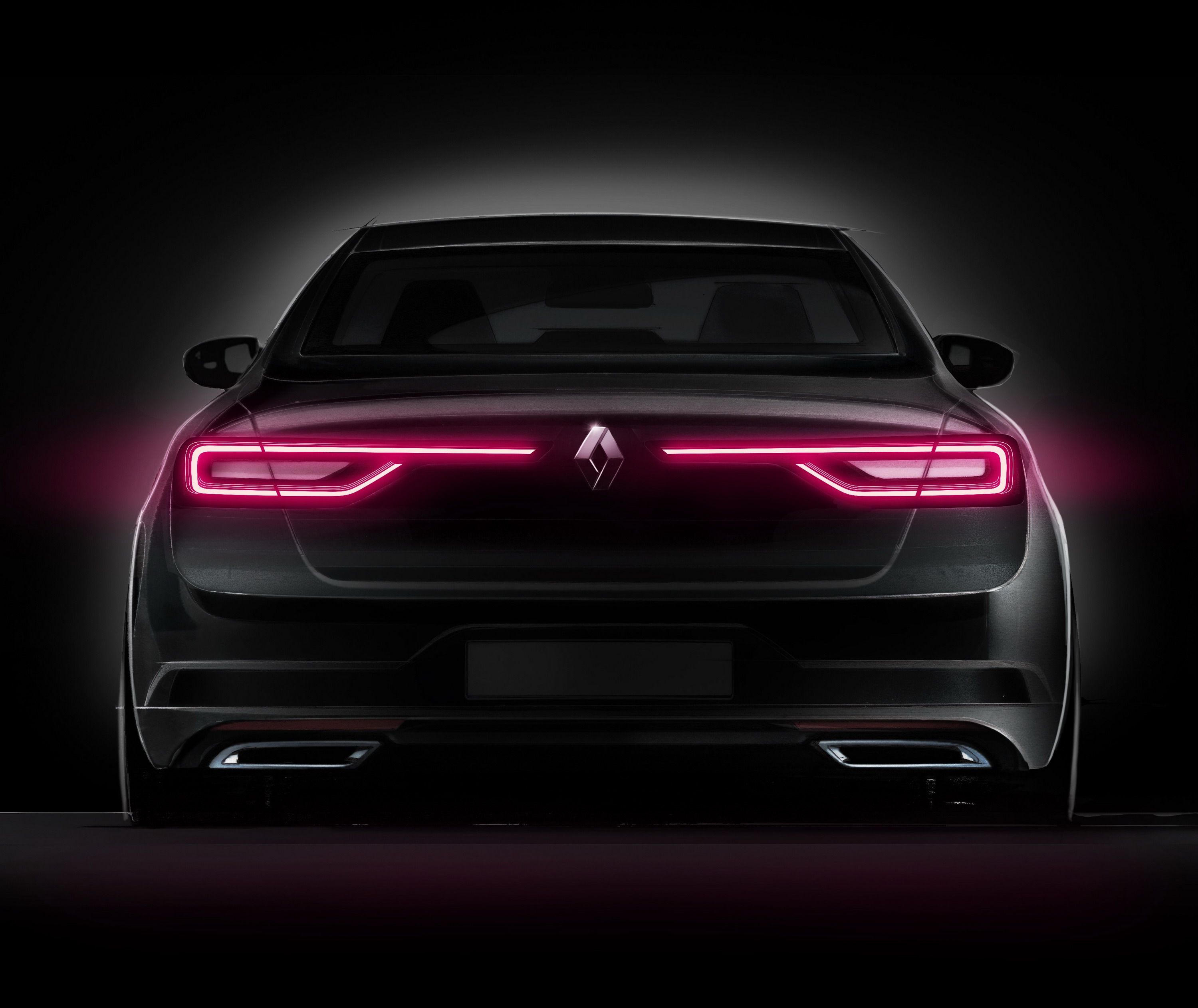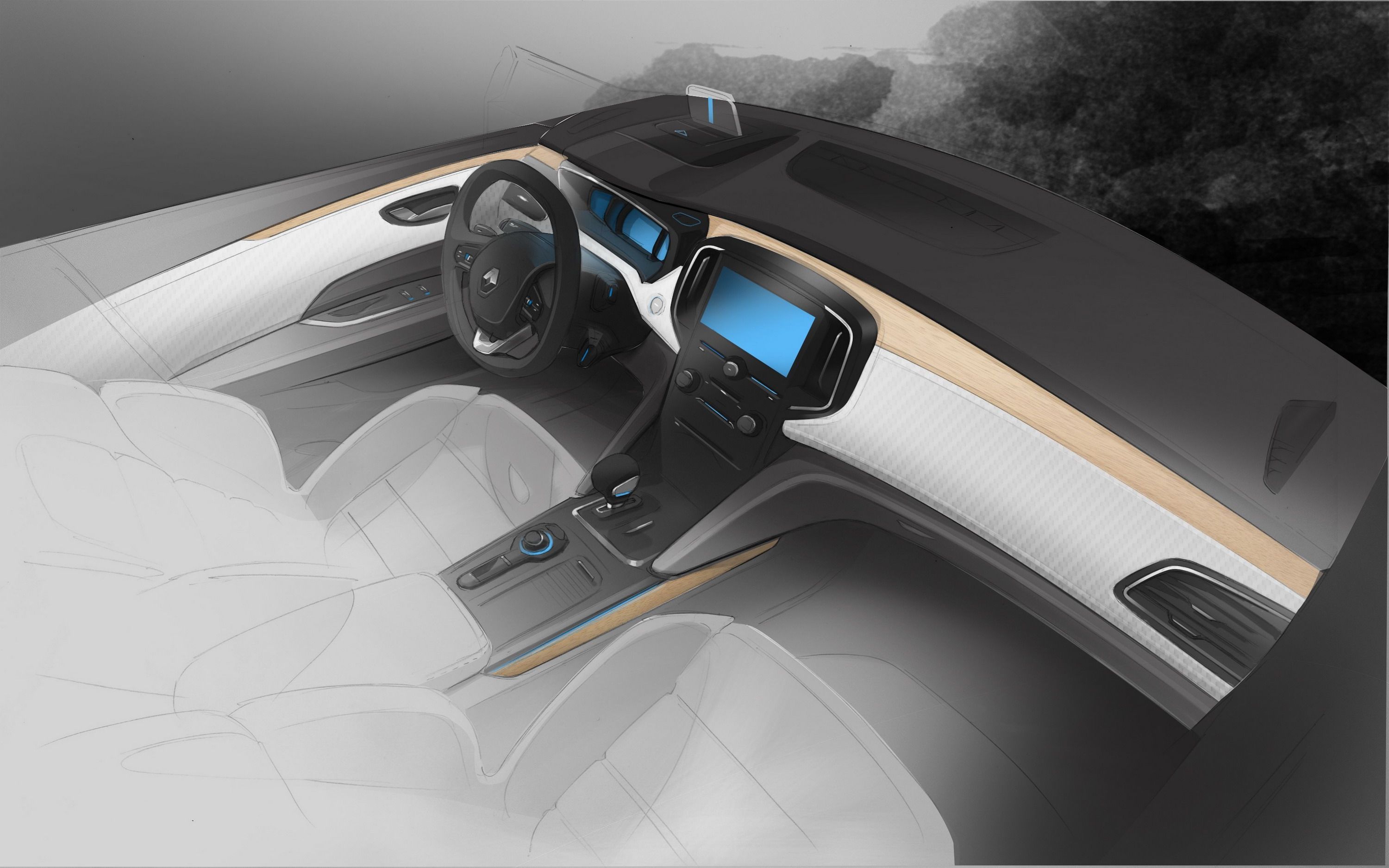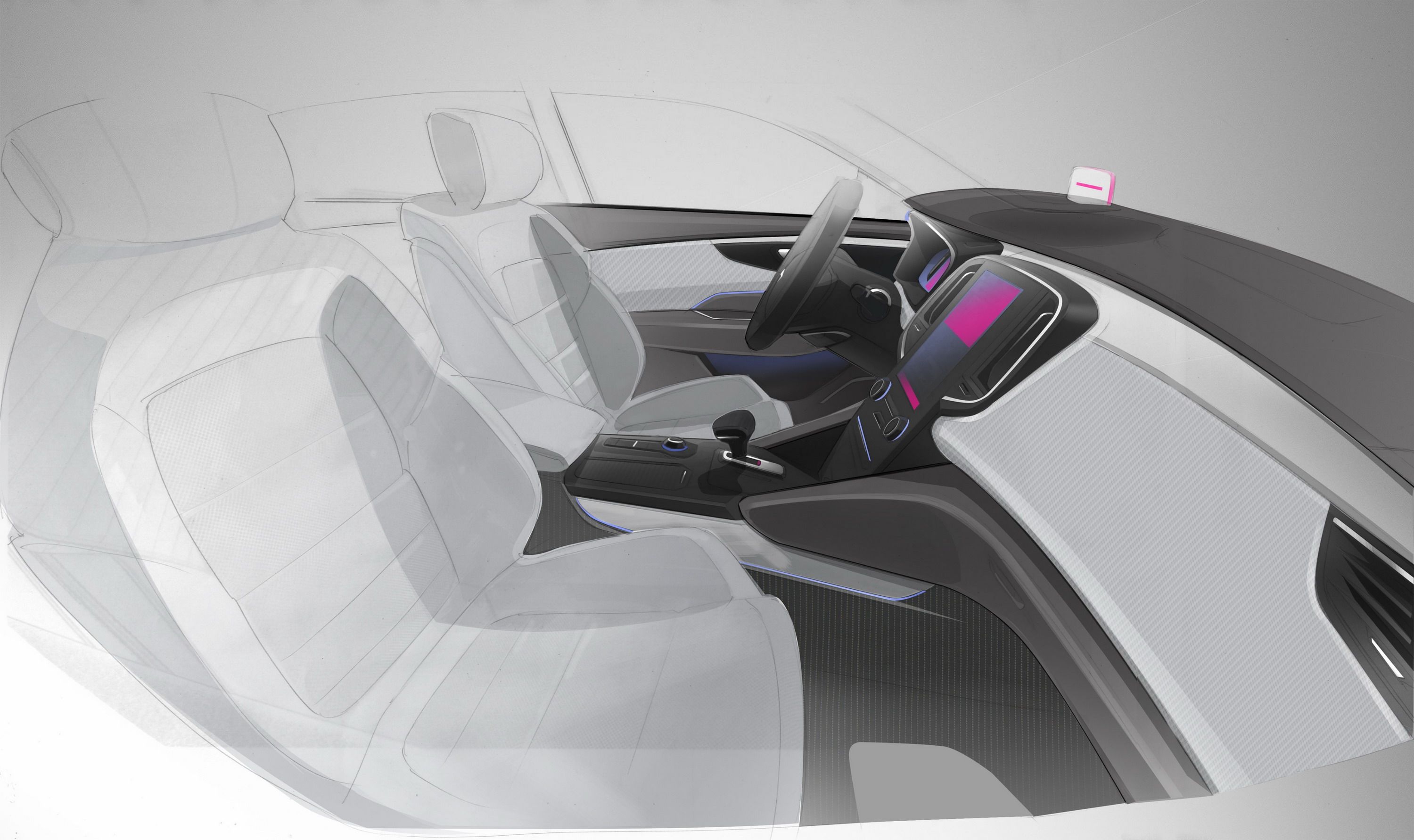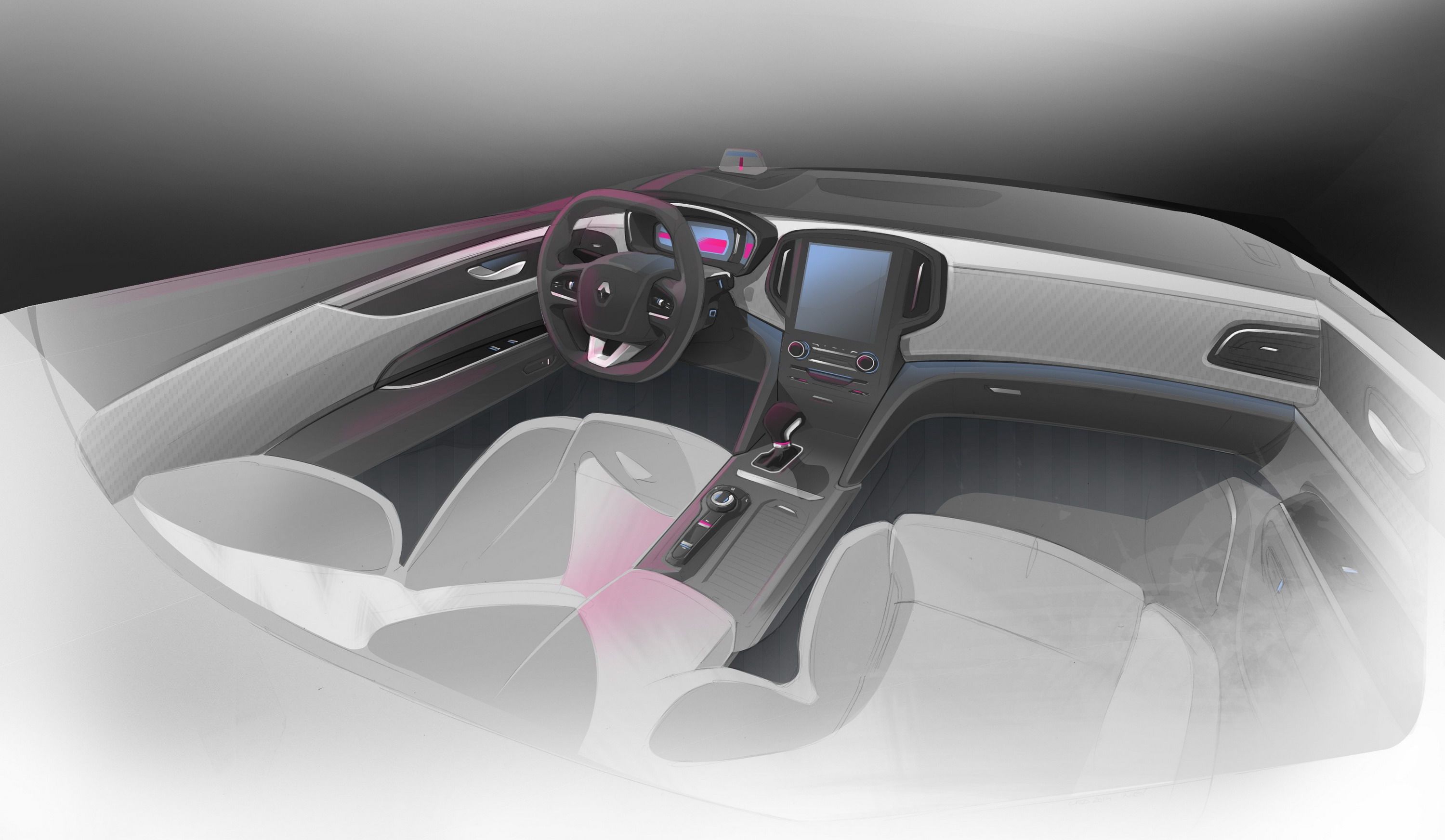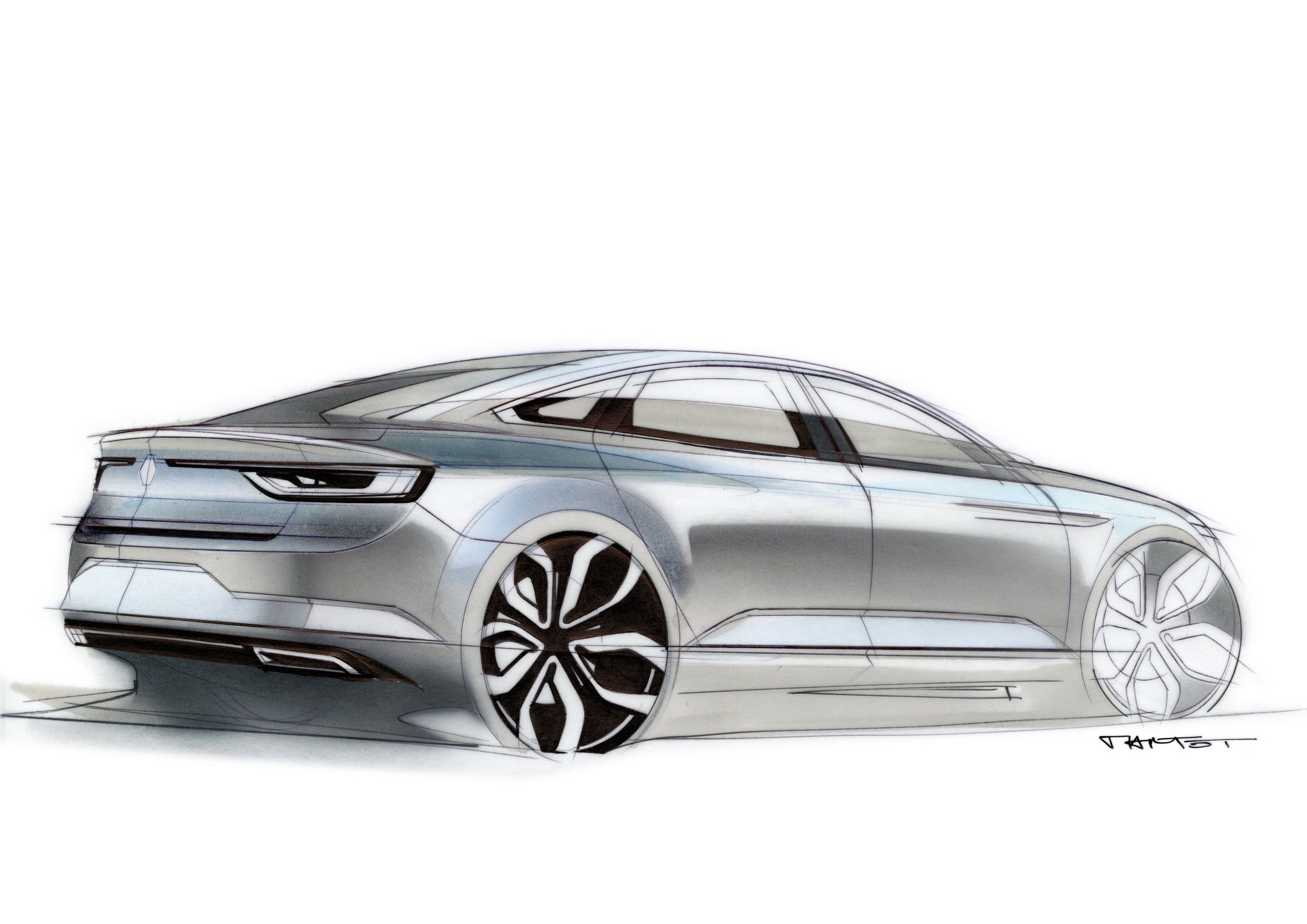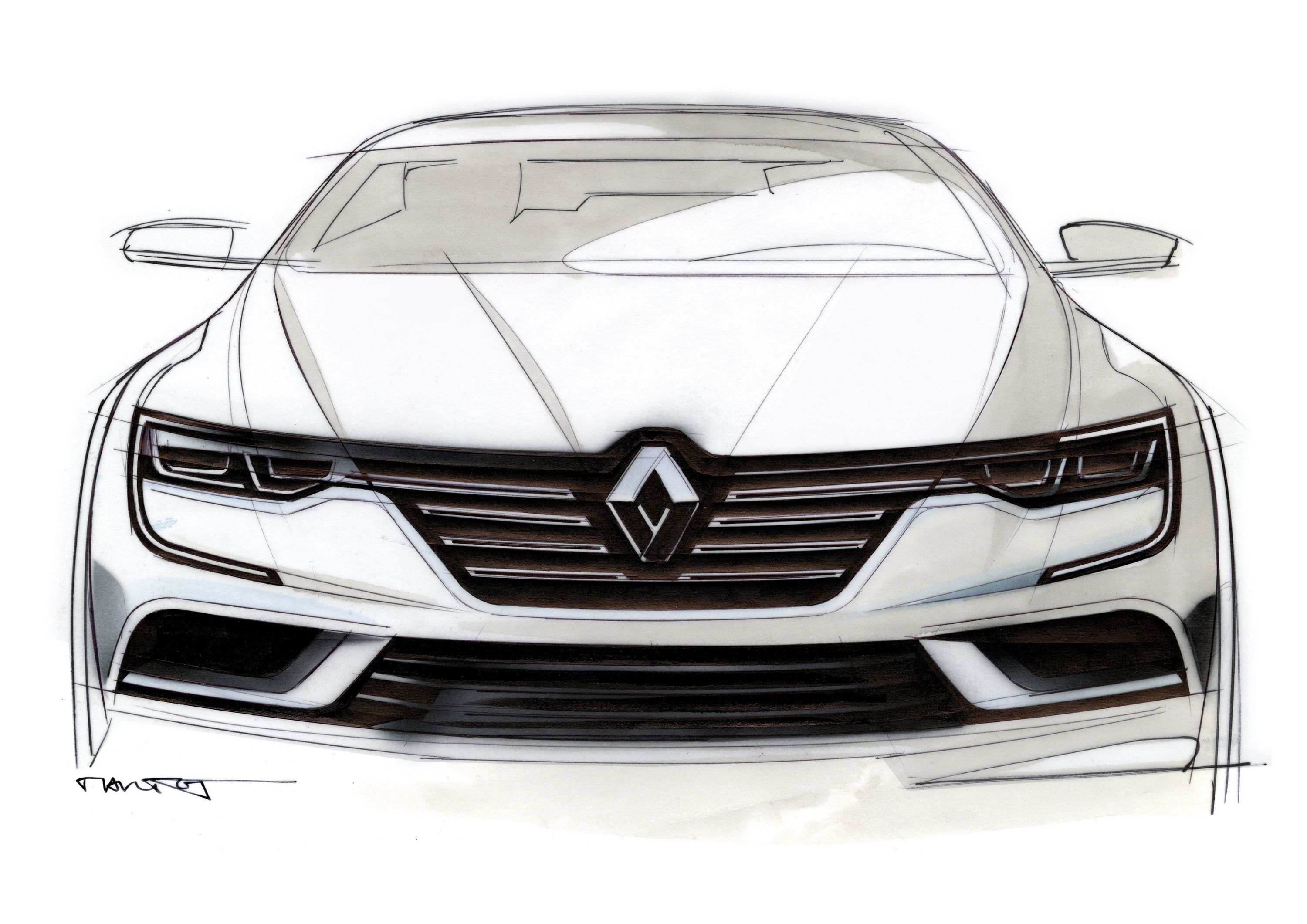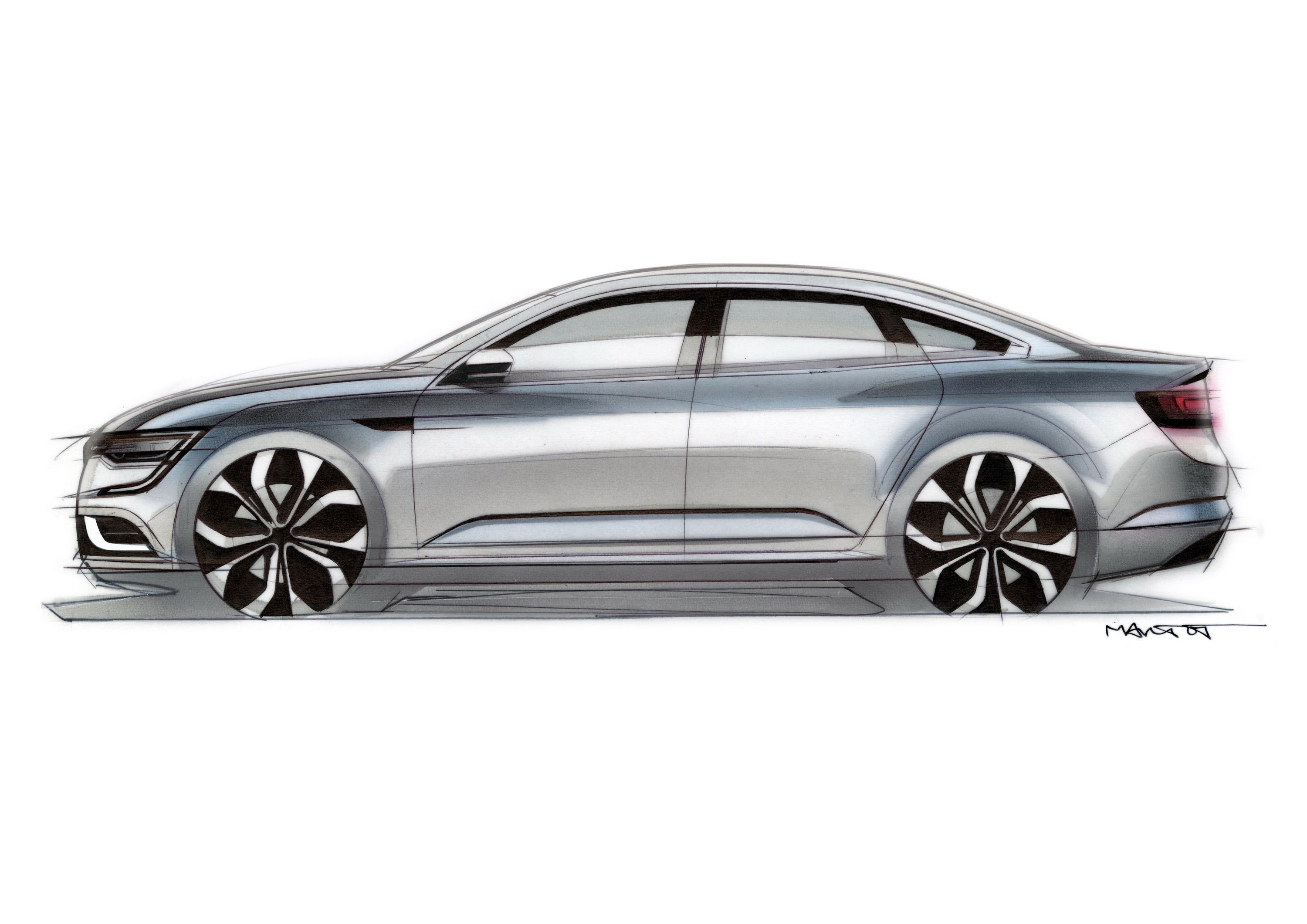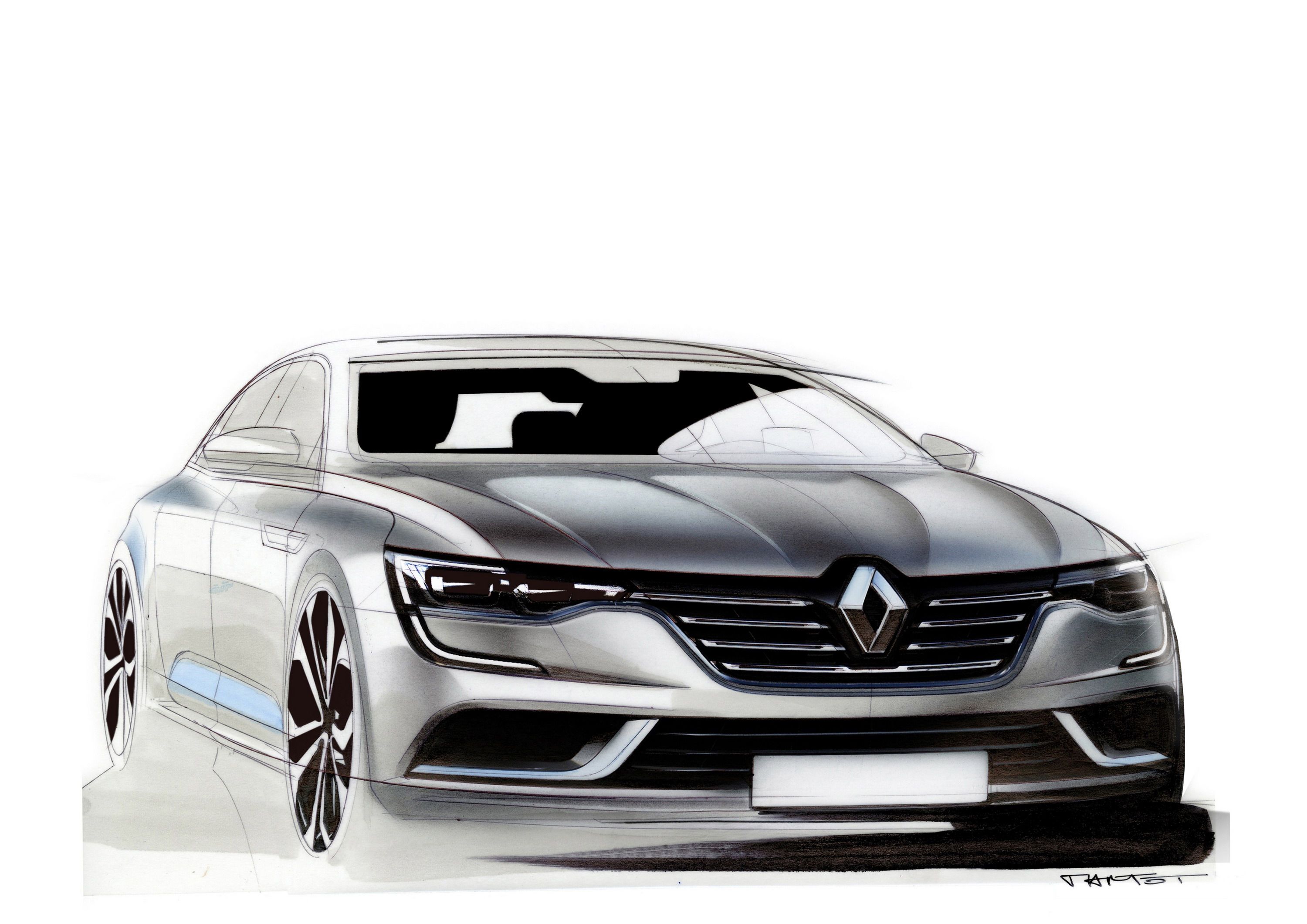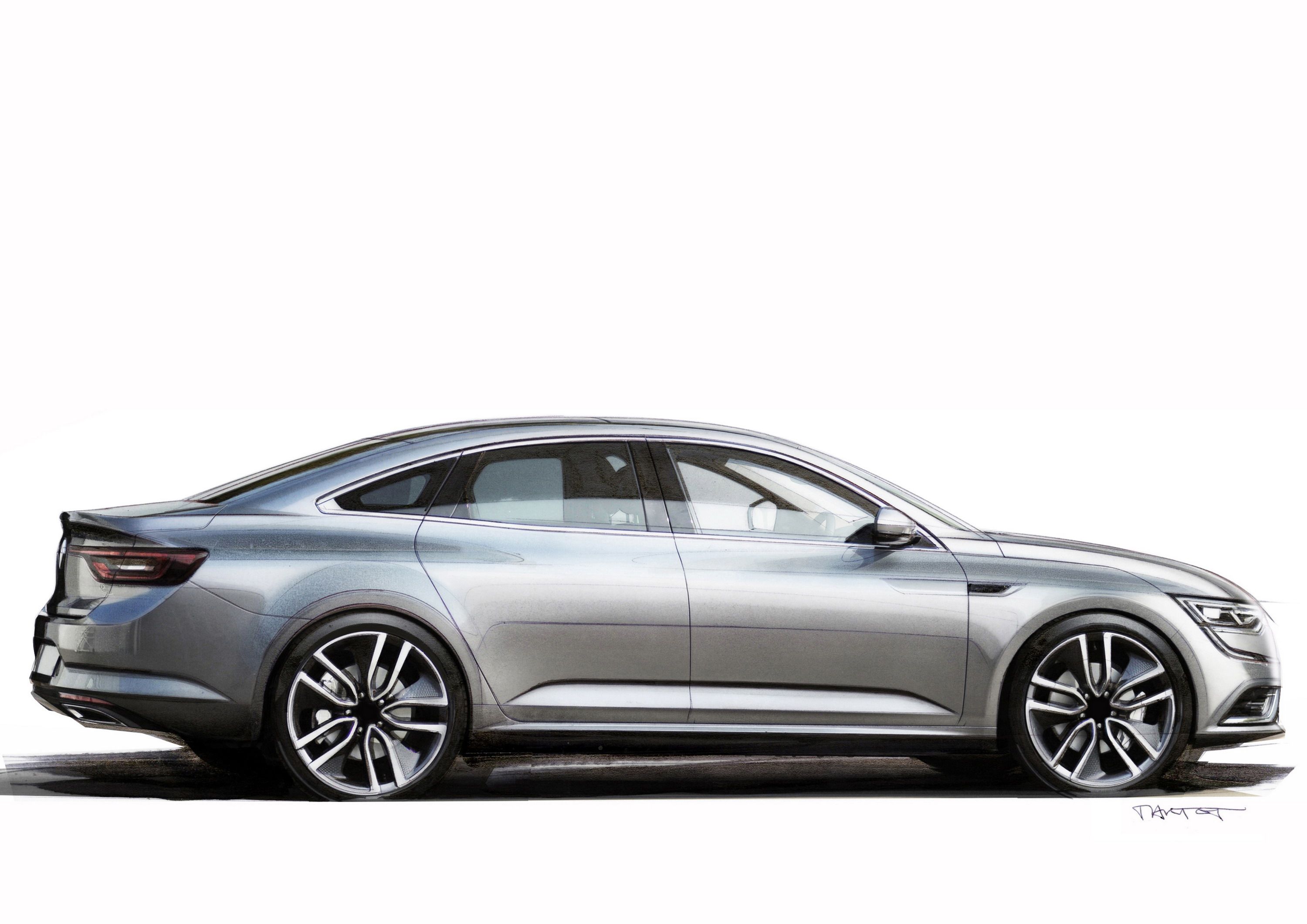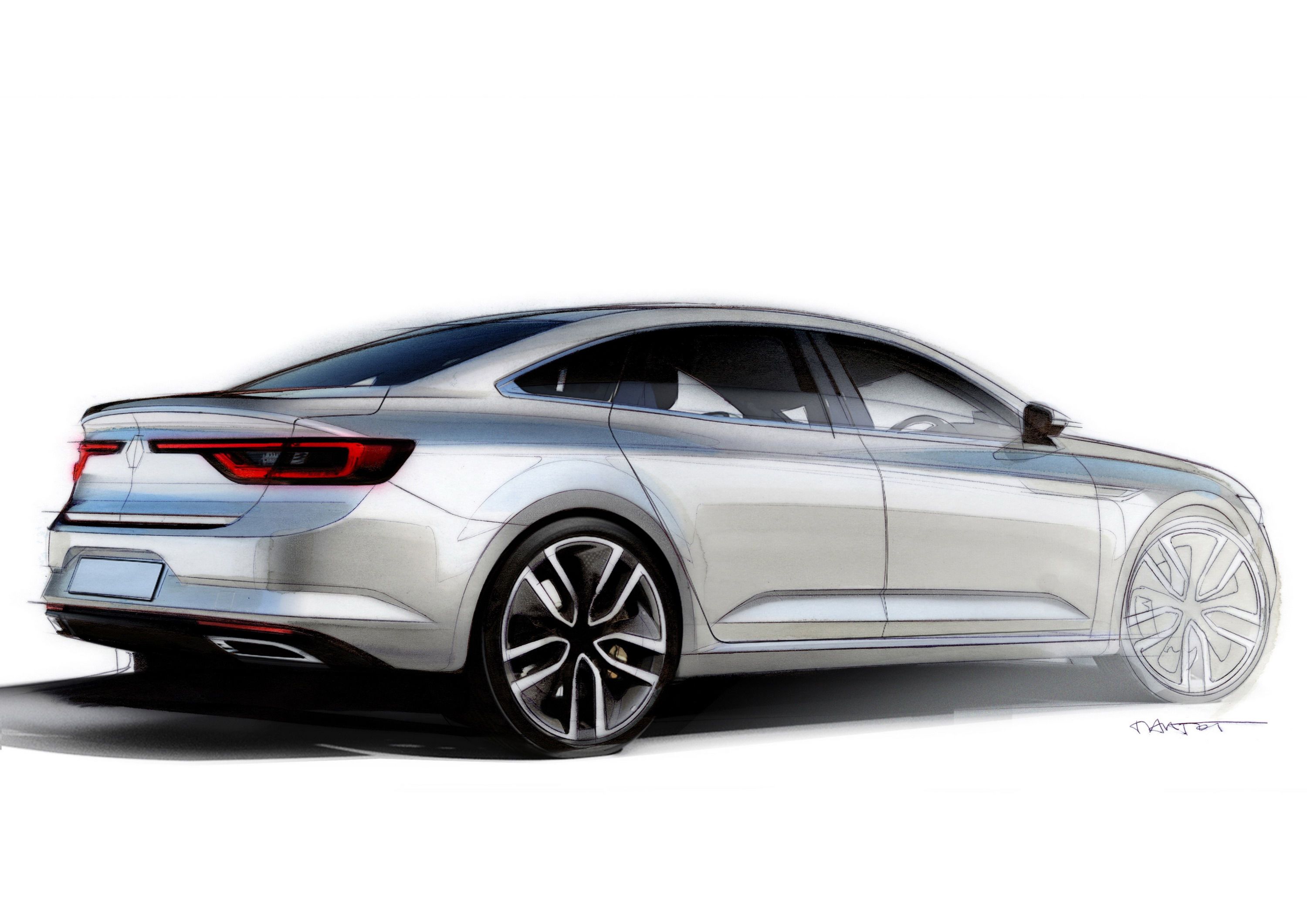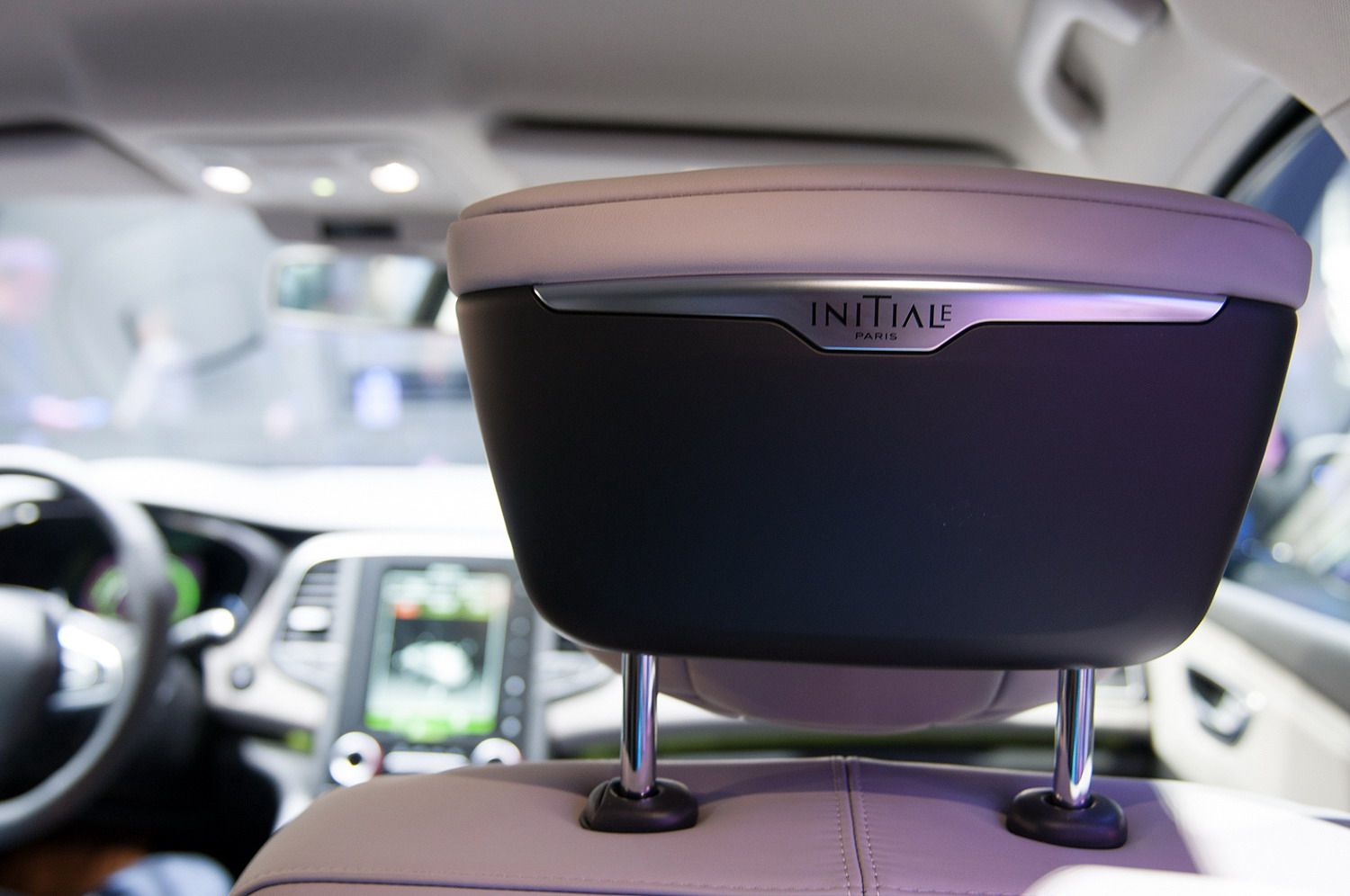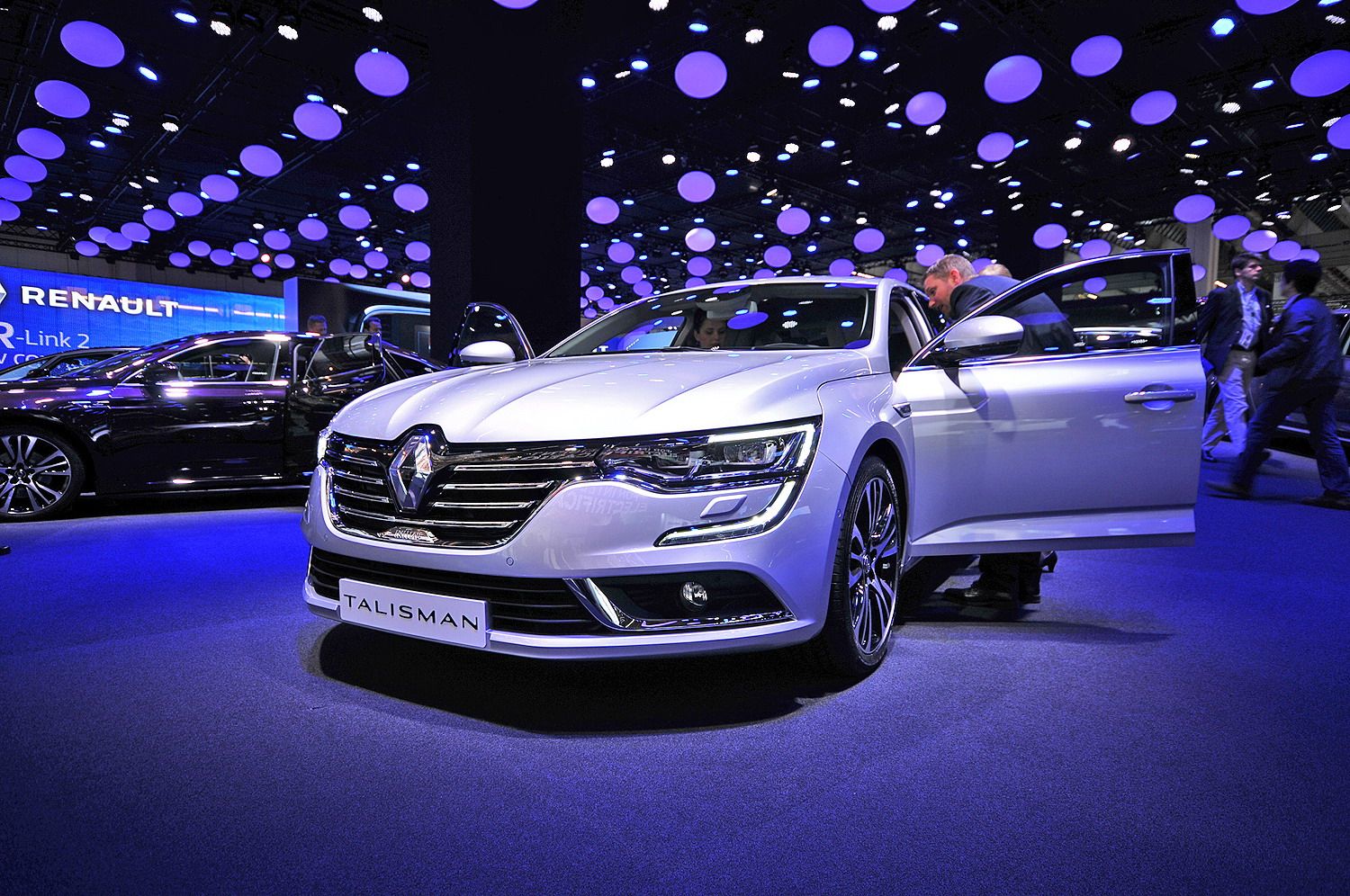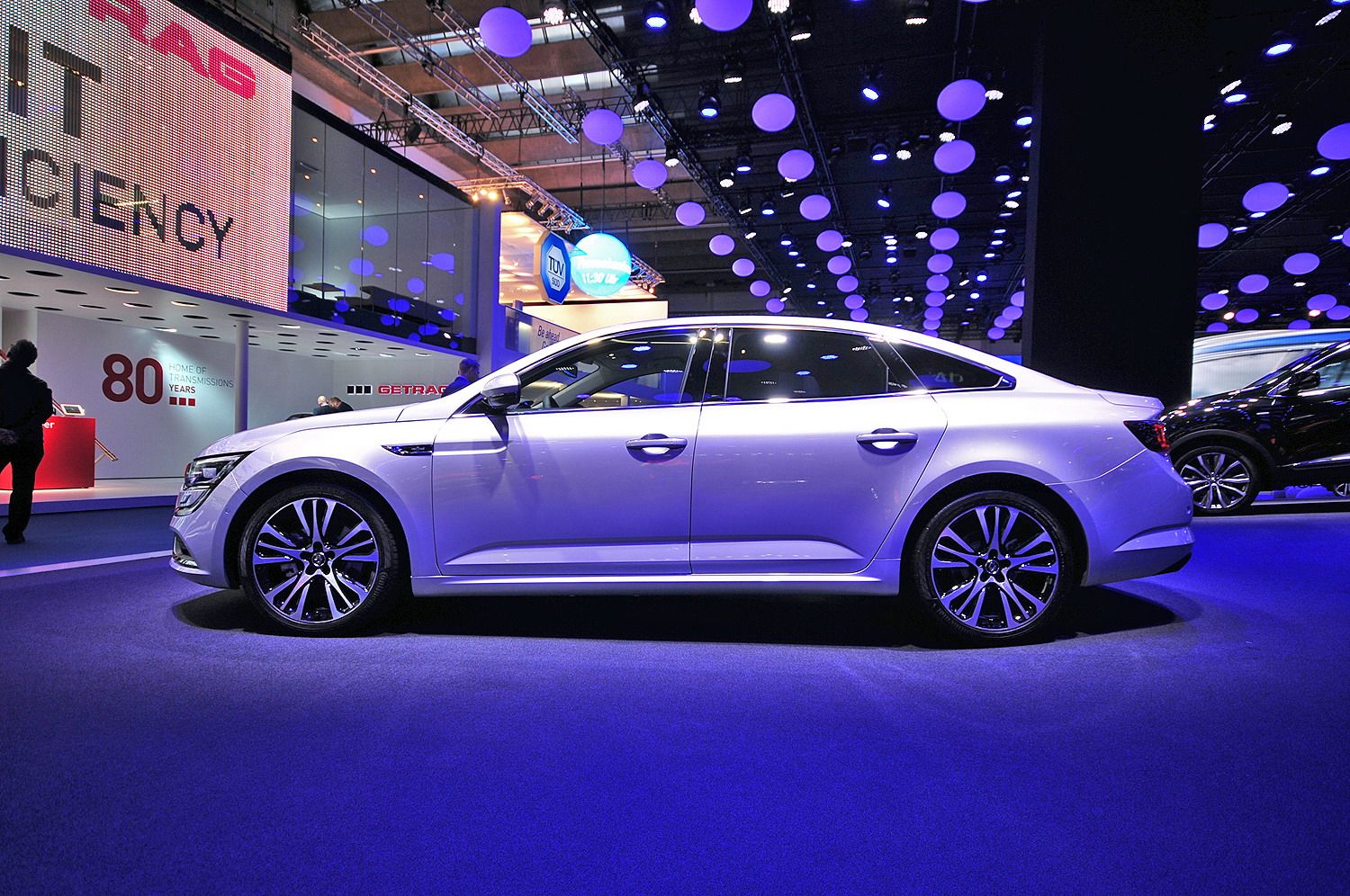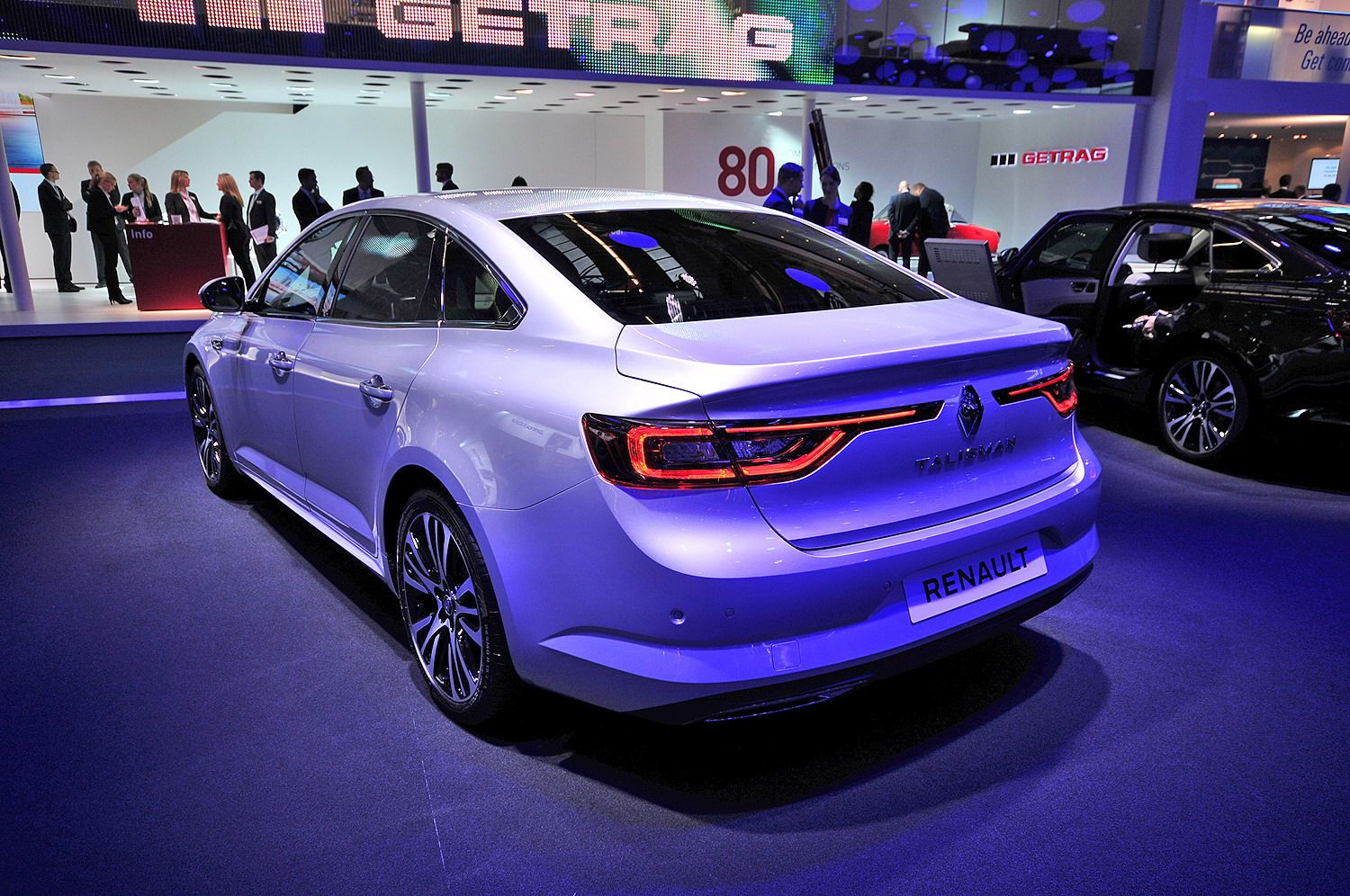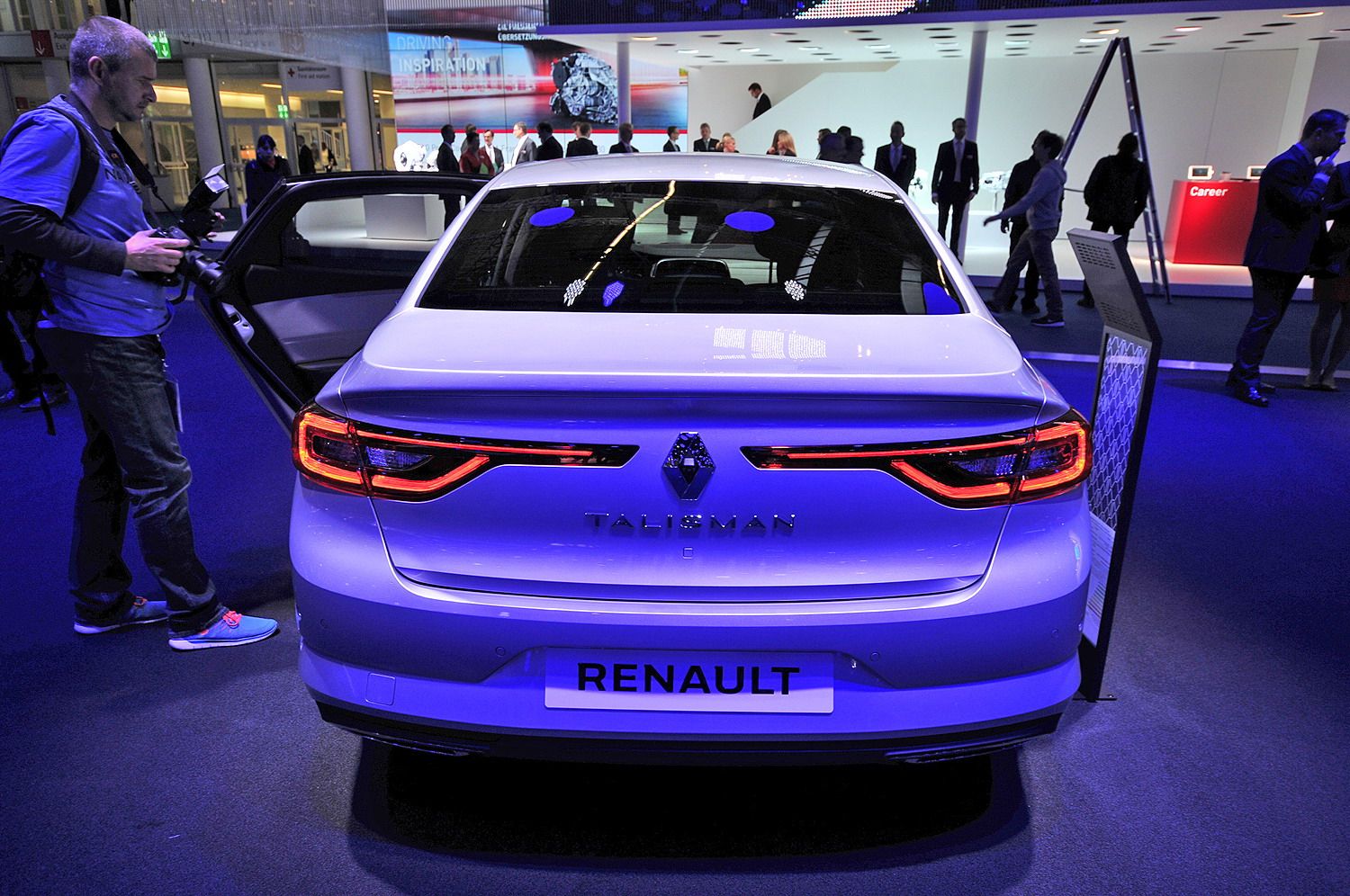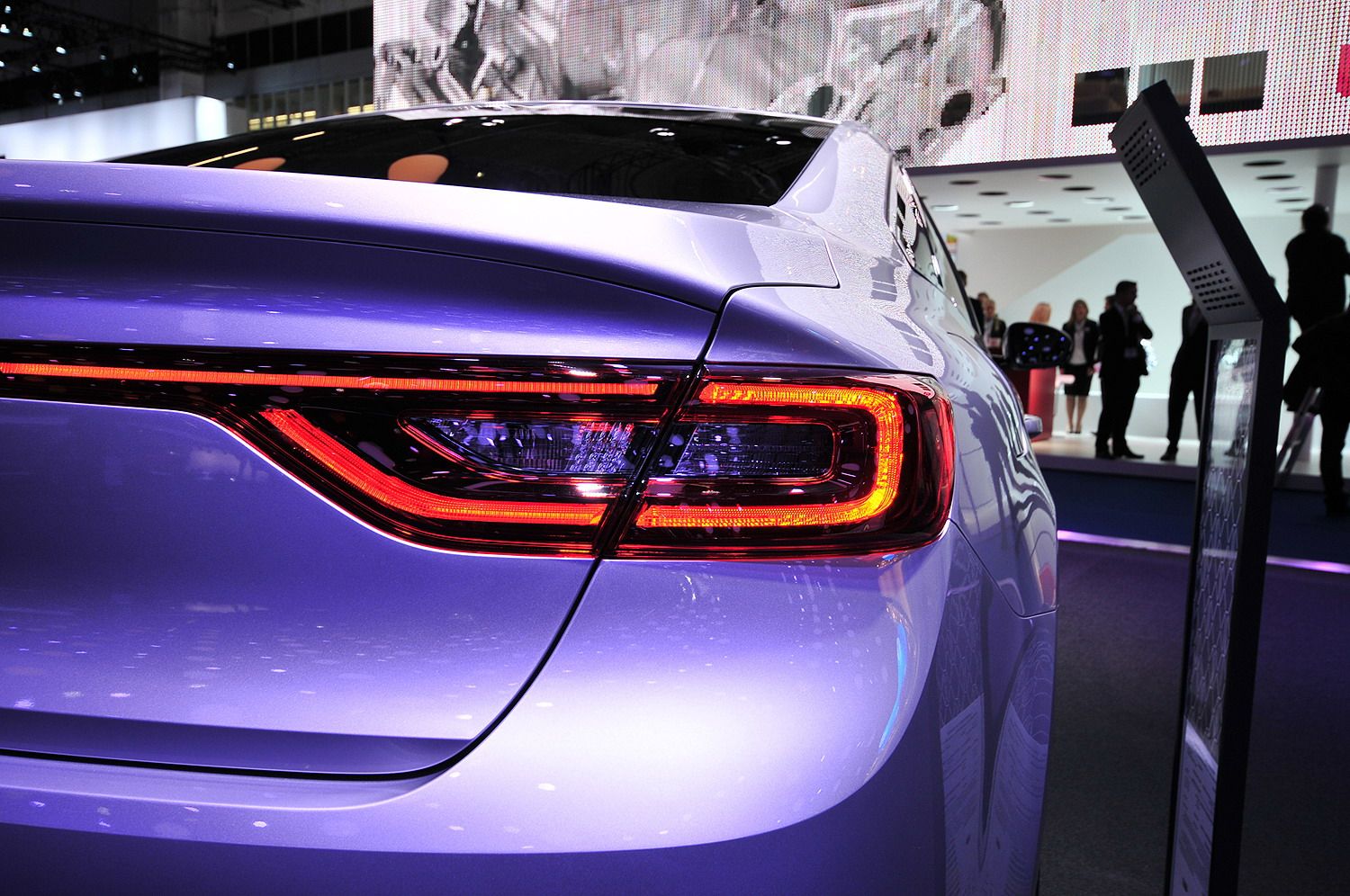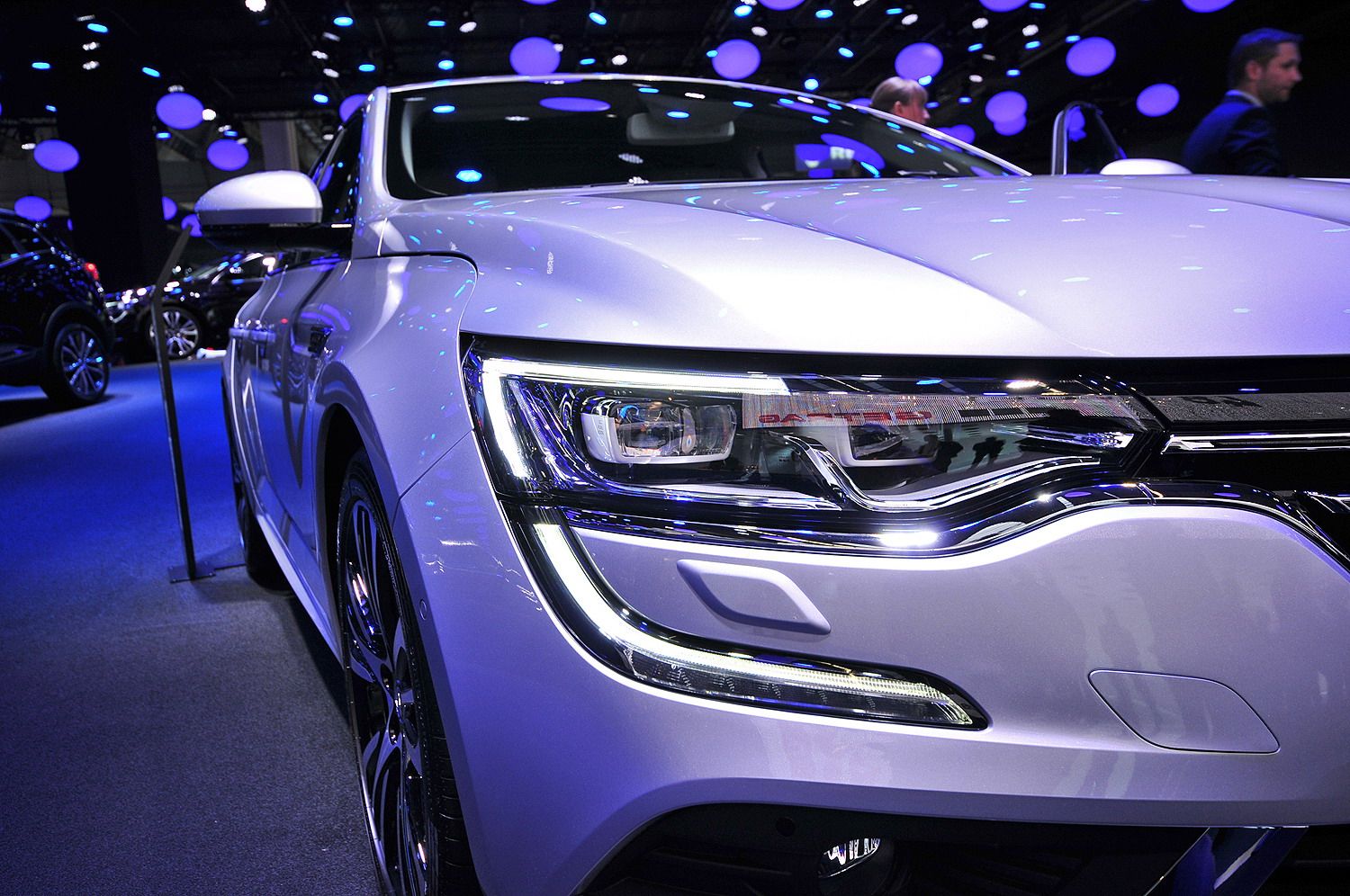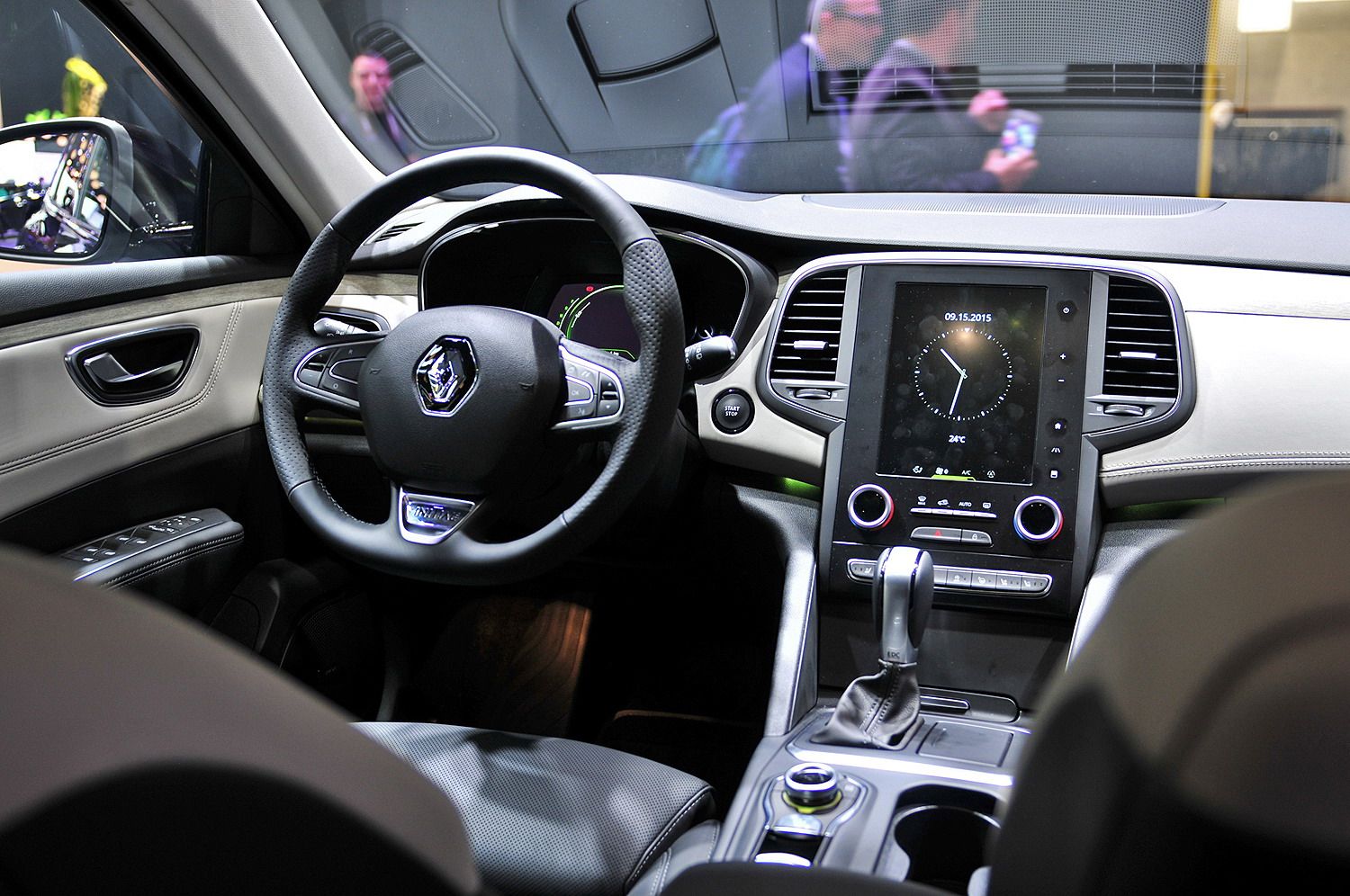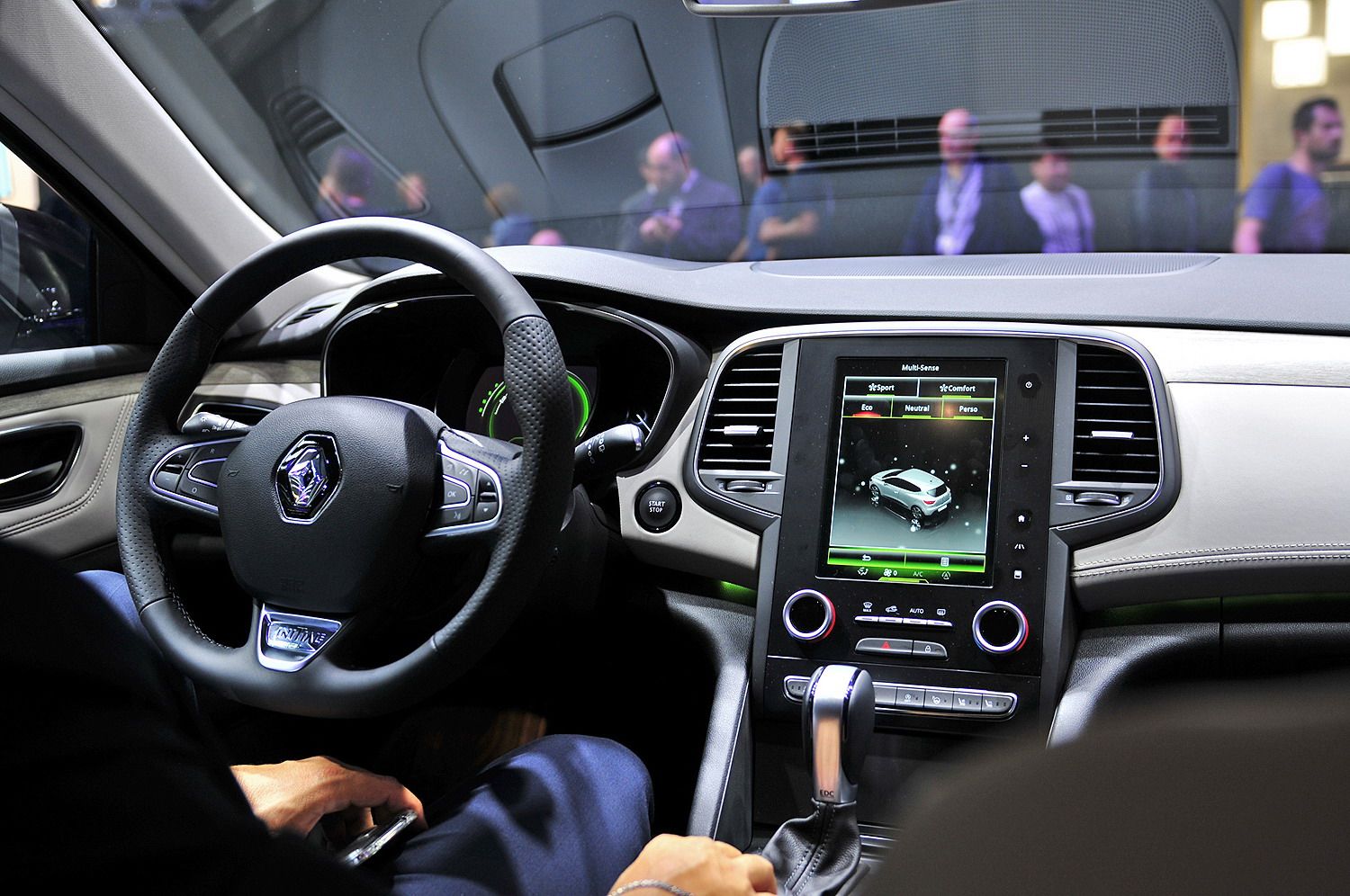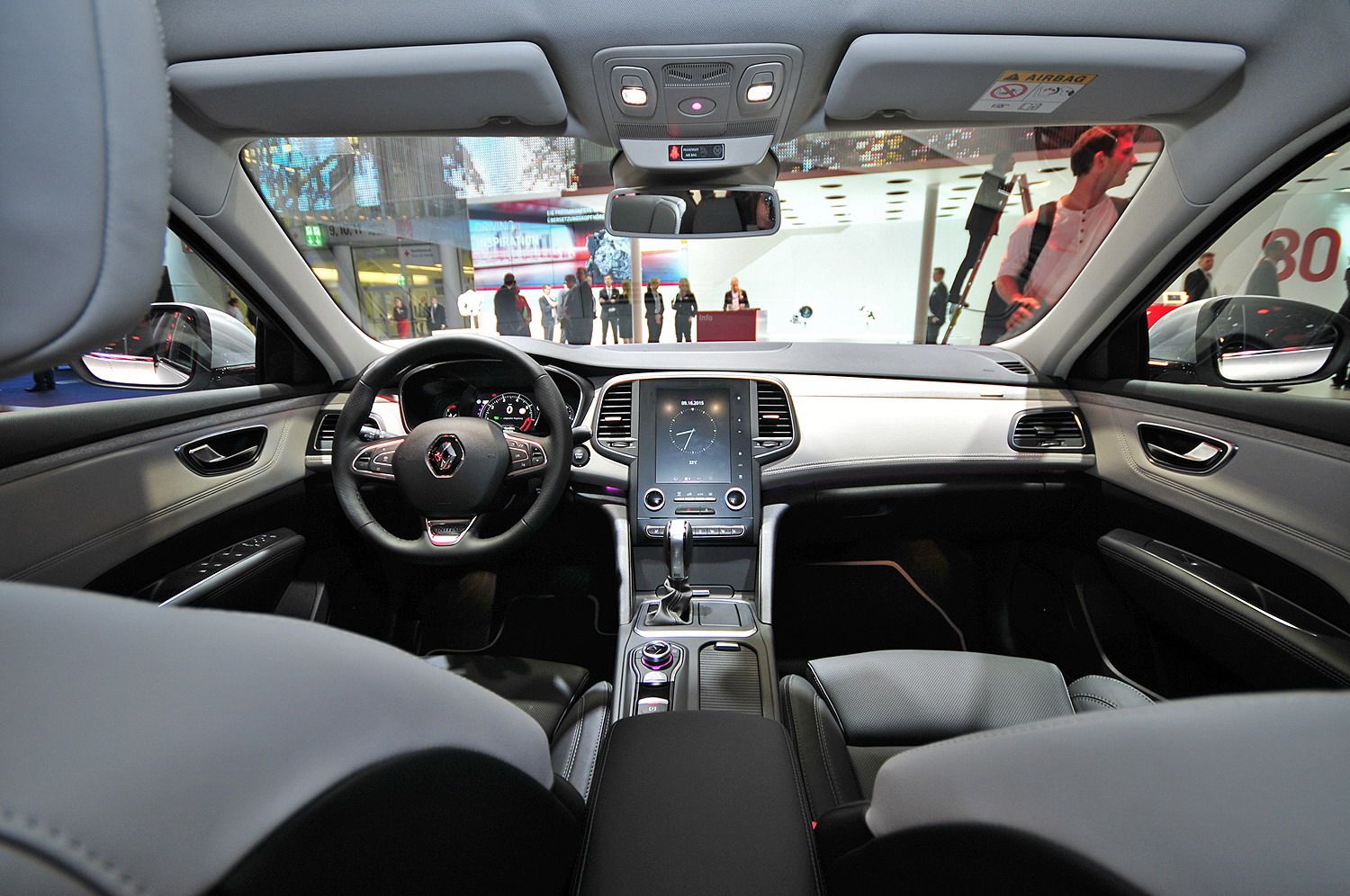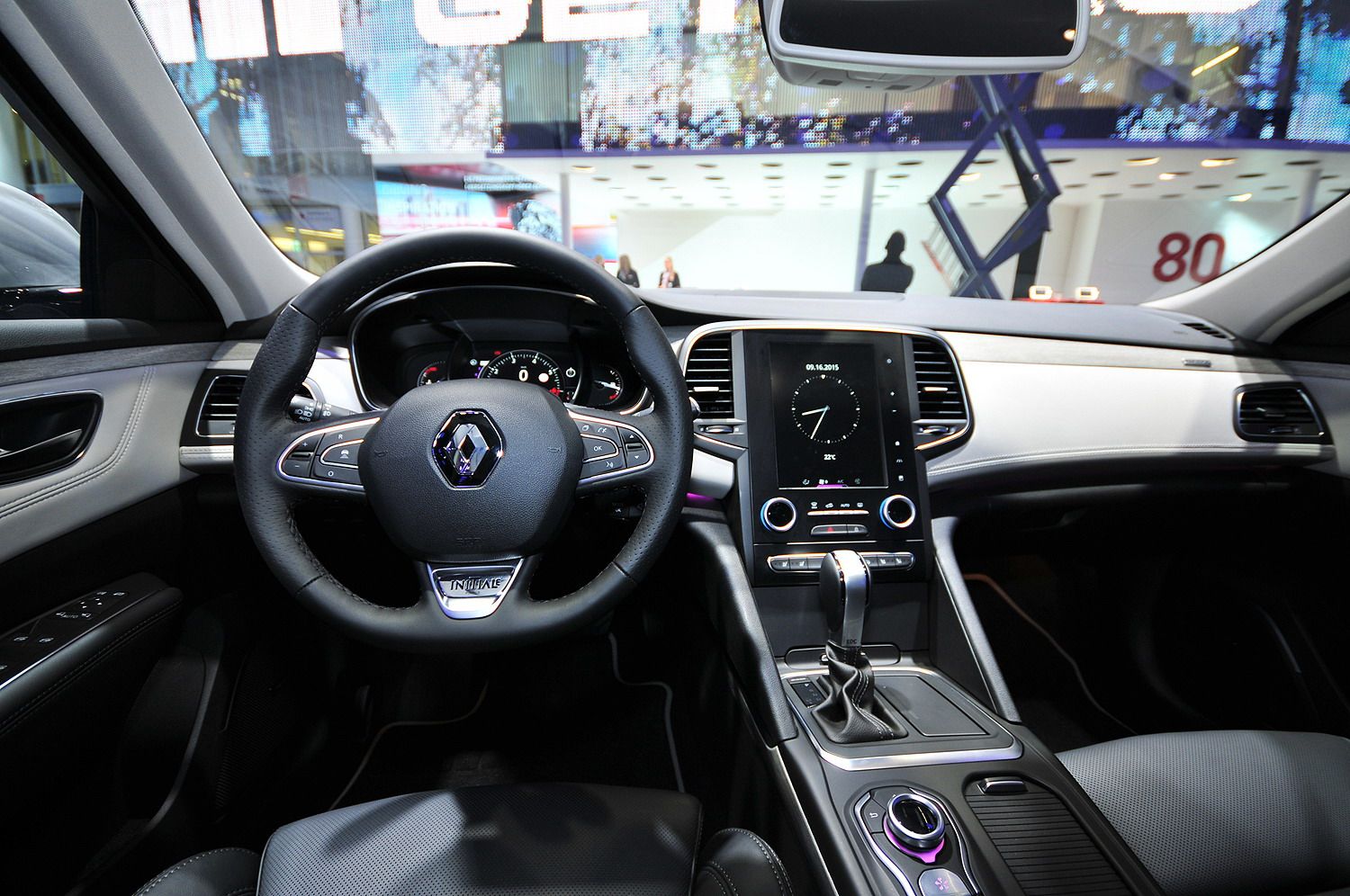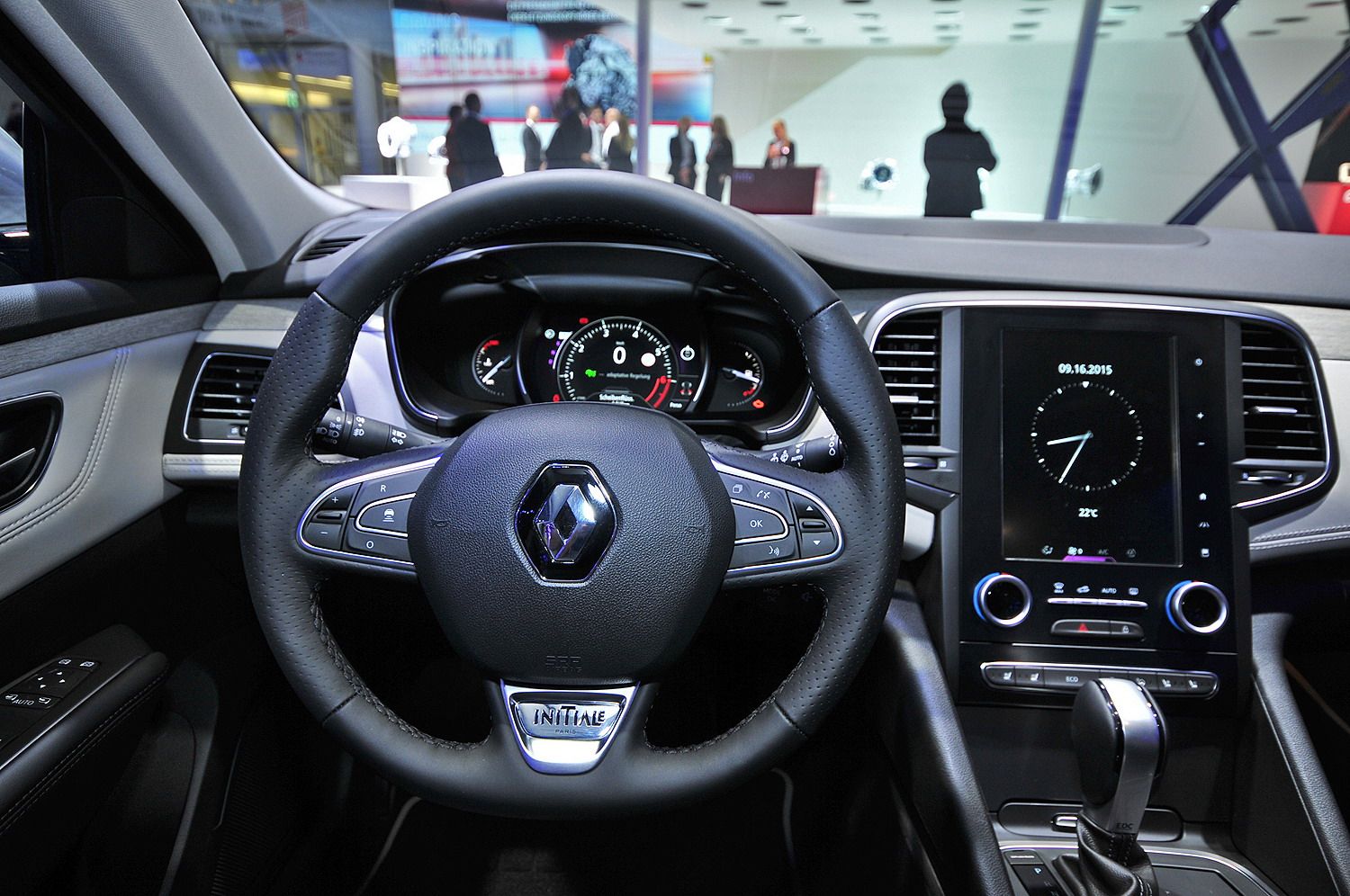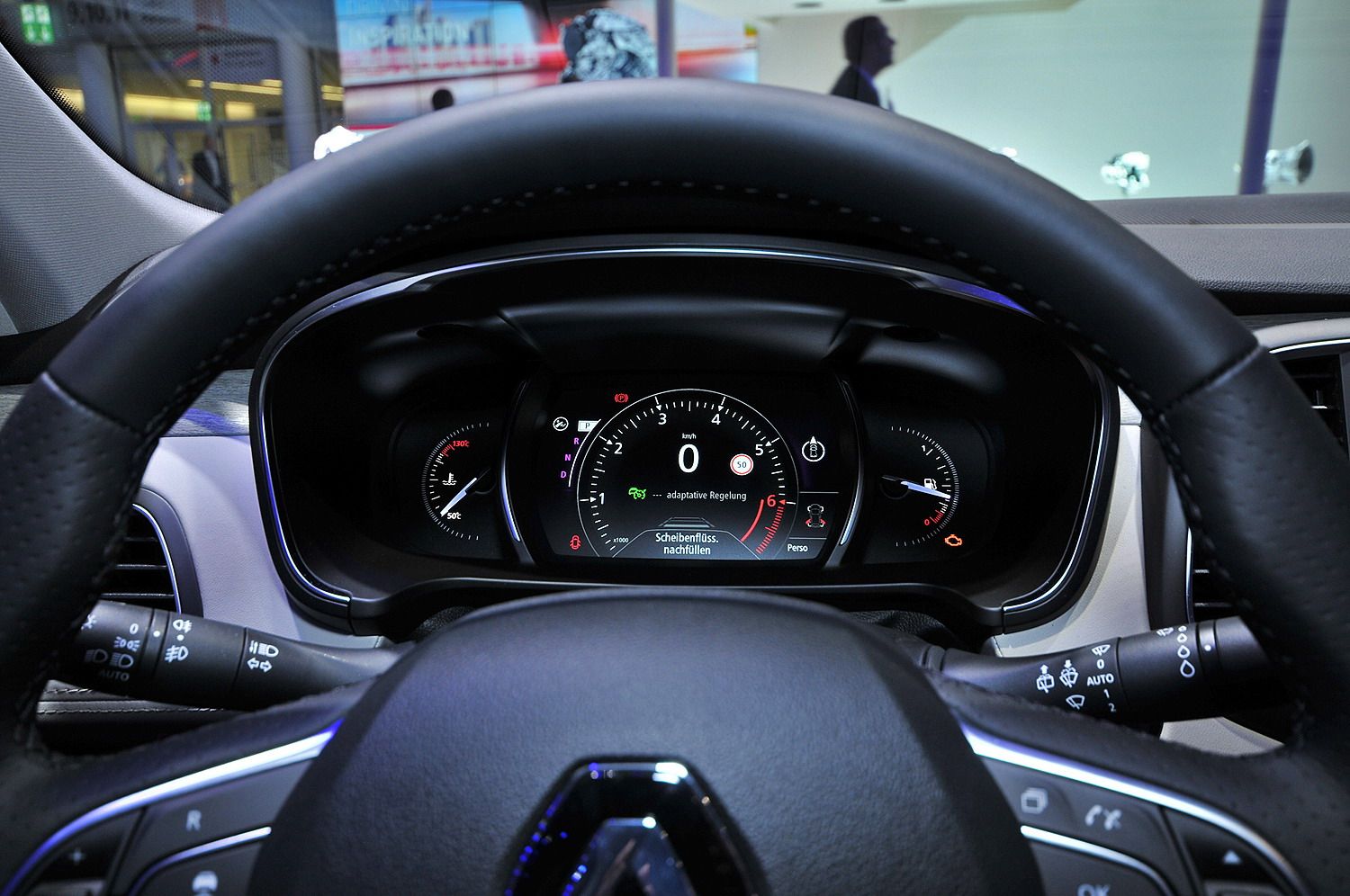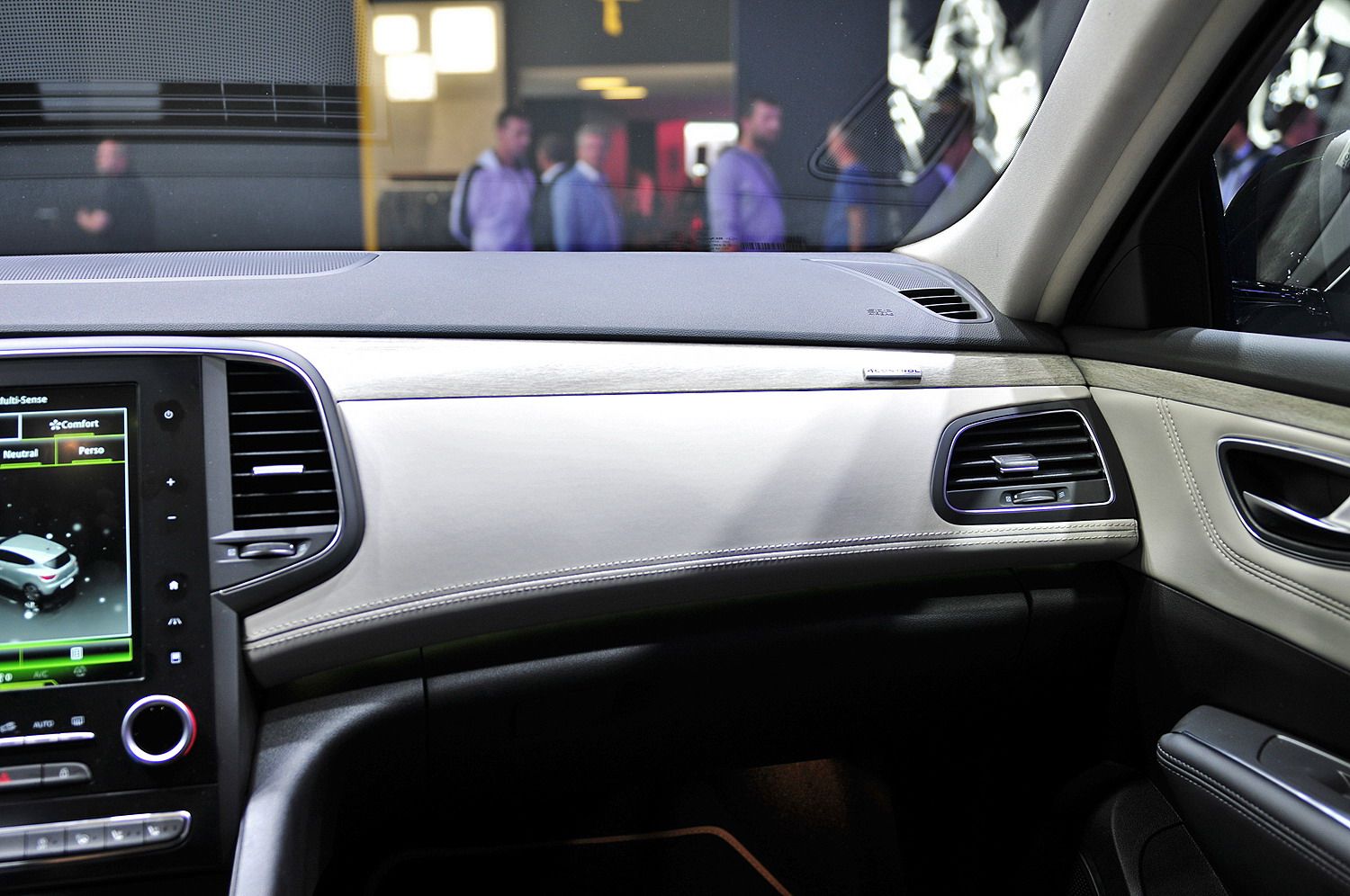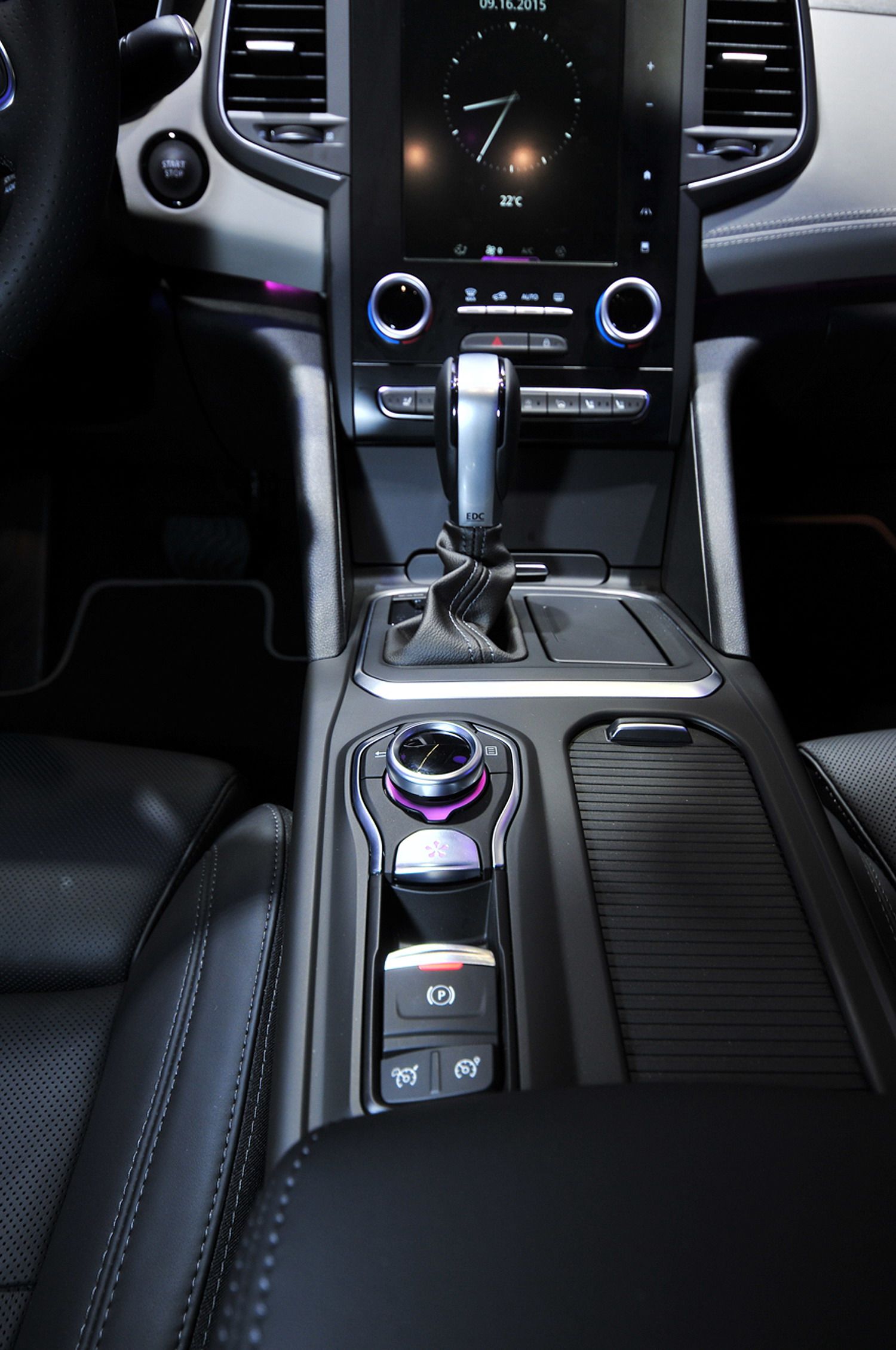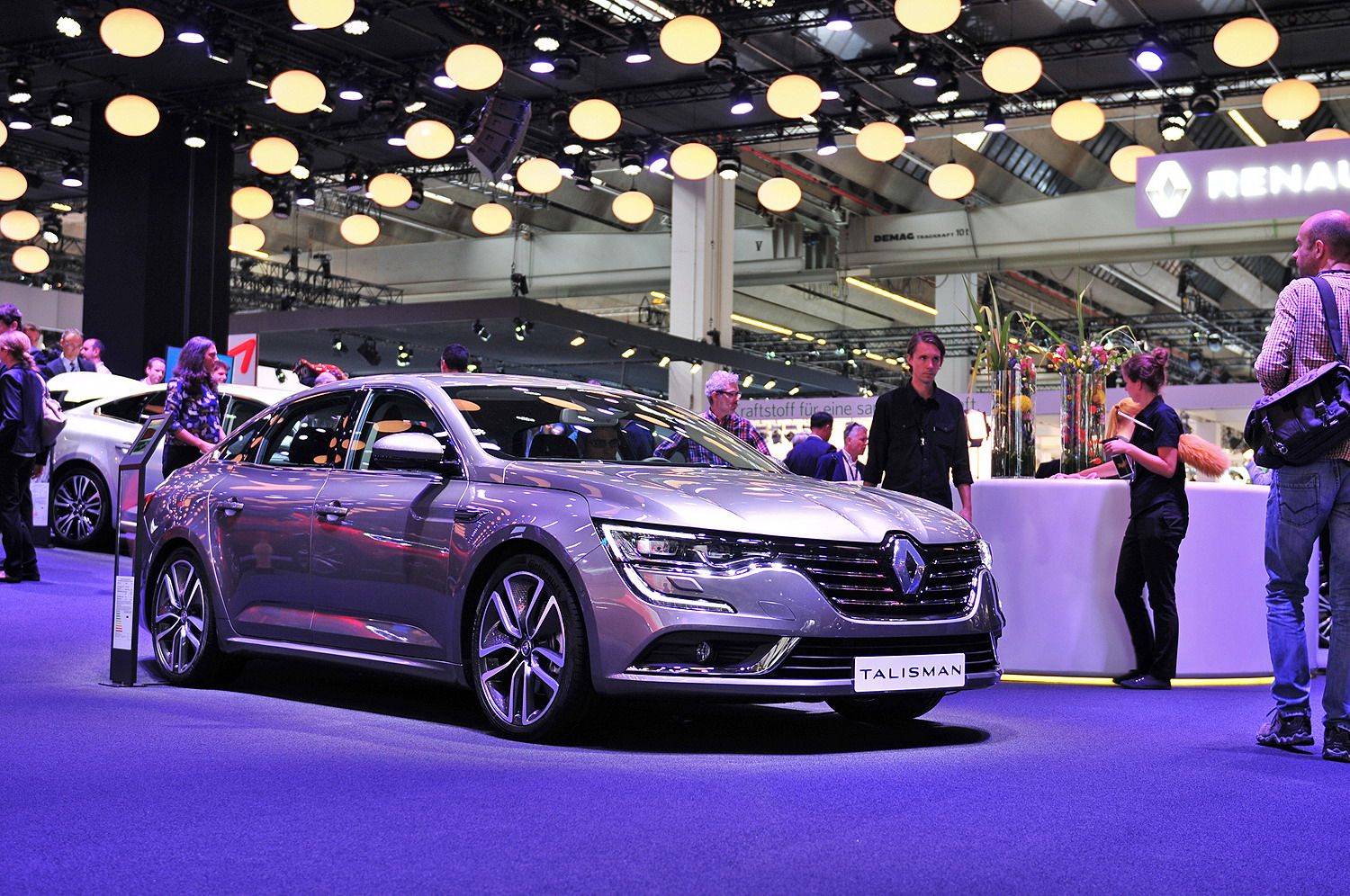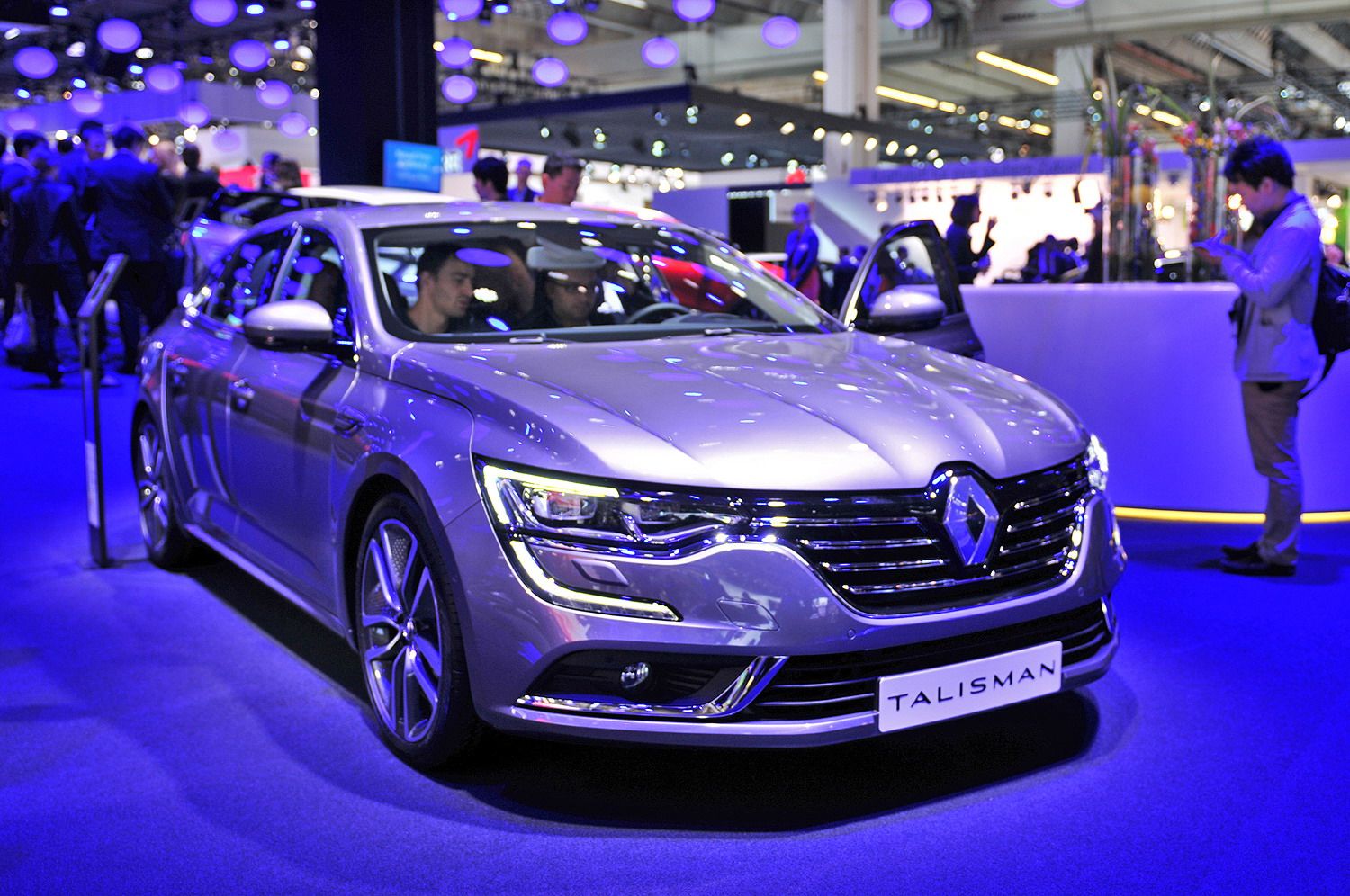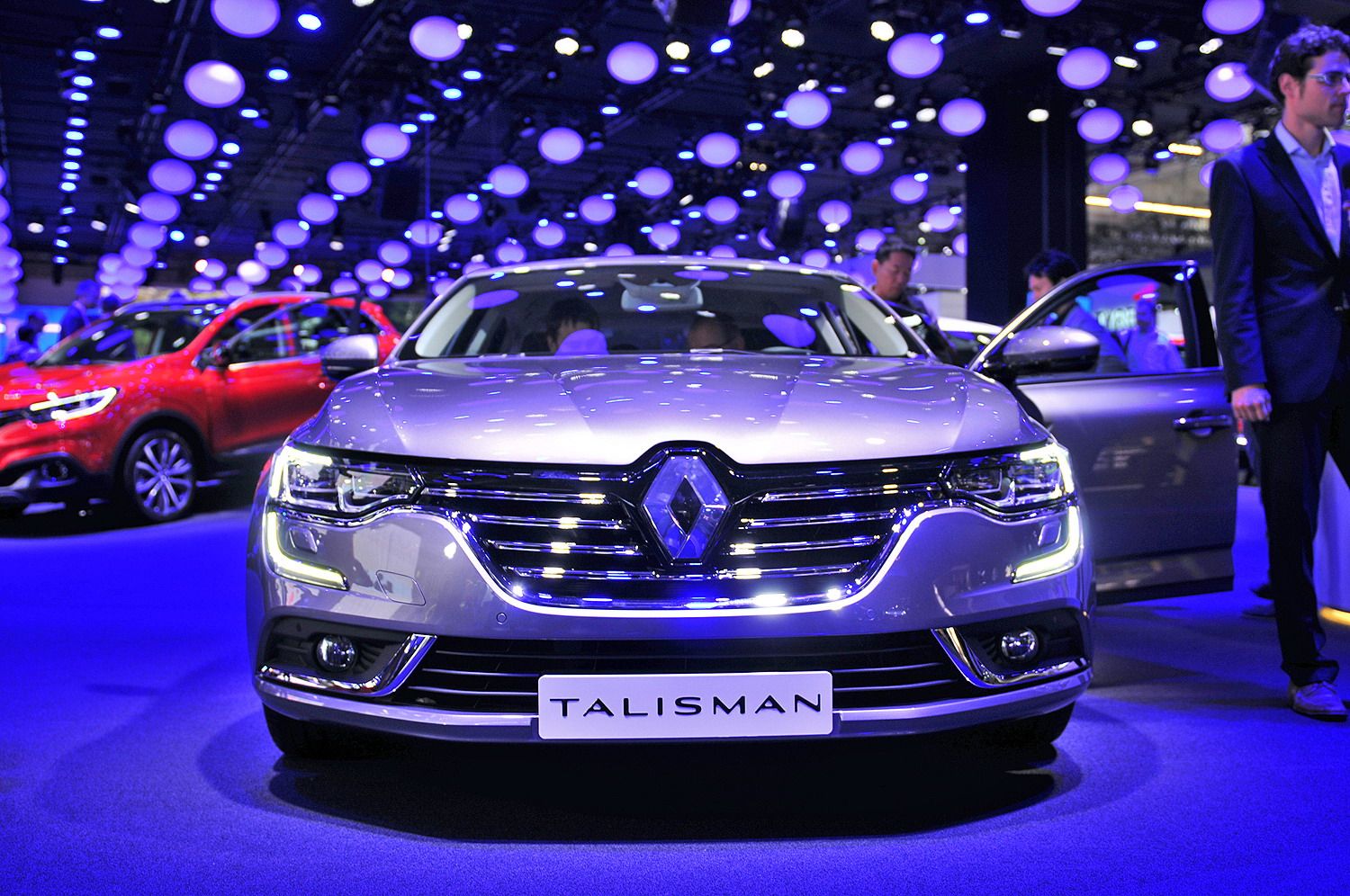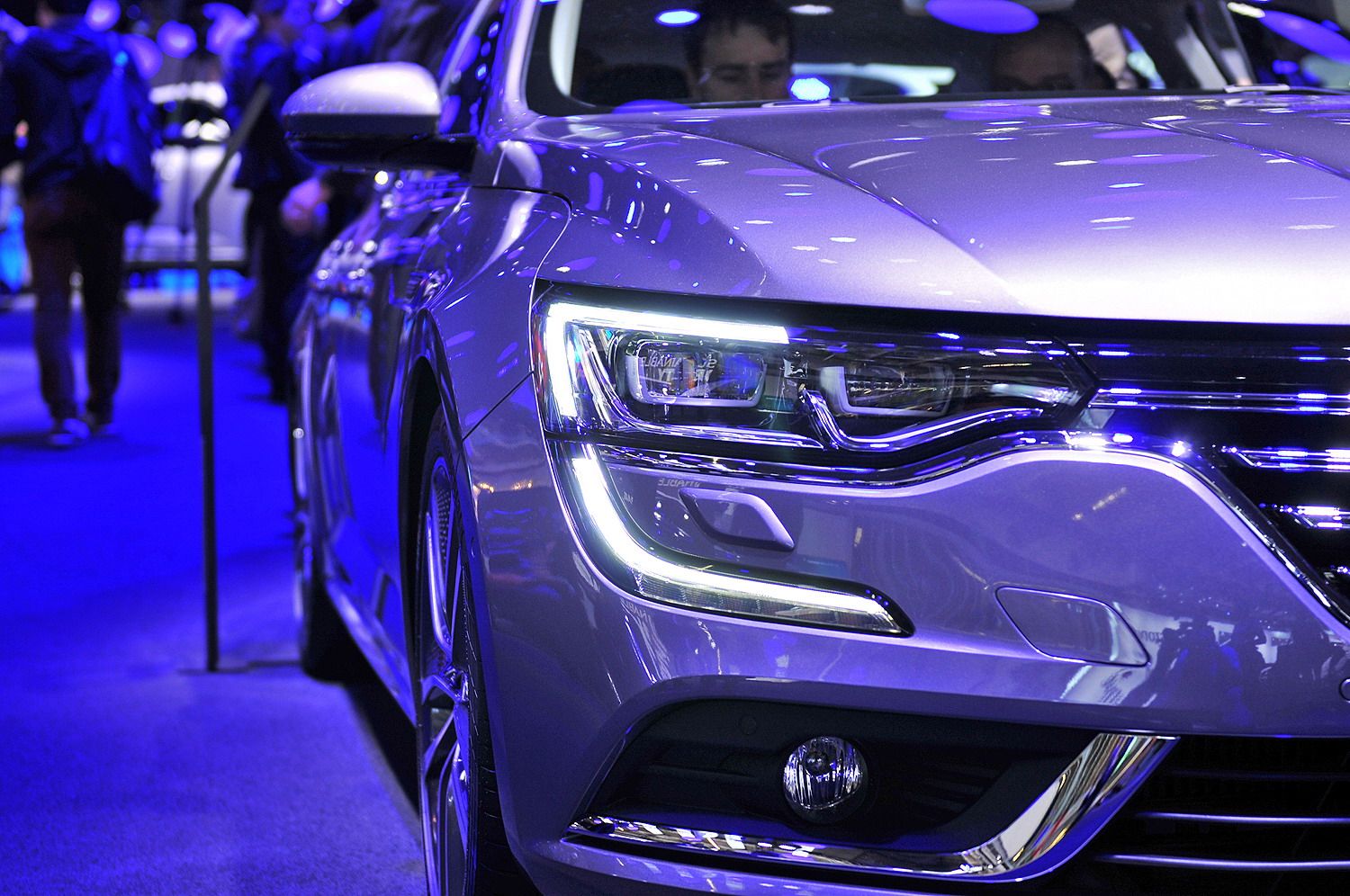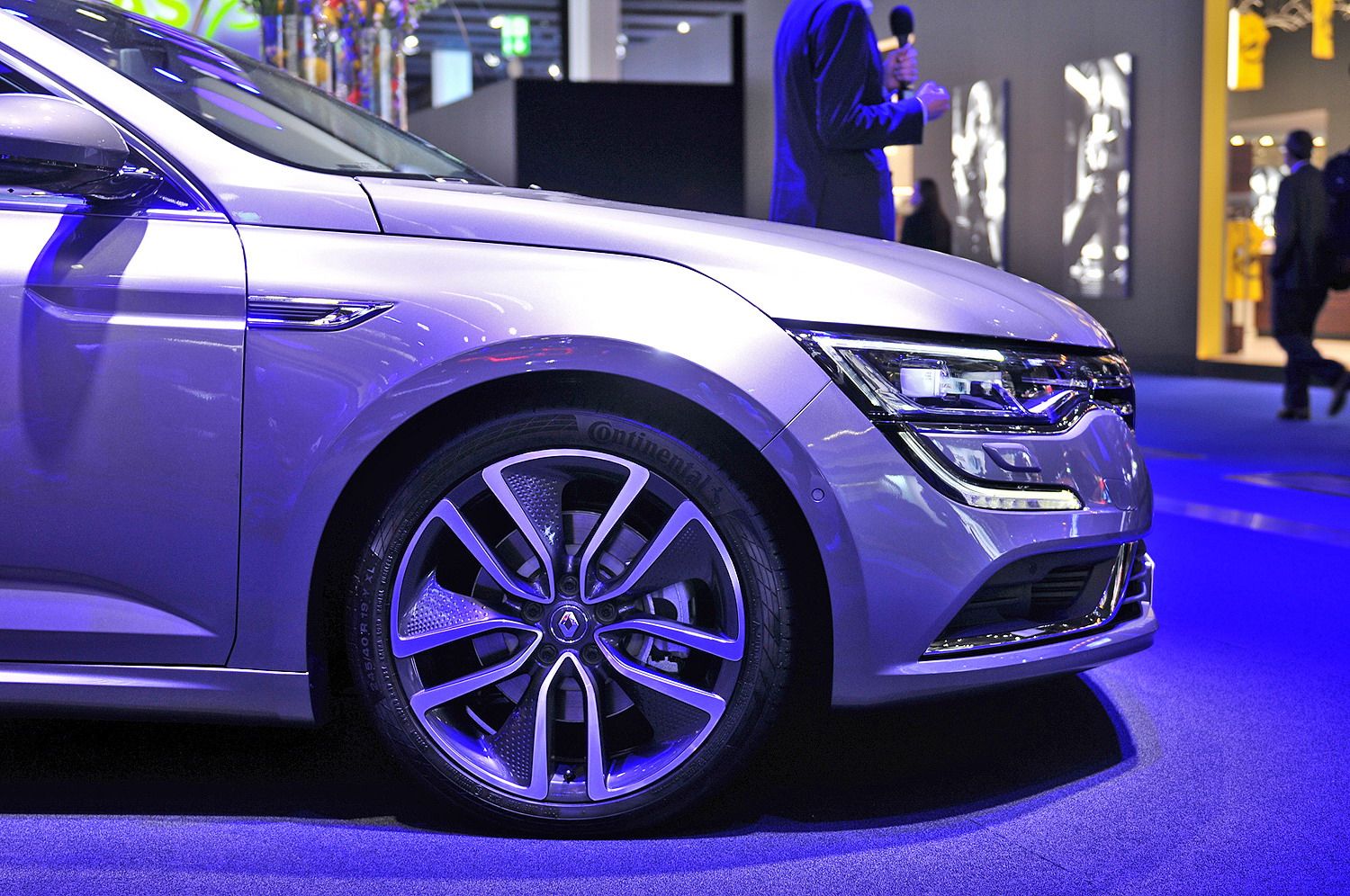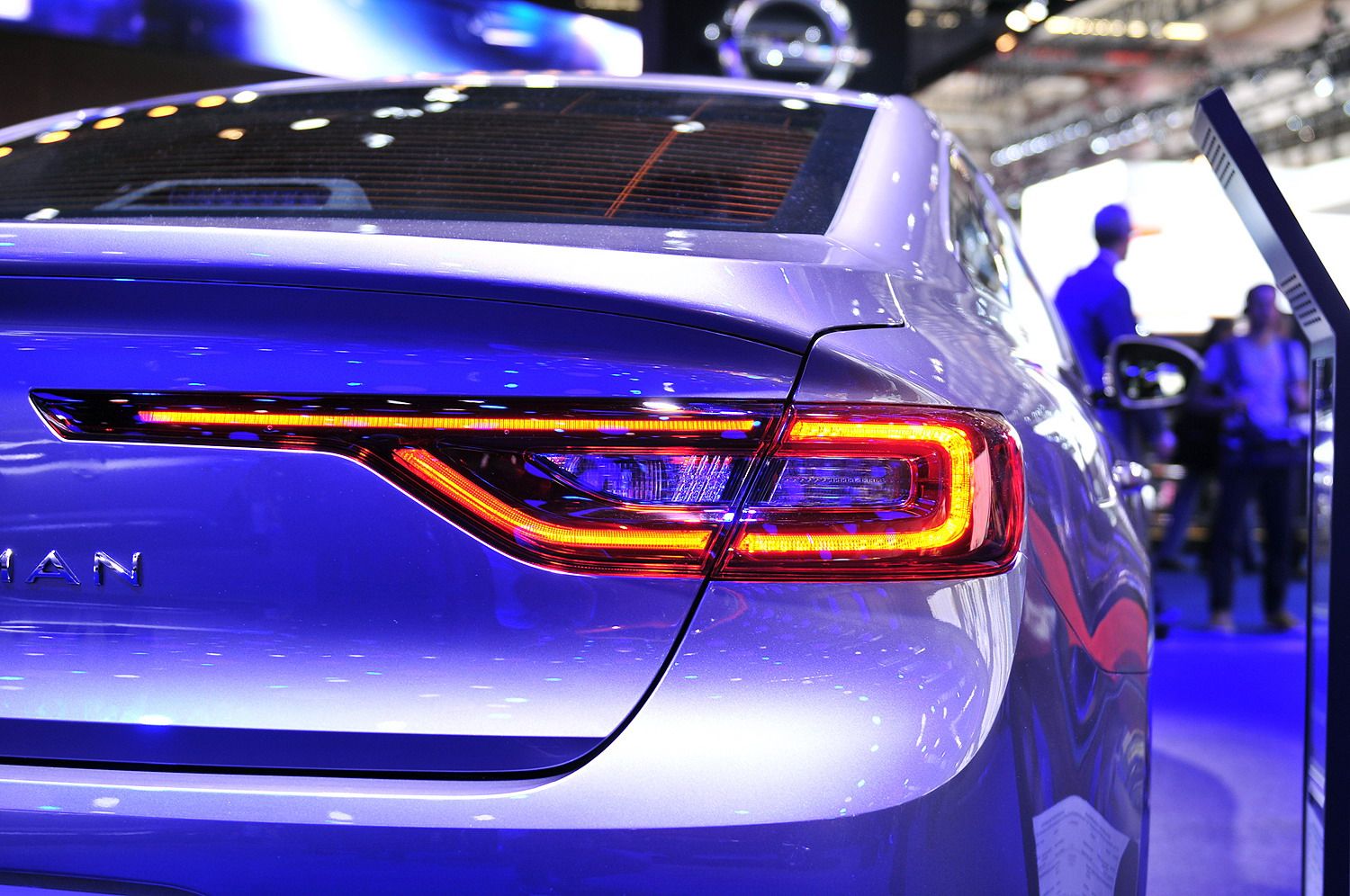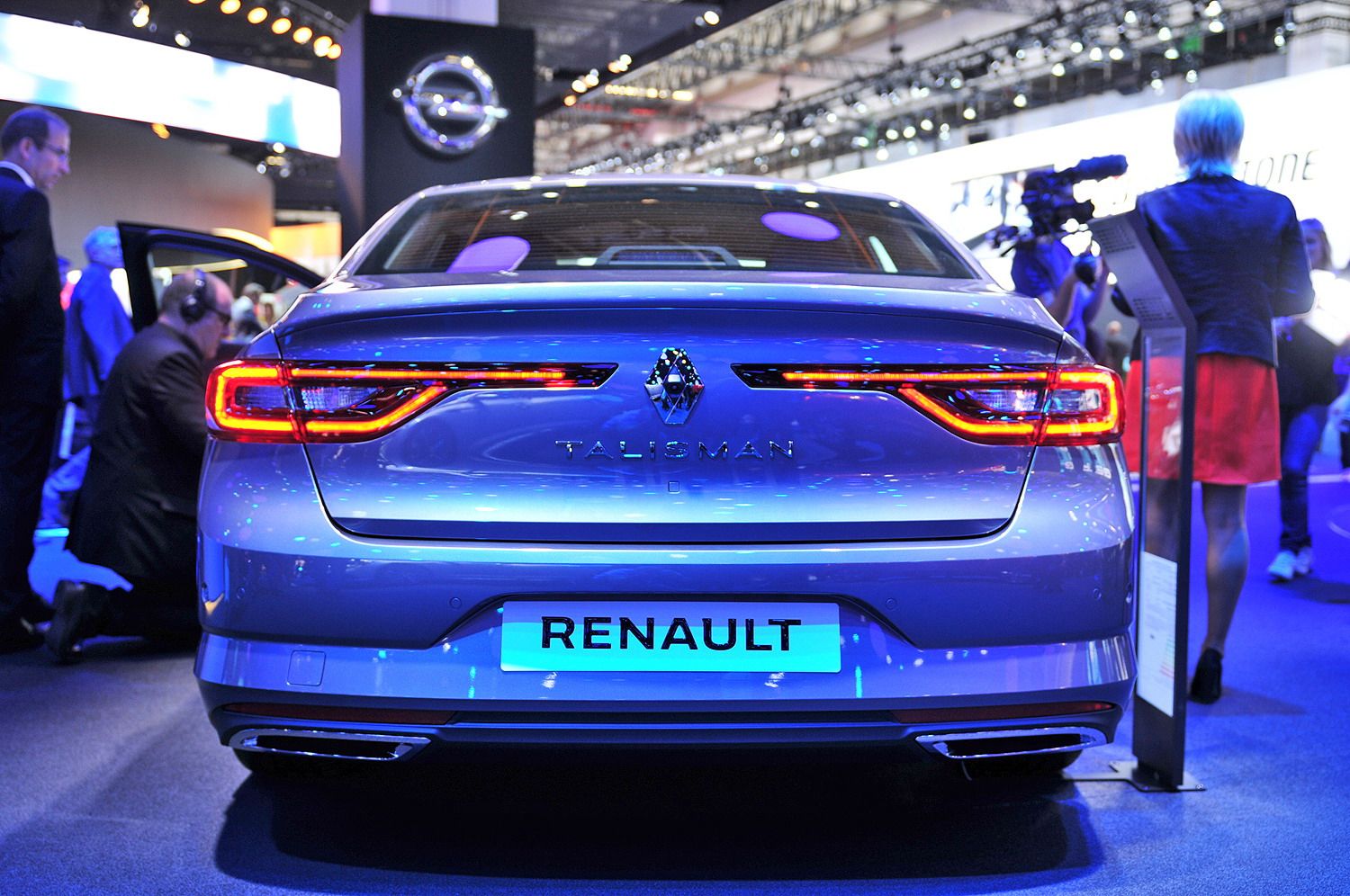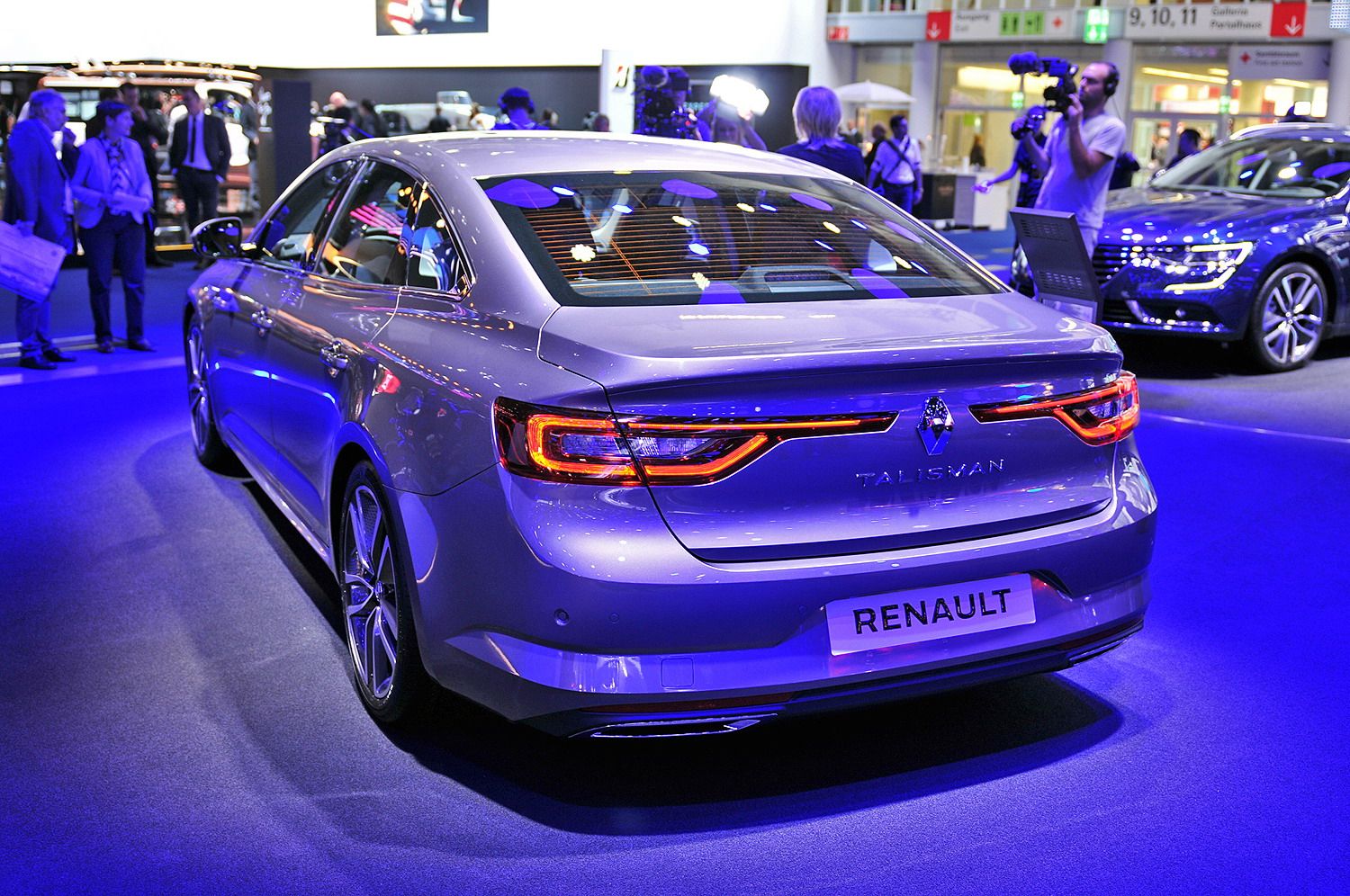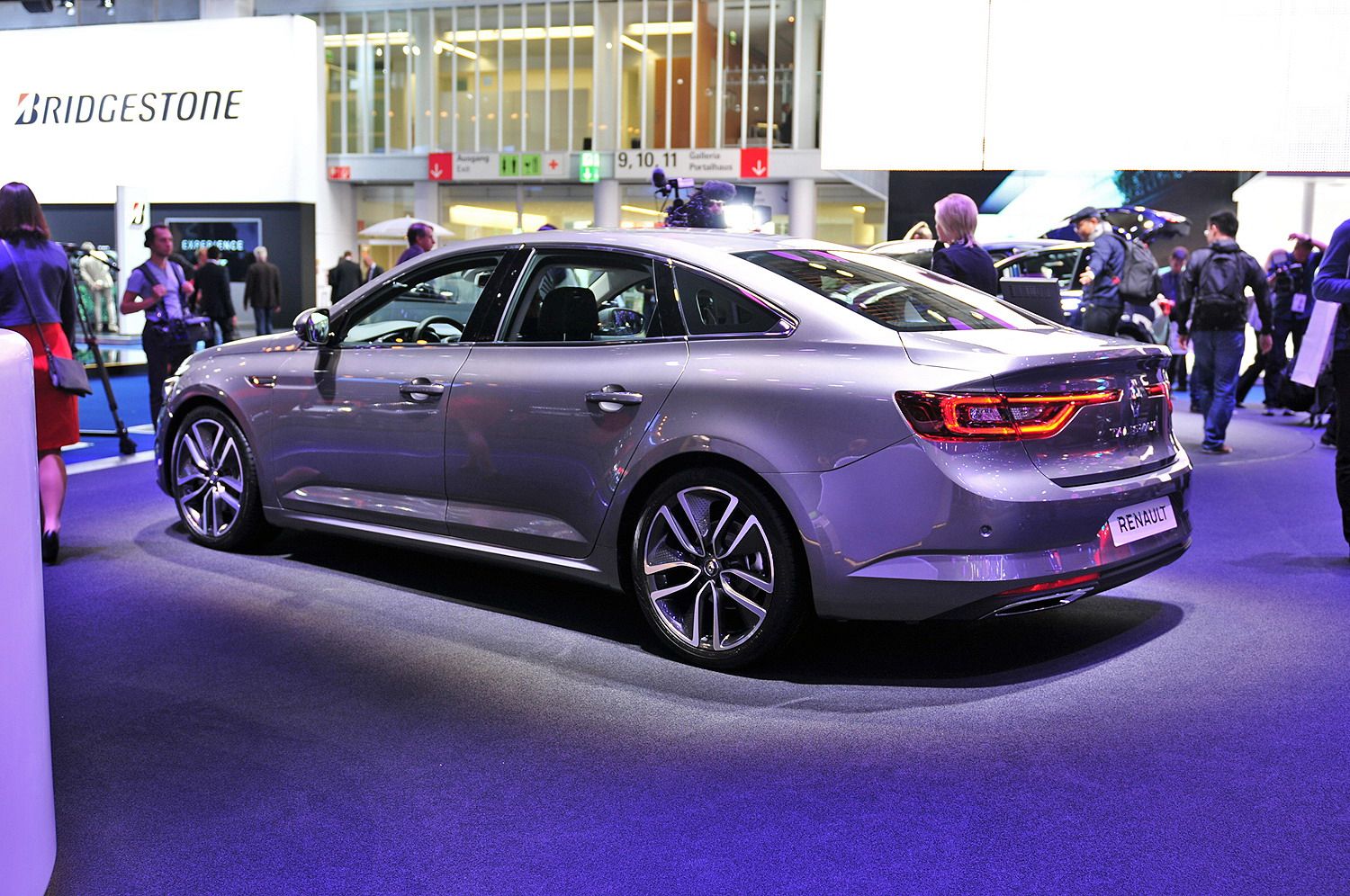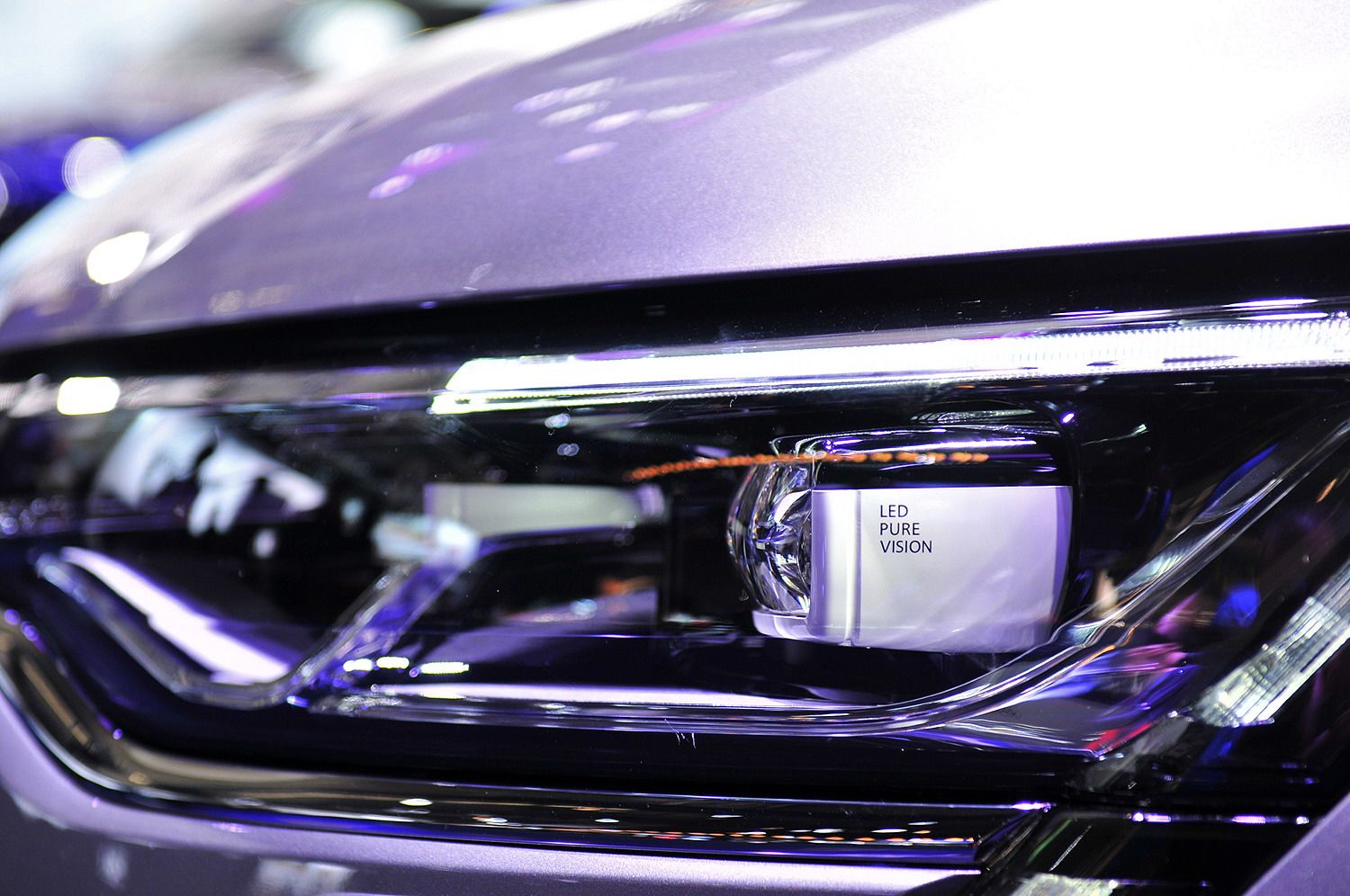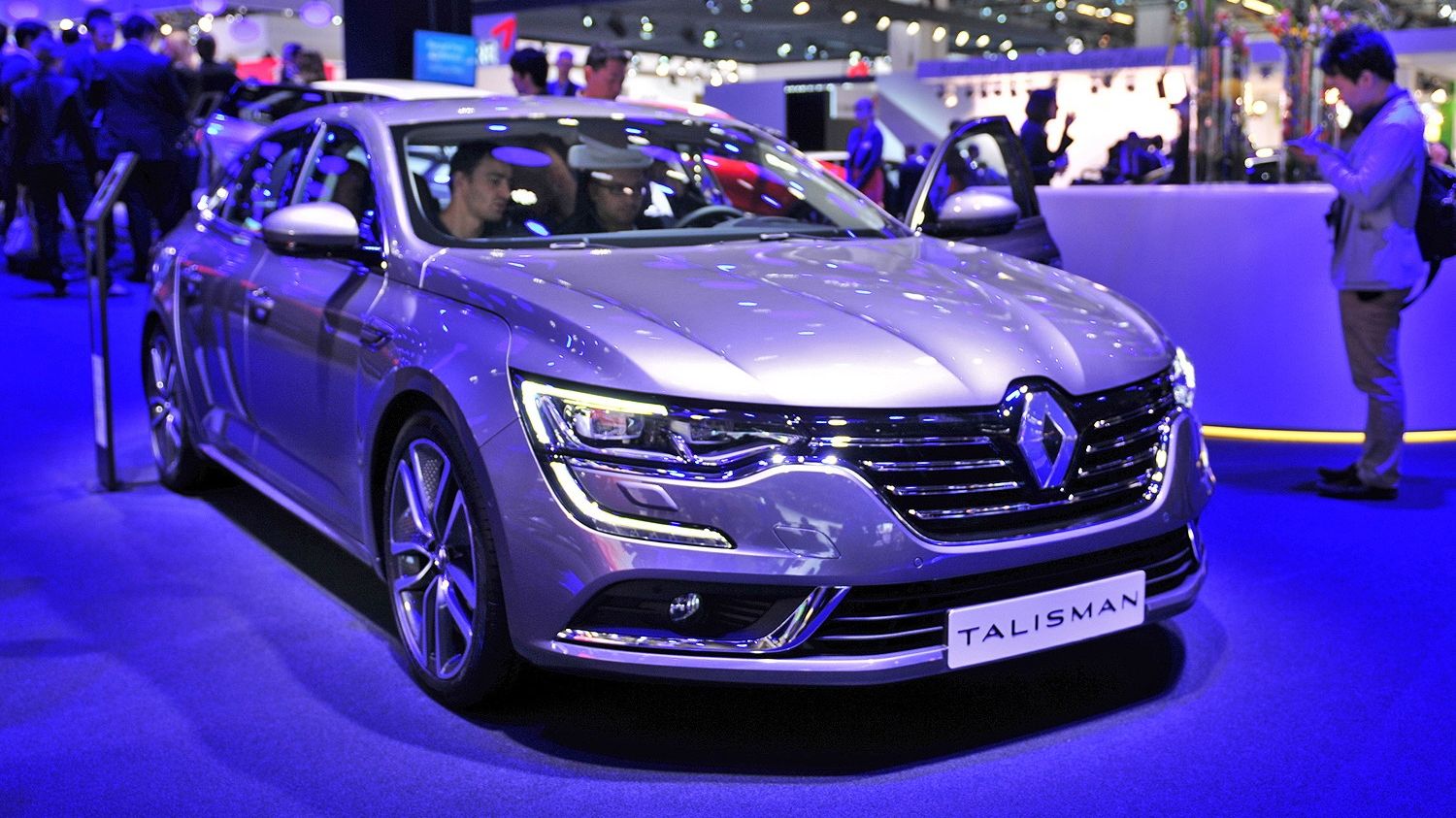The Renault Laguna->ke1736 was struggling in the sales department, so Renault->ke72 had no choice but to discontinue the model and replace it with something better. That something better is the Renault Talisman sedan that debuted at the 2015 Frankfurt Moor Show->ke235 as a 2016 model. The car had a very stylish and sculpted body that boasted a muscular hood, unique headlight and taillight design, a grille with floating slats, and a side profile that screams luxury. On the inside, the Talisman has every intention of outgoing its German rivals in the luxury sedan->ke142 with a heads-up display unit, large, vertically oriented infotainment screen, simplistic instrument cluster, and an almost-flat-bottom steering wheel. Being sold in Europe and South Korea, the Talisman has a number of small-displacement (2.0-liter and smaller) gasoline and diesel engines. The diesel engines are limited to Europe, while South Korea is offered a 2.0-liter that runs on natural gas. Horsepower figures range anywhere between 110 horsepower all the way up to 200 ponies.
Luckily, when Renault chose to go with the “Talisman” name, it didn’t try to follow the design cues of the Renault Talisman Concept from 2001. That thing was downright ugly and probably would have flopped before the first car rolled of the line. With that said, Renault did a great job on the Talisman production model and from the look of things is surely posing some stiff competition for manufacturers like BMW->ke178, Volkswagen->ke94, and Audi->ke14.
We’ve put together a full review of Renault’s newest sedan below, so it’s time you took a look at all the facts and details yourself – there’s plenty more to learn about this new family hauler.
Updated 09/24/2015: We’ve added a series of new photos we took at the 2015 Frankfurt Motor Show. Find them in the "Pictures" tab.
Continue reading to learn more about the Renault Talisman.
renault-talisman
- Make: Array
- Model: renault-talisman
2016 Renault Talisman
- Make: Array
- Model: 2016 Renault Talisman
- [do not use] Vehicle Model: Array
Exterior
Visually, the Talisman is not exactly a radical new take on current four-door design practices. Renault says it went with a “three-box body style,” with a back-to-the-basics approach for a handsome, one-third/two-thirds ratio and proportions that give the kind of balance you’d expect for a modern sedan. It might not be entirely divergent from what you see coming from the competition, but that means it’s hard to find fault in its lines and looks.
Dimensionally, the Talisman is 15.91 feet long and 6.14 feet wide, making it slightly shorter but wider than the Passat. That means it’s decently large, offering good interior space and road presence in the process.
Height comes in at 4.79 feet, while Renault says it gave consideration to ground clearance. The wheelbase is 9.22 feet long. The hood line is nicely shaped with Renault’s signature styling creases, while big wheels in the corners fill the arches.
Details in the front include the current crop of Renault styling cues, with the lines used resembling those also seen in the new Megane. To help up its top-shelf perception, Renault made heavy use of chrome in the grille, lighting accents and badge. C-shaped daytime running lamps can be seen in the headlights, which visually connect to accents underneath, with opposing accents near the corner fog lamps. LED technology is available.
More chrome is used for the window surrounds, including the third window behind the C-pillar. A nice arrow-shaped detail is found in the front fenders, offset by a depression in the front doors, which ties-in nicely with the busy front end.
The rear uses a variety of horizontal lines to emphasize the car’s width, with broad shoulders and taillights that extend into the center of the trunk. These units incorporate a 3D-effect for lighting, and are always on, even during the day.
As for body color choices, there are several metallic and one non-metallic finishes available. The metallic options include Pearlescent White, Dune Beige, Cosmos Blue, Vison Brown, Cassiopée Grey, Platine Grey, Etoilé Black and Carmin Red. The non-metallic option is Glacier White.
Depending on the market, there is also a variety of designs available for the alloy wheels, including 16-inch Sequence wheels, 17-inch Bayadere wheels, 18-inch Erbé Grey diamond-effect Duetto wheels and 19-inch Erbé Grey diamond-effect Alizarine wheels.
Exterior Dimensions
|
Length |
4,850 MM (190.94 Inches) |
|
Width |
1,870 MM (73.62 Inches) |
|
Height |
1,460 MM (57.48 Inches) |
|
Wheelbase |
2,810 MM (110.62 Inches) |
Interior
Appropriately, the theme of upscale quality sees a continuation in the interior, with soft-touch materials, premium trim and a good amount of room, both for occupants and stowage.
Renault makes a claim to being the best in-segment in a few different areas. For headroom, there’s 35.5 inches between the seat cushion and the roof, with the rear coming in at 33.7 inches. Rear knee room is measured at 10.3 inches.
The center console is wide, offering a good degree of separation between the driver and passenger seats.
For stowage, the Talisman offers a total of 0.88 cubic foot of space around the cabin, something Renault claims to be best-in-class. This includes a large glove box, door bins, big cup holders, space beneath the central armrest and a custom tray up front for a smartphone or keys. On models equipped with the EDC transmission, there’s even a chilled compartment that holds a half-liter beverage bottle.
In back, the trunk is capable of swallowing 21.47-cubic feet of stuff, which is enough space for up to four golf bags.
OK, so it’s roomy. What makes it unique?
When approached by the car’s owner, the Talisman welcomes her by switching on the daytime running lights, taillights and interior roof light, while the door mirrors deploy and down-facing lights illuminate the space around the door. When the driver opens the door, an audio and visual animation is played on the main display while the seat slides back (for models equipped with electric seats) to ease ingress. Once sat in, the seat returns to the original position.
Renault says the seats were designed wide to mimic the business class of an airline. They have integrated ventilation, 10-way adjustability, four-way electrically adjustable lumbar support, six-way adjustable headrests, heated cushions and backs, massage function with adjustable intensity and programs, and memory function for up to six individual profiles.
There’s seating for five, with the rear three-person bench splitting into a 60/40 position for longer items like skis. The outer rear seats use a rotating headrest to free-up rearward visibility.
Now for the technology side of things. The Talisman offers R-Link 2, Renault’s infotainment system, which is equipped with several different-sized touchscreens. The usual controls are used, including pinch and zoom, page scrolling and drag-and-drop, all of which was designed to mimic a tablet. There’s also voice command, with stuff like navigation, phone integration, app support, media support and text message display rounding out the feature list.
Various controls are extended to the central console and the steering wheel. The infotainment system is customizable, including settings for available icons on the homepage, preferred language, seating position, door mirror position, heads-up display, radio preselects, nav system destinations and lighting ambience.
In-car apps include Coyote alerts (which warn of safety cameras, danger hotspots and accidents), three Michelin apps for hotels, restaurants and travel, fuel prices, and text-to-audio email reading.
Finally, there’s Bluetooth connectivity and several connection and charging possibilities for passengers in the front and the rear.
Drivetrain
When it came to powering the Talisman, it seems as though Renault went the way of efficiency rather than performance, with a variety of small-displacement gas and diesel powerplants and a low, 0.27 drag coefficient. In total, customers can choose between two gas engines and three diesel engines.
Included is the Energy TCe 200 gas unit, plus Energy dCi 160 and Energy dCi 130 oil burners also found in the new Renault Espace. There’s also an Energy TCe 150 gasoline engine and Energy dCi 110 engine.
The gasoline units are mated exclusively to a seven-speed, dual-clutch EDC automatic transmission, while the diesels get either a six-speed manual or six-speed dual-clutch EDC gearbox.
The twin-turbo Energy dCi 160 will be mated exclusively to the six-speed EDC auto box, just like the new Espace. Each engine is turbocharged, uses stop/start technology, and comes with braking energy reclamation (there’s currently no word on the particulars of the braking energy reclamation system).
Exact specs have yet to be released, but Renault says each will have low running costs, emissions, and fuel consumption. It’s also believed the new Talisman will come with 4Control, Renault’s four-wheel steering system, as well as active dampers for on-the-fly adjustment between a variety of driving presets (Comfort, Sport etc.).
Prices
Renault hasn't given us exact pricing on the new Talisman. It’s expected the numbers will be revealed closer to the car’s official launch at this year’s Frankfurt Motor Show->ke235 on September 17th. After release in Europe, the Talisman will go on sale in Turkey and North African markets.
For now, we know there will be three interior trim levels and five equipment levels to choose from (each may vary depending on the market).
First up in the equipment lineup is the Life level, which comes with a black dash, leather-trimmed steering wheel and black fabric seats. Next is the Zen, which has the same appointments as the Life level but comes in lighter-colored trim. Then there’s the Business level, which has the same “ambience” as the Zen but throws in unspecified additional equipment.
The Intens level includes combined fabric/semi-leather seats, or optional dark brown or black Riviera leather upholstery, with a matching dashboard and chocolate-brown top-stitching. Finally, there’s the top-level Initiale Paris, which has a black or sand grey dashboard with dark charcoal or silver top-stitching, Nappa full-grain leather upholstery in either a graded grey pattern or solid black, laminated side windows for reduced NVH, badging on the inside door sills, decorative trim on the headrests, exclusive carpet mats and a Nappa leather-trimmed steering wheel.
On the outside, the Initiale Paris version also includes the Améthyste Black paint option, 19-inch black diamond-effect wheels, new badging and door mirrors that angle downwards when reversing.
Meanwhile, the equipment spec starts with a 4.2-inch display and top-end digital radio. The intermediate level includes a 7-inch landscape layout touchscreen and Bose Surround Sound stereo. The top-end level replaces the 7-inch display with an 8.7-inch portrait layout display.
Competition
2015 Volkswagen Passat
Here’s the deal – the new Talisman is a lot like the Passat.->ke224 Both are large four-doors with roomy interiors and the gloss of luxury. Like the Talisman, the Passat won’t really stand out in a crowd of sedans or win any performance contests, but it will make the driver feel as though she is driving something upscale without burning through too much of the savings account. The engine choices are economical, while the interior is lush and laden with technology. The VW,->ke94 however, has been around for a lot longer, now in its eighth design generation. Clearly, the Talisman is aimed at this German mainstay. The only question is if it can overcome it.
Read our full review here.
2016 Audi A4
When it comes to established high-end sedans, Audi’s->ke14 A4->ke1087 is one of the best. The model first saw daylight in 1994, and is currently offered in both FWD and AWD variants. The interior is nicely appointed, with a wide range of standard equipment and high-quality materials. Engine options include both gasoline and diesel choices, with more performance on hand than what’s expected from Renault. It might look a bit dated on the outside, but the A4 is still a solid choice in this segment.
Read our full review here.
Conclusion
Renault says it chose the Talisman nameplate because is invokes a feeling of “protection and power” while still being easy to pronounce and understand all over the world.
This speaks to Renault’s intentions to offer a car with extremely broad appeal, as mirrored in its large exterior proportions, simple styling, roomy interior and large range of options.
A replacement for the Laguna has actually been in the works for some time now, with the automaker telling the U.K.-based publication Autocar back in 2013 that the new model would need to be more adventurous and utilize styling that was both “fluid and emotional.”
I don’t know if those are the adjectives I’d use to describe the Talisman, but I do think Renault is onto something. It seems to tick all the right boxes for an upscale four-door, and it properly positioned, could do well to take on its entrenched German rivals.
Of course, that’s a big "if." The most predictive tell will come in September, when it’s expected Renault will finally reveal the car’s pricing details. If it represents good value for the money, I could see this model selling in substantial volume. If not, well… let’s just say it might be bad juju.


